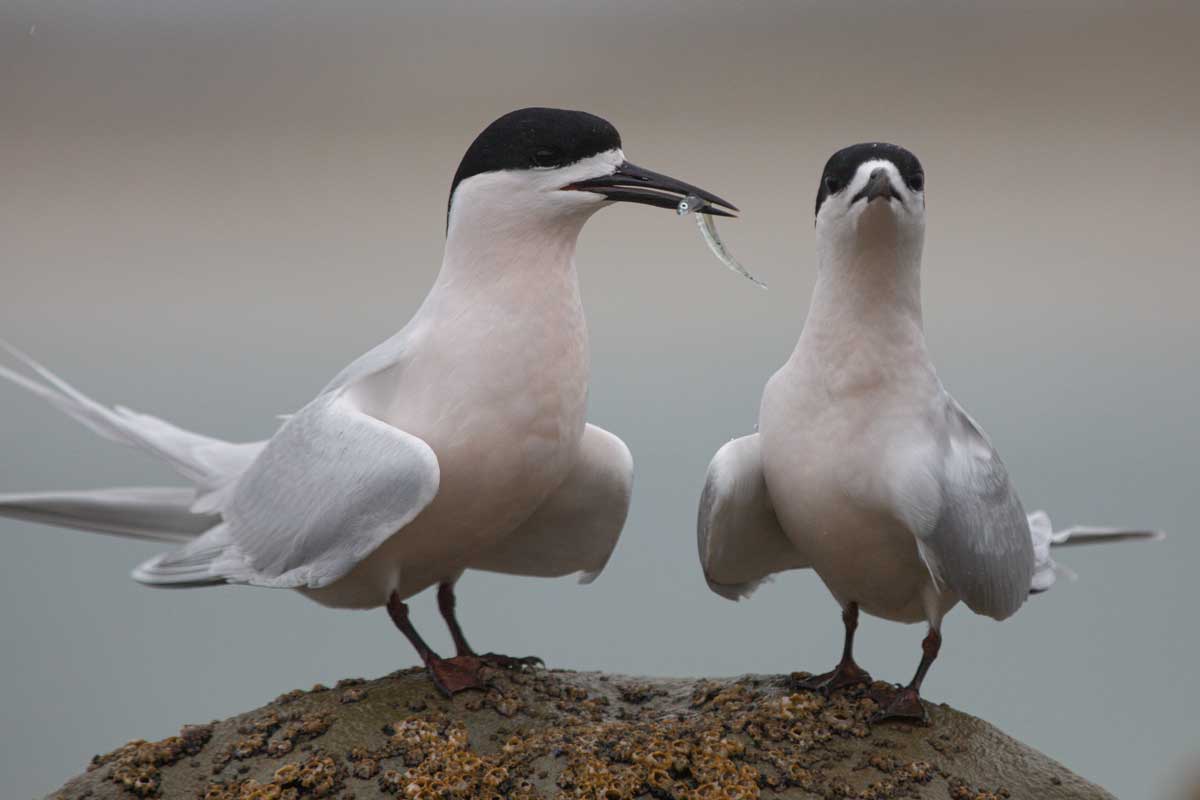
The Gulf’s Complex Web: Politicians fumble at netting simple solutions
Matt Rayner explains that allowing some fishing in proposed High Protection Areas overlooks the complex interdependencies in Gulf ecosystems.
... READ FEATURE
Matt Rayner explains that allowing some fishing in proposed High Protection Areas overlooks the complex interdependencies in Gulf ecosystems.
... READ FEATURE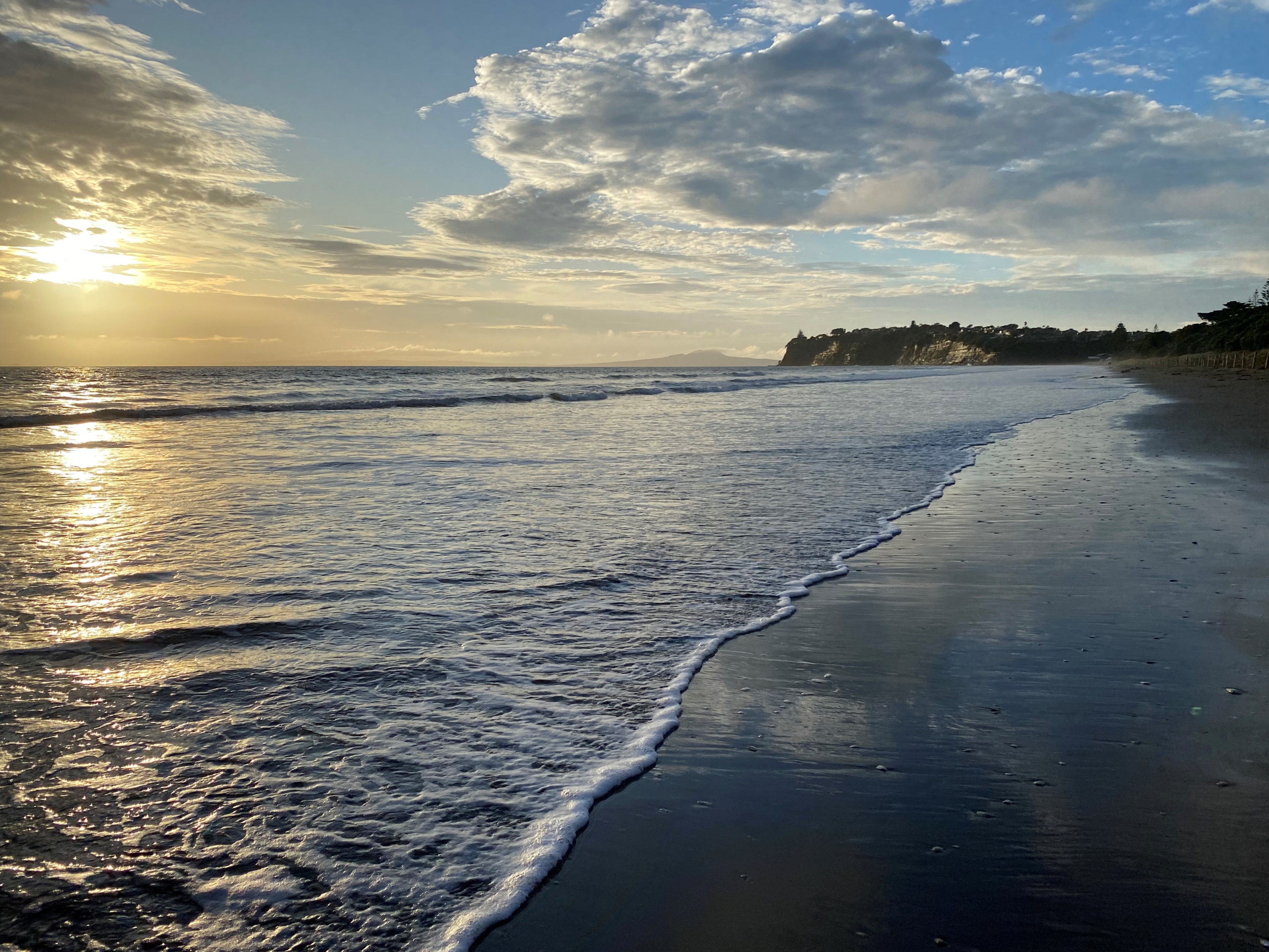
The headlines tend to inform us of our rapidly deteriorating marine environment, not reporting on the many things that are so good about the sea. But the ocean is still amazing, she is resilient and provides us with a million and one reasons to love her.
... READ FEATURE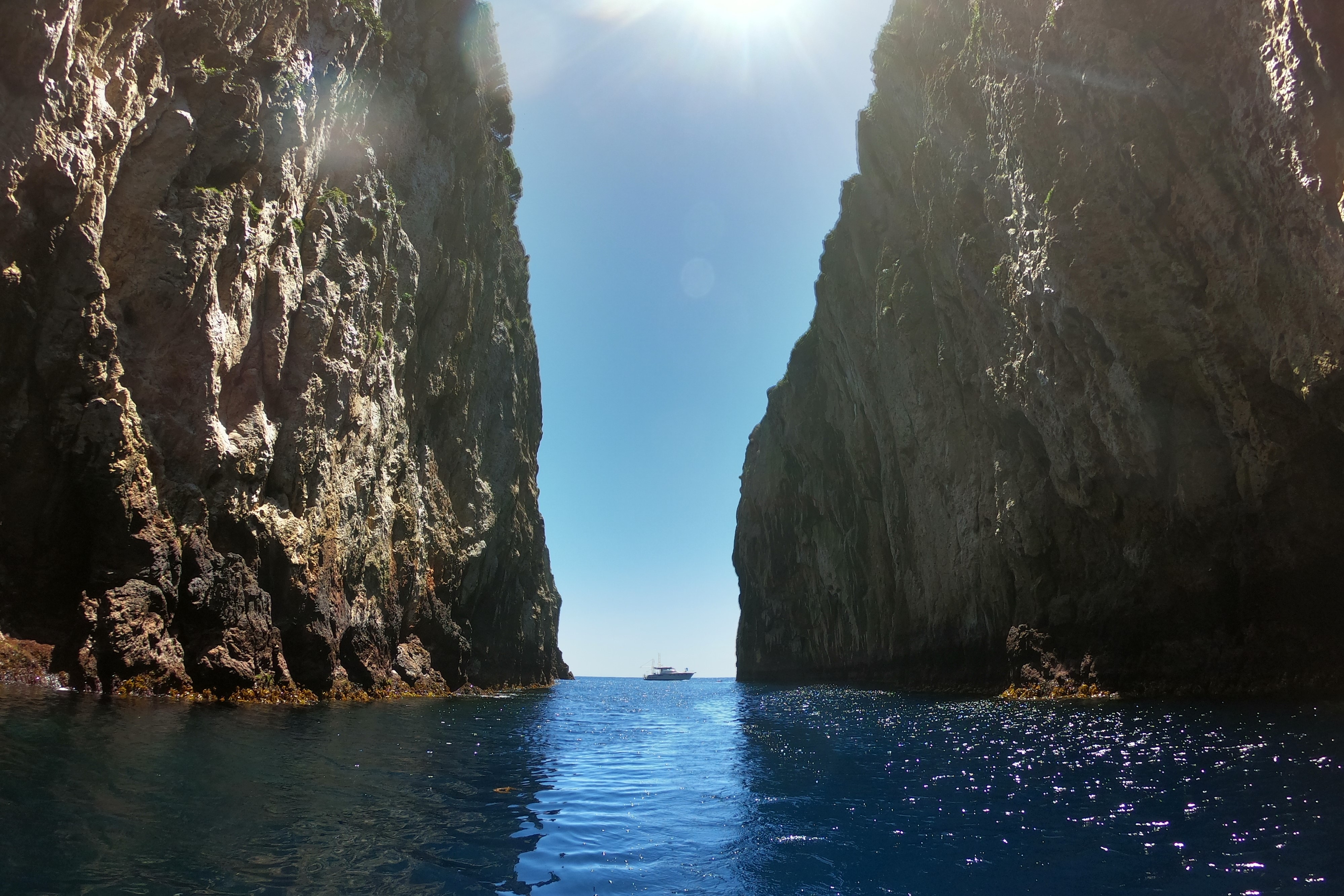
New legislative ‘tools’ have been proposed to help establish more marine protection in the Gulf. Up until 28 October you can share your feedback with DOC on these proposals which support the restoration and conservation of important ecosystems.
... READ FEATURE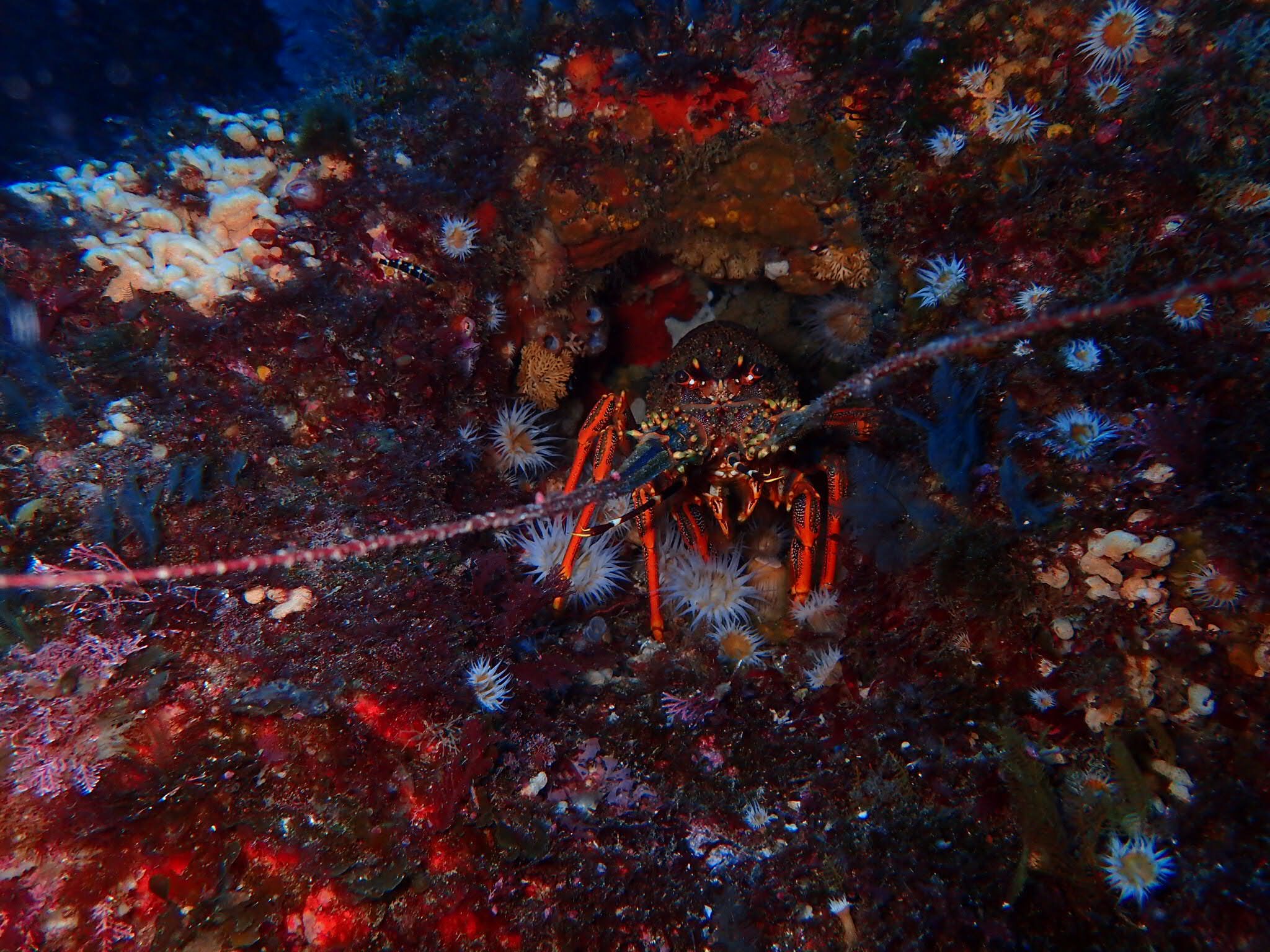
Long term monitoring data provides insight into declining crayfish numbers in the Hauraki Gulf marine reserves.
... READ FEATURE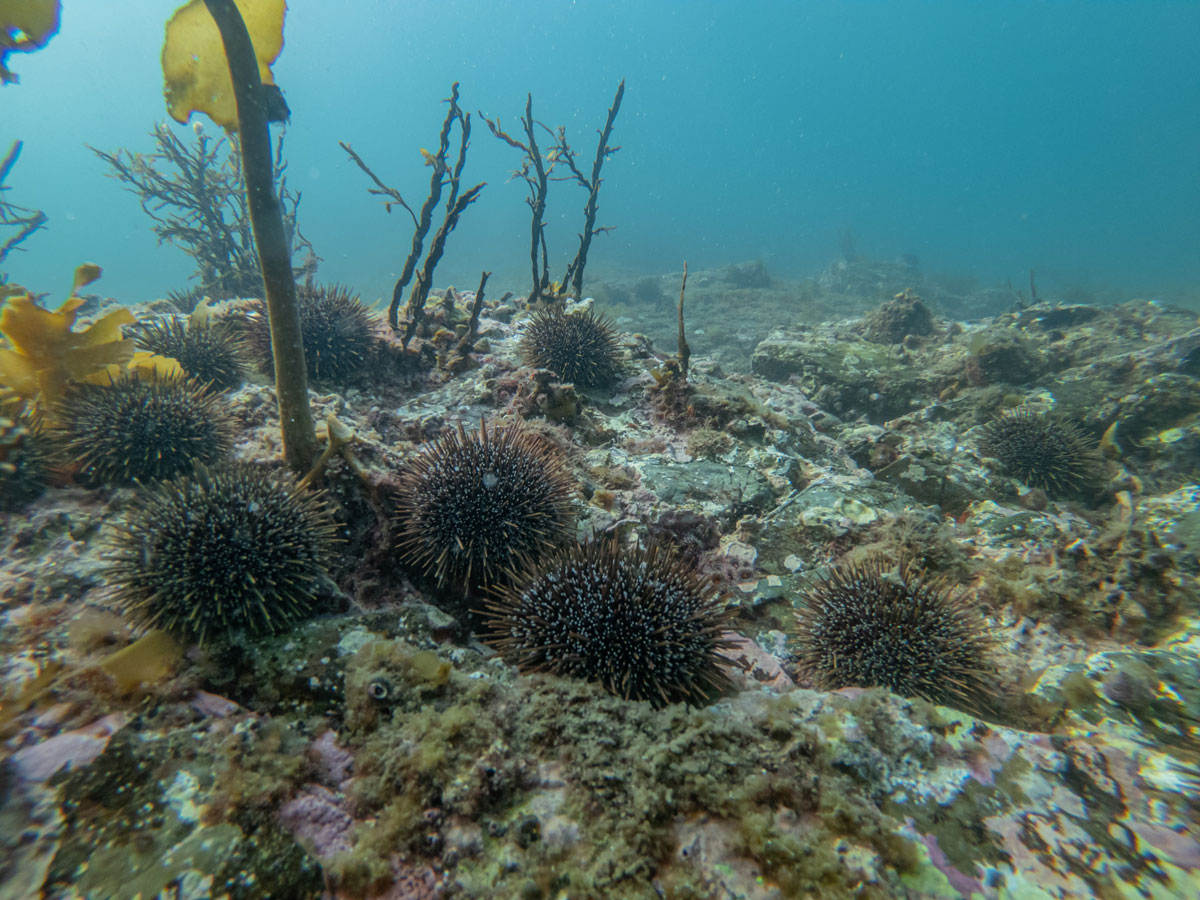
Kelp – a collective term for large brown algae species […]
... READ FEATURE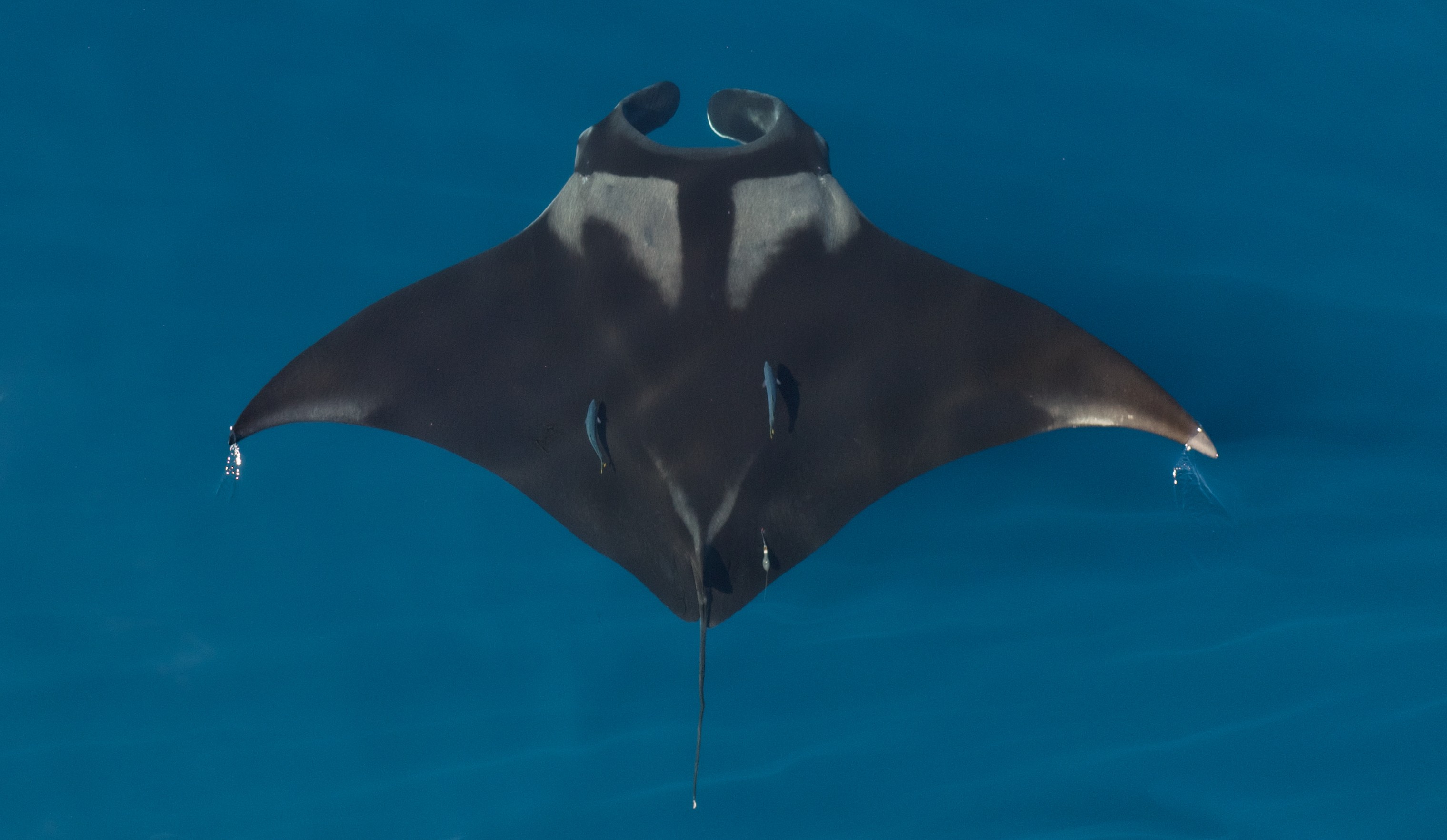
The metaphorical phrase ‘finding a needle in a haystack’ has […]
... READ FEATURE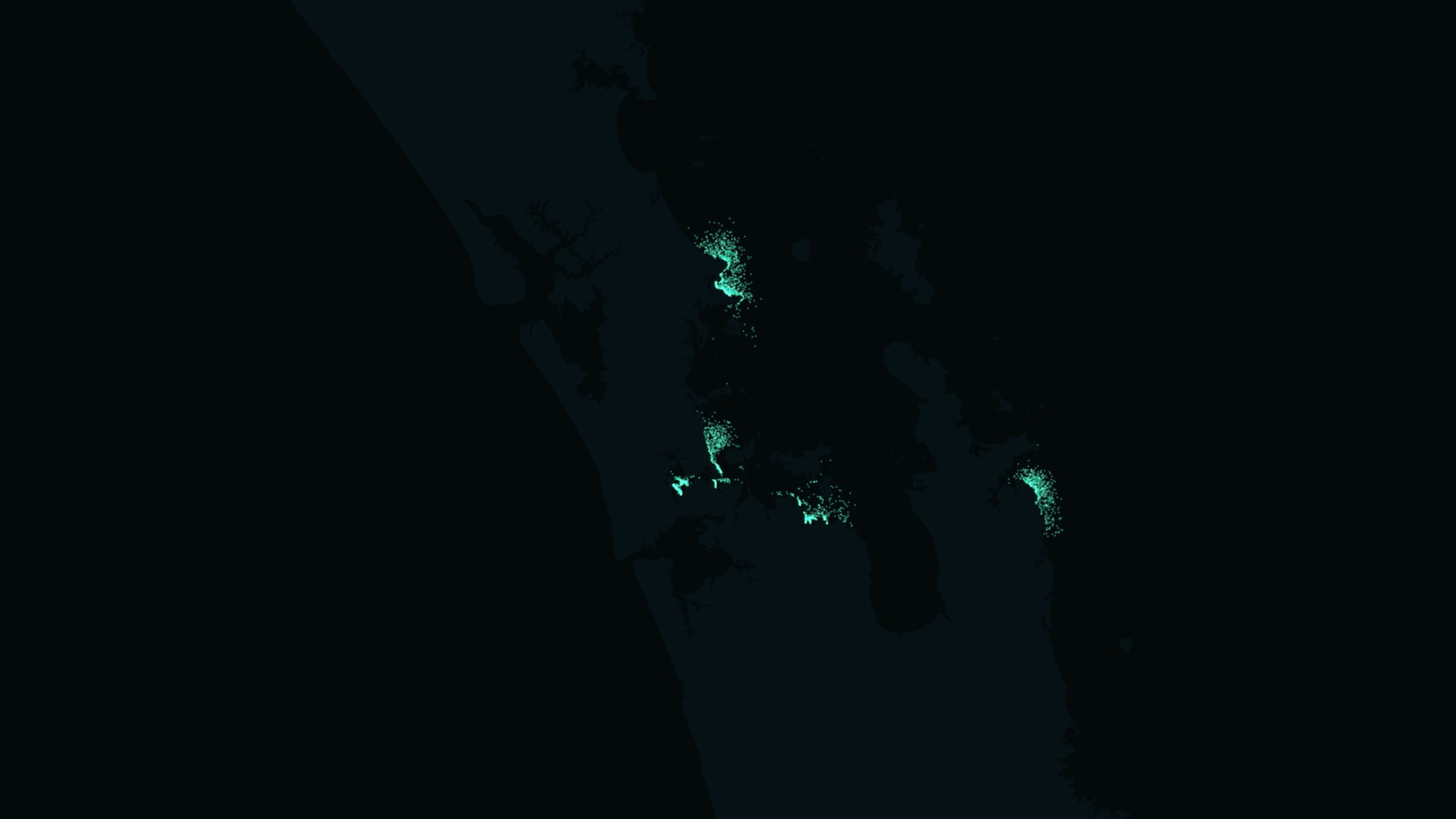
Shaun Lee shows how the Gulf and everyones mahi to fix it are connected through the movement of larvae.
... READ FEATURE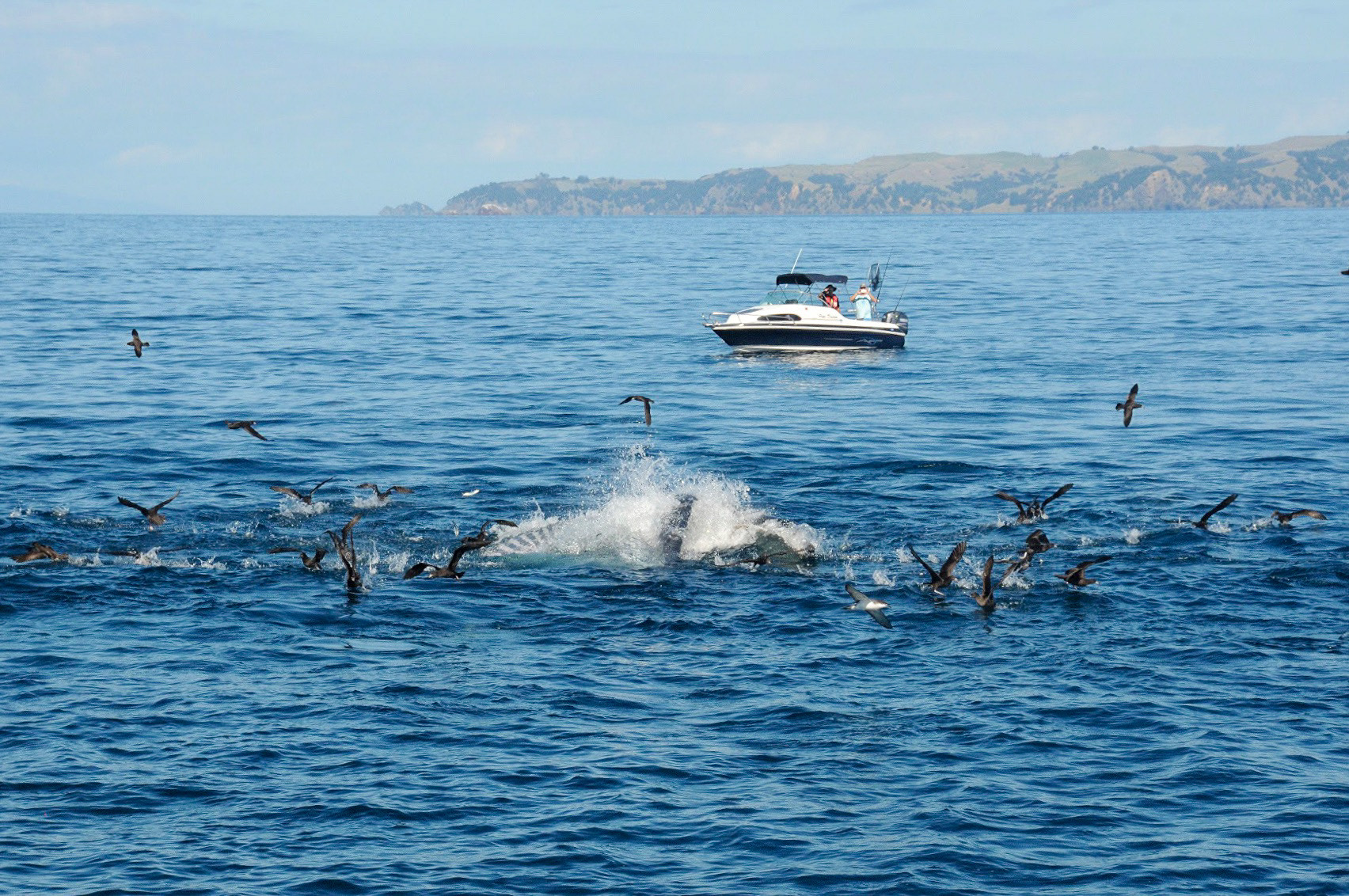
Sound travels exceptionally well in the ocean’s vast expanse, conveying […]
... READ FEATURE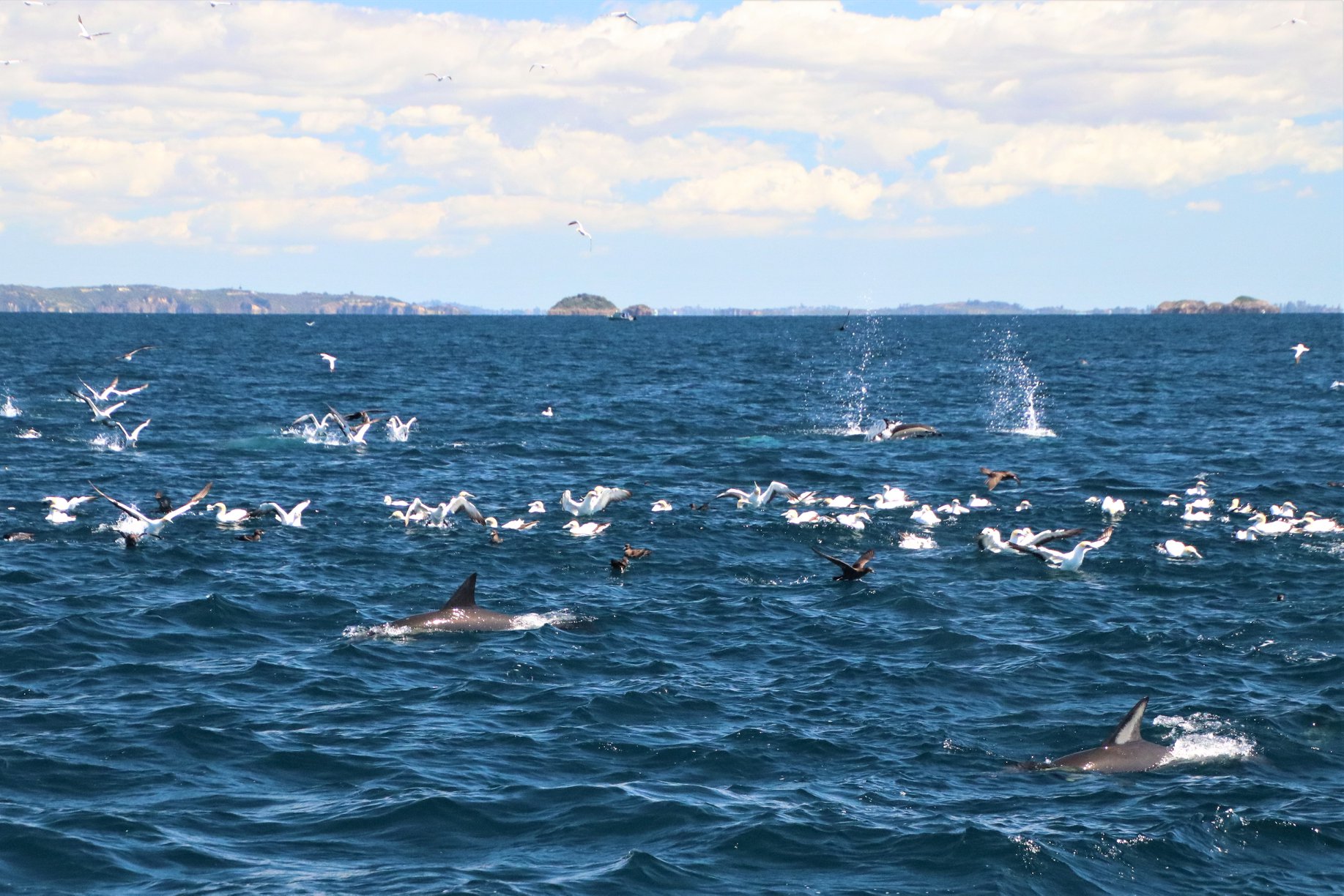
A mesmerizing sight to behold in the Marine Park, ‘workups’ […]
... READ FEATURE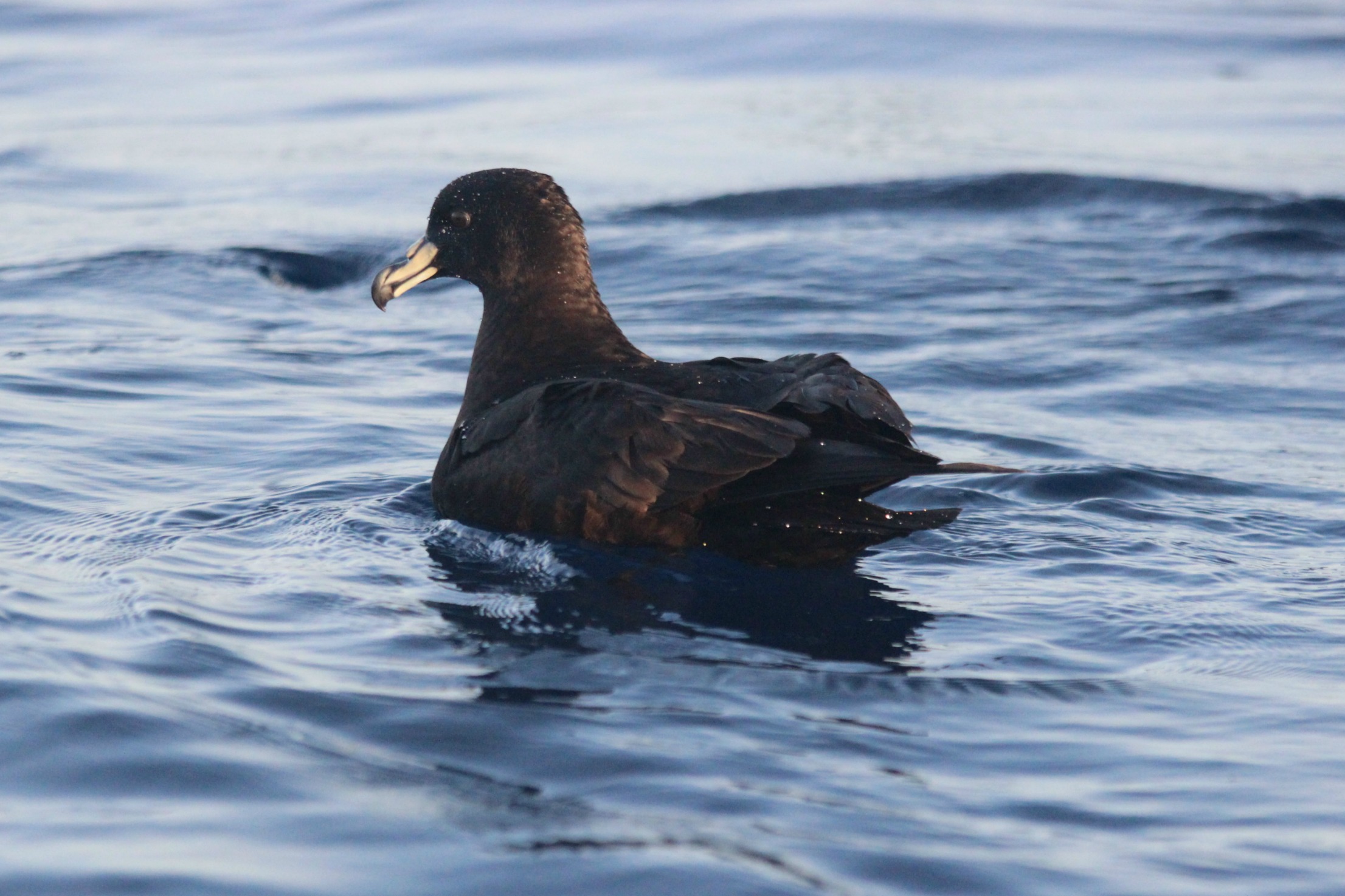
The Te Moananui-ā-Toi / Tīkapa Moana / Hauraki Gulf is […]
... READ FEATURE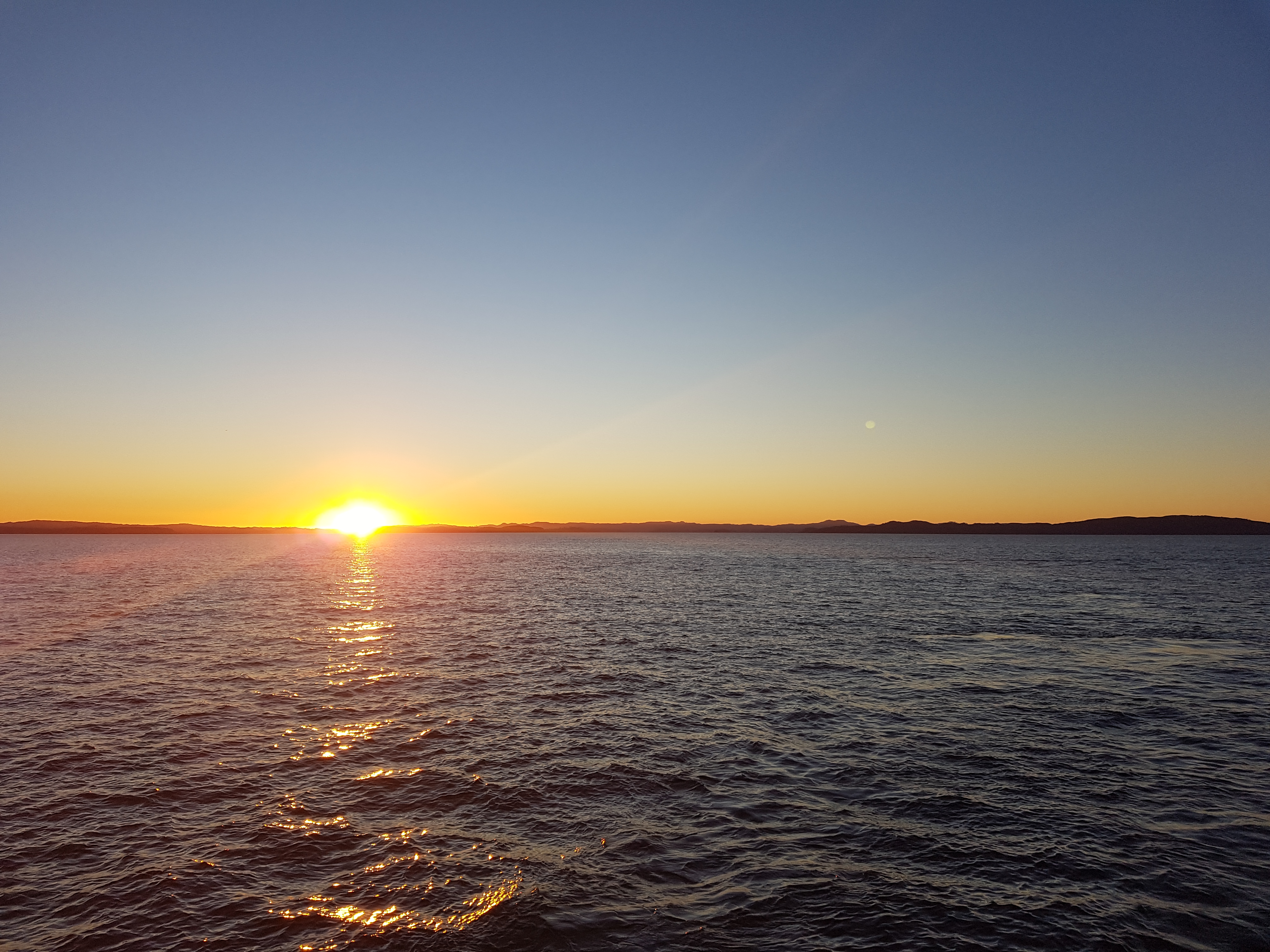
Marine heatwaves (MHWs) are defined as when seawater temperatures are […]
... READ FEATURE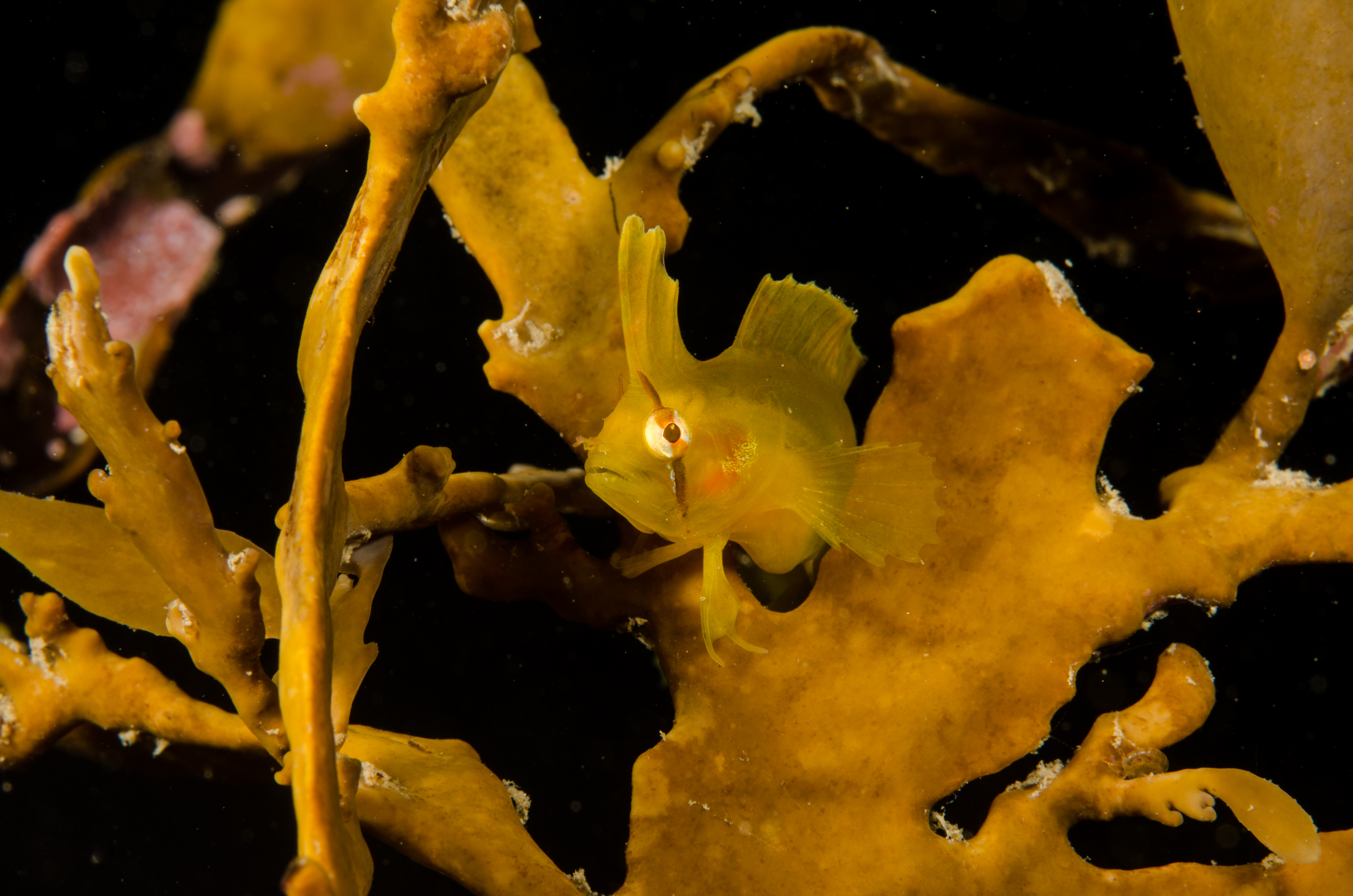
The Crested Weedfish is a skilled little predator that is […]
... READ FEATURE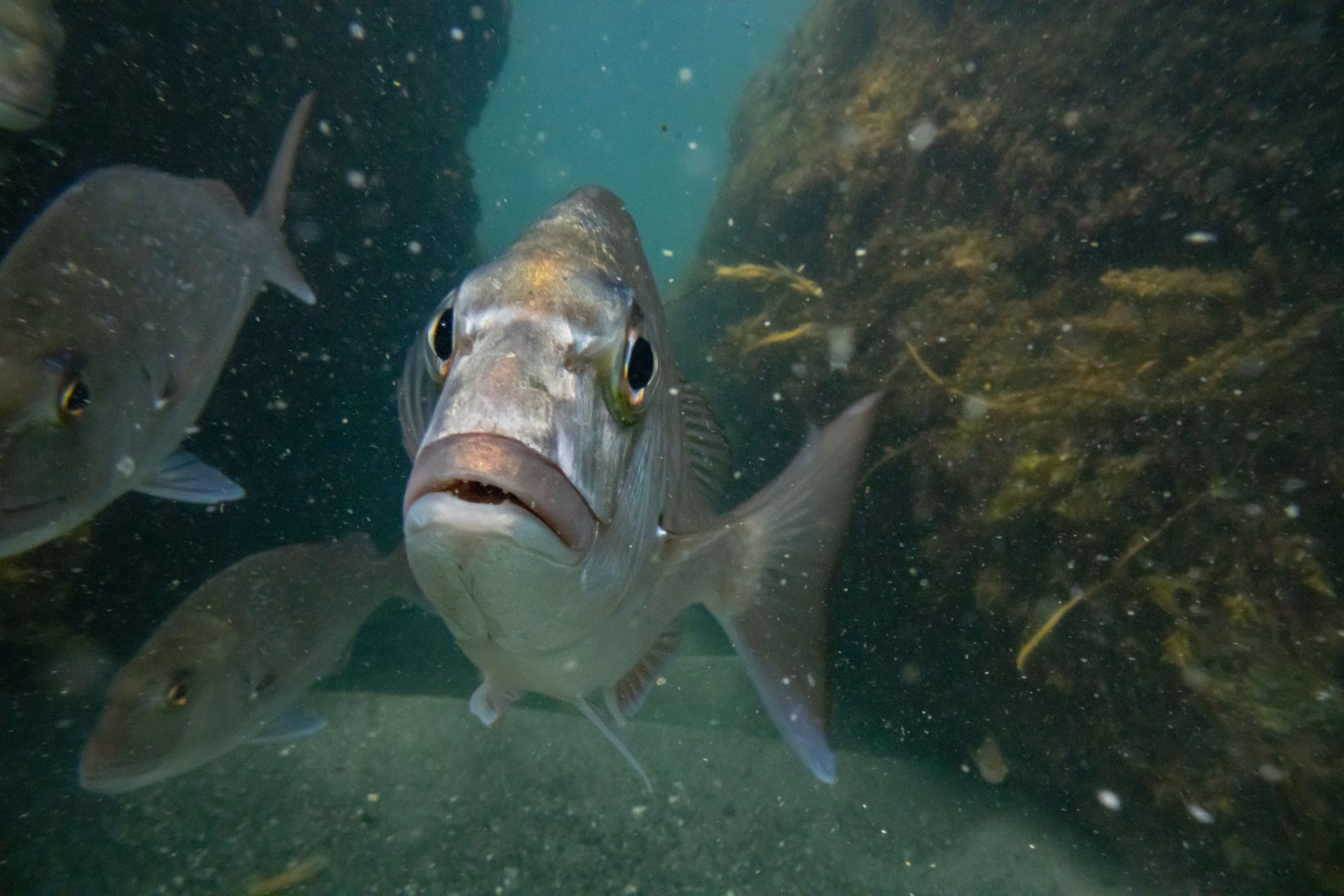
The government’s strategy, Revitalising the Gulf (or see the short […]
... READ FEATURE
Is it a gull? Is it a gannet? Is it […]
... READ FEATURE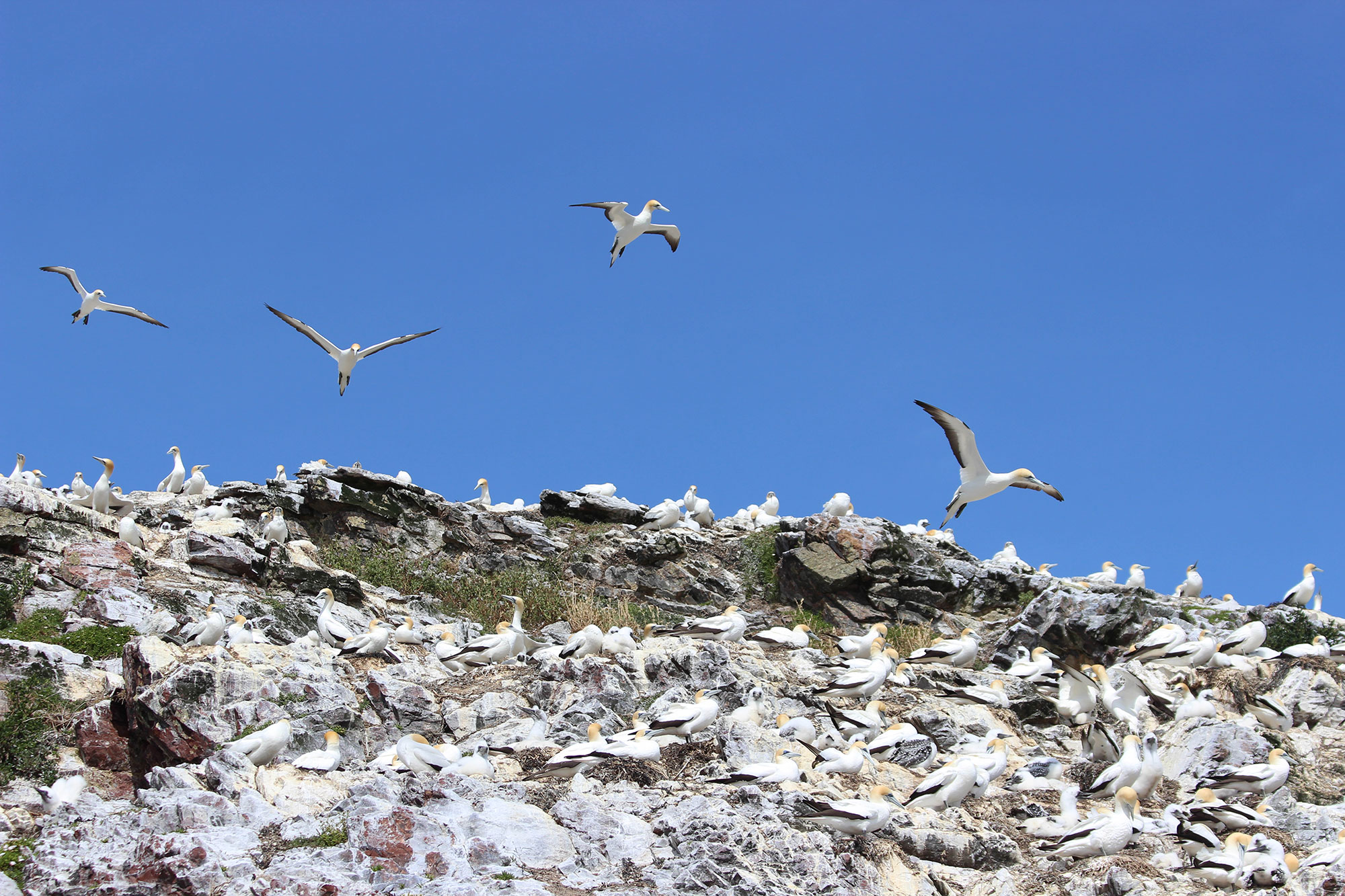
Most people would likely think of an engineer as someone […]
... READ FEATURE
This summer a series of human-shark interactions around the New […]
... READ FEATURE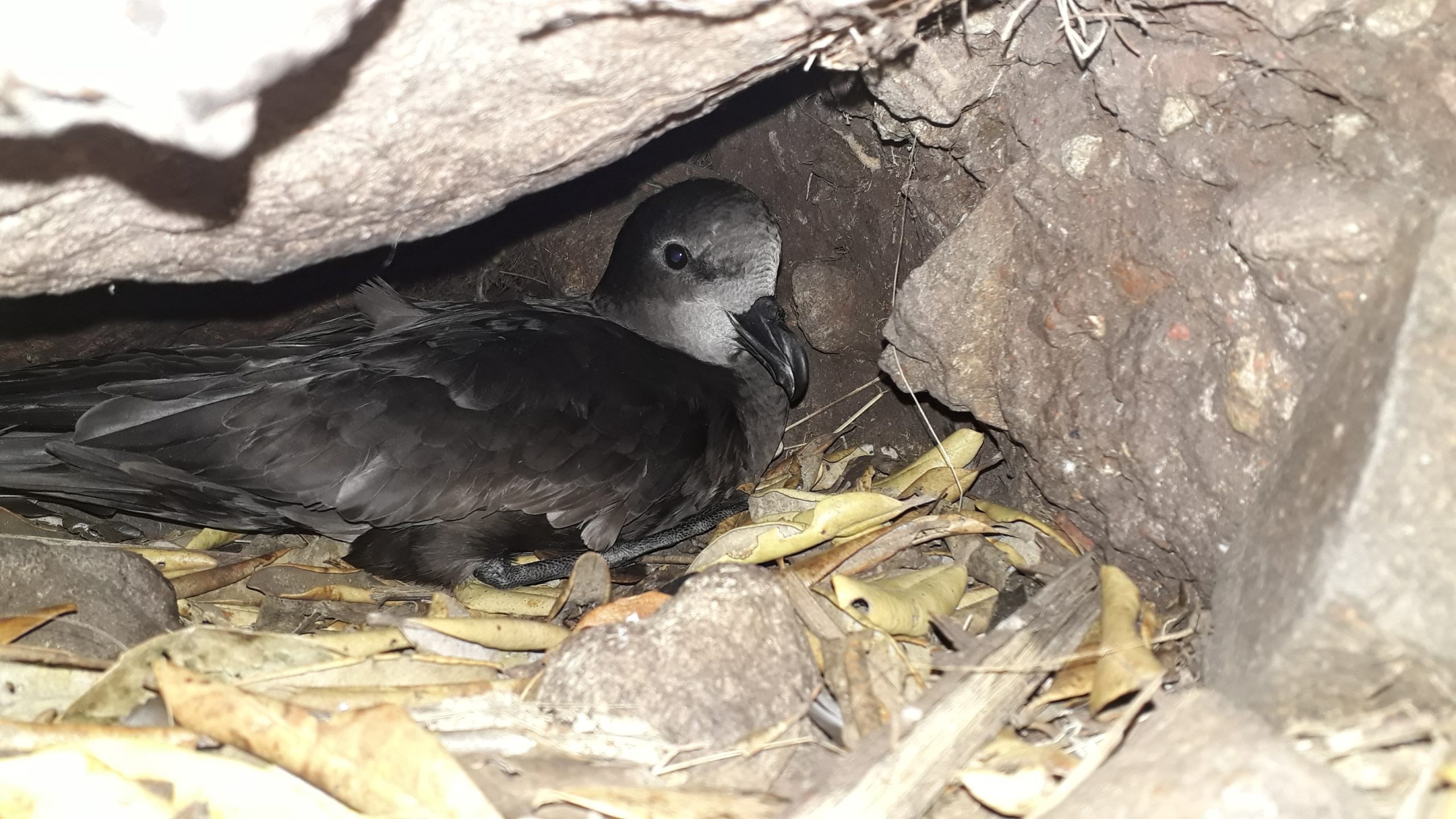
Joined at the hip with Tāmaki Makaurau / Auckland, the waters and islands of the Hauraki Gulf / Tīkapa Moana / Te Moananui-ā-toi are the breeding grounds for at least 27 species of seabirds – making it an internationally recognised seabird hotspot. 24 of these species breed within the Auckland Region, which runs from mid-Kaipara Harbour south to Karioitahi on the west coast, and from the Mangawhai Forest south to the northern Hūnua Ranges on the east coast.
Seabirds have a major influence on their surroundings and play a vital role in the functioning of the habitat around them. In the case of the Hauraki Gulf, seabirds link the land and sea. The birds come ashore and go underground, bringing marine nutrition onto the land, which in turn supports the health of the sea.
The majority of seabirds in the Auckland Region are considered ‘at risk’ or ‘threatened’ with extinction, so Auckland Council is stepping up with a seabird and shorebird monitoring and research programme – a first for local government.
The Council’s programme began in late 2018 with funding through the Natural Environment Targeted Rate. The programme aims to improve the conservation status of Auckland’s seabirds and shorebirds, and this will be accomplished by conducting much-needed monitoring to fill knowledge gaps around population health and breeding success and carrying out research relating to how the Council and its partners might go about restoring these bird populations.
The Council is collaborating with others to achieve these goals, having established partnerships with the University of Auckland, Auckland University of Technology, Auckland War Memorial Museum, Department of Conversation, the Northern New Zealand Seabird Trust, as well as various community groups keen to help out.
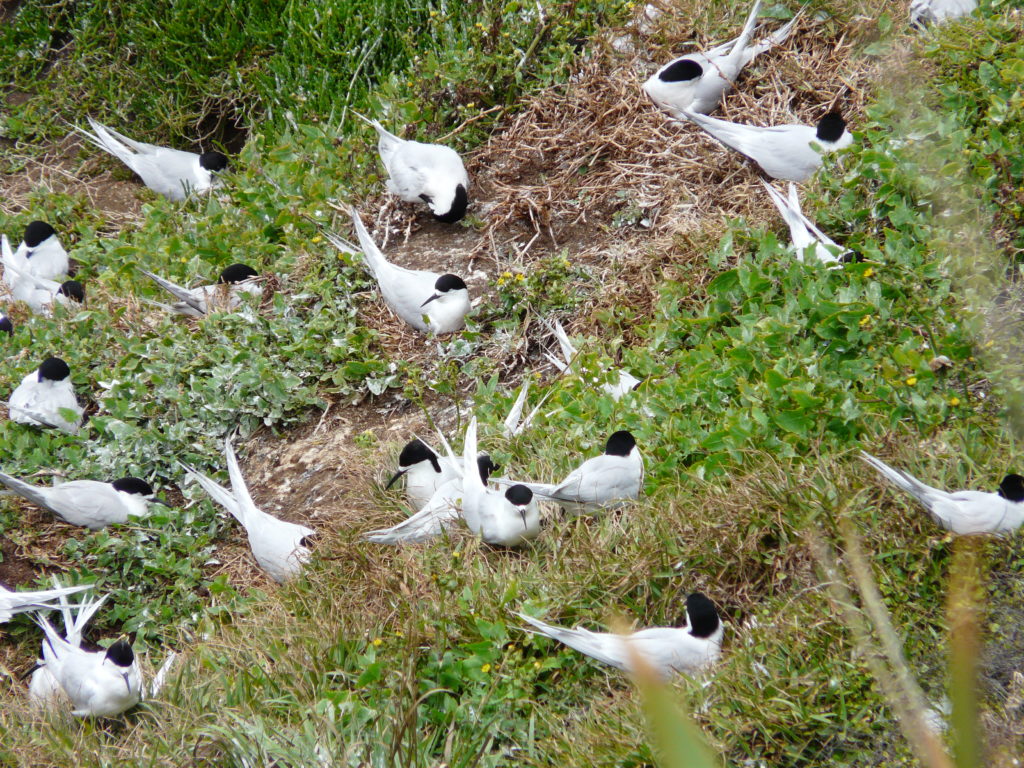
One year on, Dr Todd Landers, Senior Scientist with Auckland Council’s Research and Evaluation ‘RIMU’ Unit, reflects proudly on some of the programme’s achievements thus far. “Having a better understanding of the seabirds and shorebirds in the Auckland Region is critical to knowing what we can do to reverse the decline we’re seeing in our bird populations. Working alongside our partners, we’re filling in crucial knowledge gaps about our seabird populations, how successful they are, and what threats exist to them, which will help us develop and implement future management actions to help increase their populations to healthy, resilient levels.”
So far, the programme has included:
Species/Site Prioritisation: Species and sites were prioritised for the first phase of the programme, based on a review of existing research.
The Noises Seabird Restoration and Monitoring: A parekareka (spotted shag) restoration site has been set up on Otata Island (the largest in the Noises islands group) in collaboration with Auckland War Memorial Museum and the Noises’ landowners, where attempts are being made to establish a new colony of spotted shags using an acoustic attraction system and parekareka decoys. The acoustic system also broadcasts calls from other key species so as to attract them to this predator-free site, and monitoring of the takahikare-moana (white-faced storm petrel) is taking place on Ruapuke/Maria Island.
Motukino (Fanal) Island Programme: The Council began surveying Fanal Island (Mokohinau Group), a large island with little existing biodiversity knowledge. The survey has included classification of vegetation types, assessment of what habitats are present, and identifying some of the seabird species that might breed on the island, including potential signs of species breeding nowhere else in Auckland.
Pokohinu (Burgess) Island Programme: A seabird monitoring network is being developed on Pokohinu Island to assess all species breeding there. The first survey was completed in late 2019, which builds on the collaborative monitoring work that’s been done over the last couple years with Auckland University of Technology.
Shag Surveys: Coastal surveys for Auckland’s five shag species were conducted over a large portion of the coastline and Gulf island sites including Waiheke, Tarahiki, Pakatoa, Rotoroa, Motuihe, Kawau (and smaller surrounding islands), Motuora, and Lake Pupuke, with several active shag colonies identified which will be followed up for population and breeding success assessments.
Community Seabird Monitoring: The Council has been working with restoration groups at a number of locations in Auckland where they are trialling community-based seabird monitoring.
Dr Landers says “We hope that community participation in our monitoring programmes gives more Aucklanders the opportunity to get involved and engaged with our taonga. Our seabirds are very special and we have an incredible diversity right here in Tāmaki Makaurau. But the birds urgently need our help to recover.”
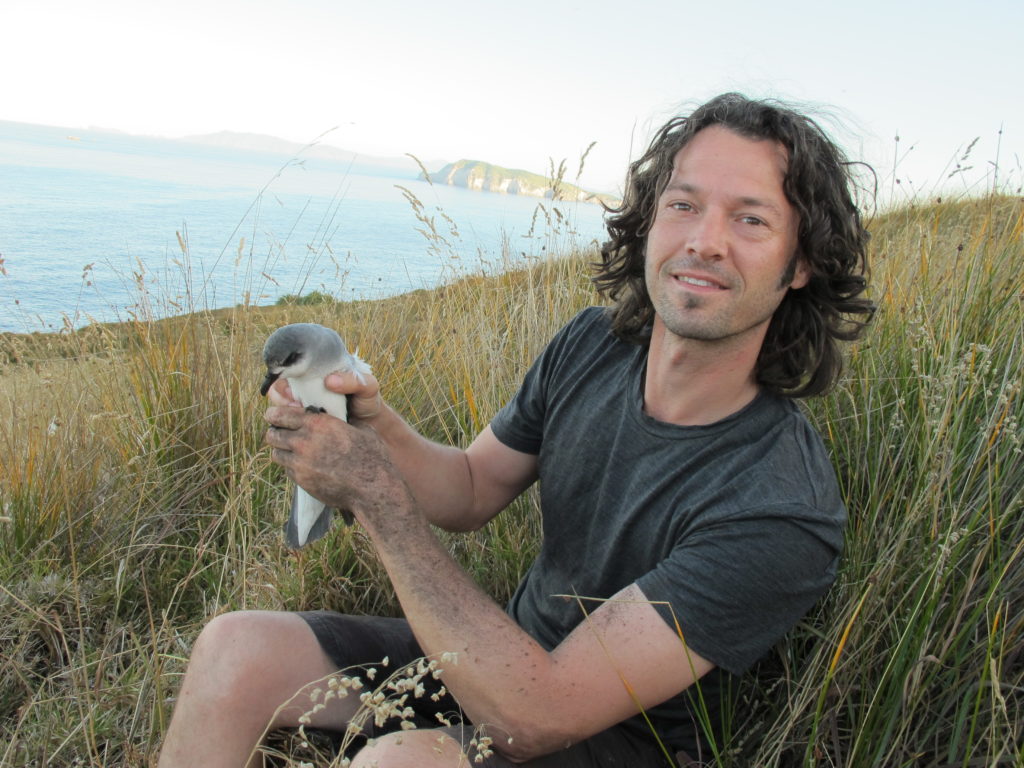
To get involved or find out more about the programme please contact Todd Landers on todd.landers@aucklandcouncil.govt.nz
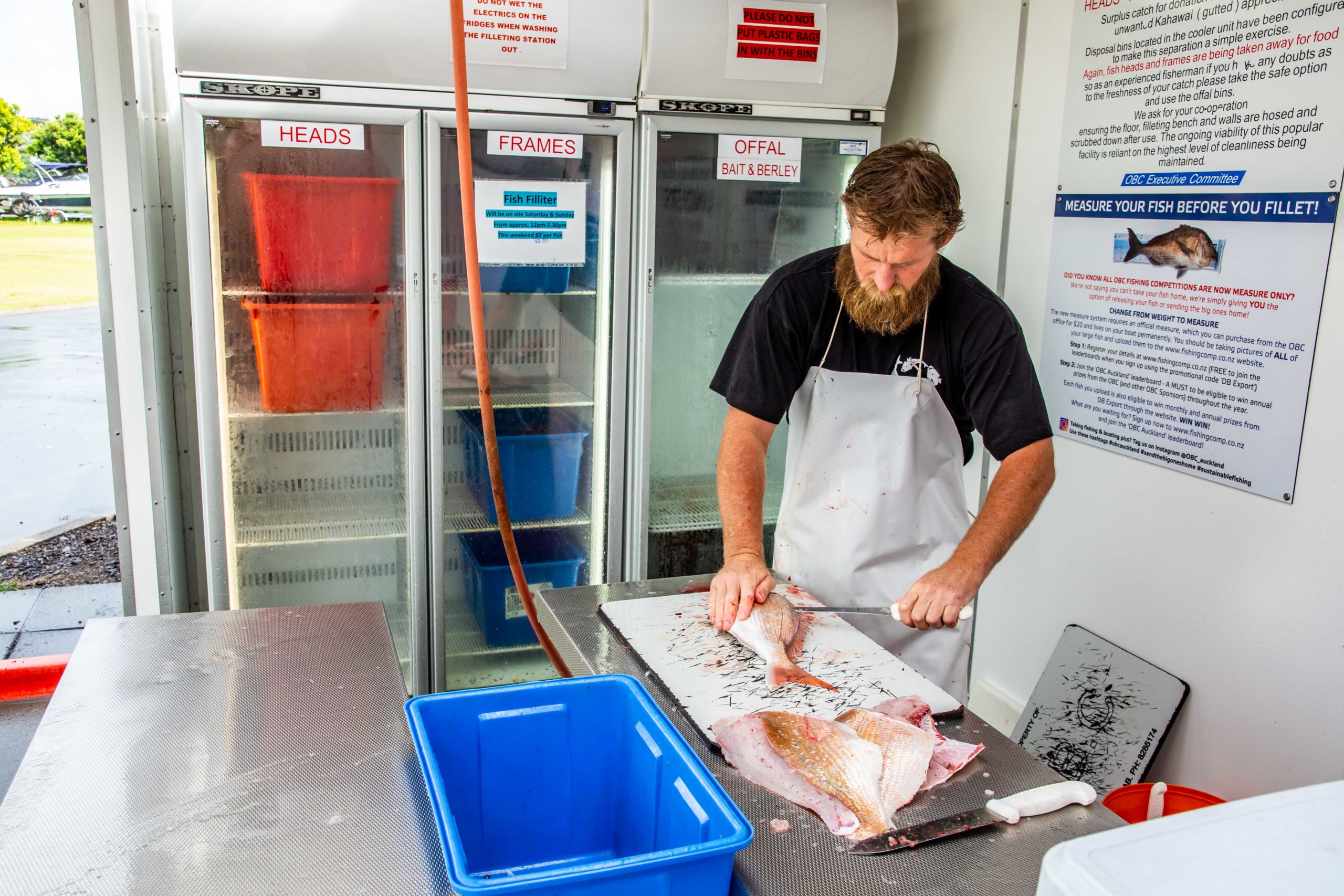
Respecting fish is at the core of the Kai Ika project which started as a pilot project at the Outboard Boating Club in Whakatakataka Bay (Tamaki Drive) in partnership with Legasea and Papatuanuku Kokiri Marae in Mangere.
In just over three years the project has seen over 50 tonnes of fish collected and utilised by the Marae’s healthy food community programme. This impressive feat would not have been possible without buy-in from the Outboard Boating Club’s (OBC) nearly 2000 members of recreational boaties.
Struggling with fish waste, Legasea initially developed a solution by partnering with Papatuanuku Kokiri Marae which had award-winning recognition for its healthy food programme to lessen their community’s reliance on junk food by providing healthy vegetables grown at the marae. The OBC completed the equation by providing the fish caught by its members.
Dedicated fridges were installed at a purpose-built filleting station at the club so that members could safely preserve offcuts, heads, frames and offal for collection by the marae. The heads of fish are highly prized rangatira kai or ‘chiefly food’ by Maori and Pacific peoples, while fish frames and offcuts can be turned into delicious soups and stews. The offal is high-quality fertilizer used in the vegetable gardens and kumara beds.
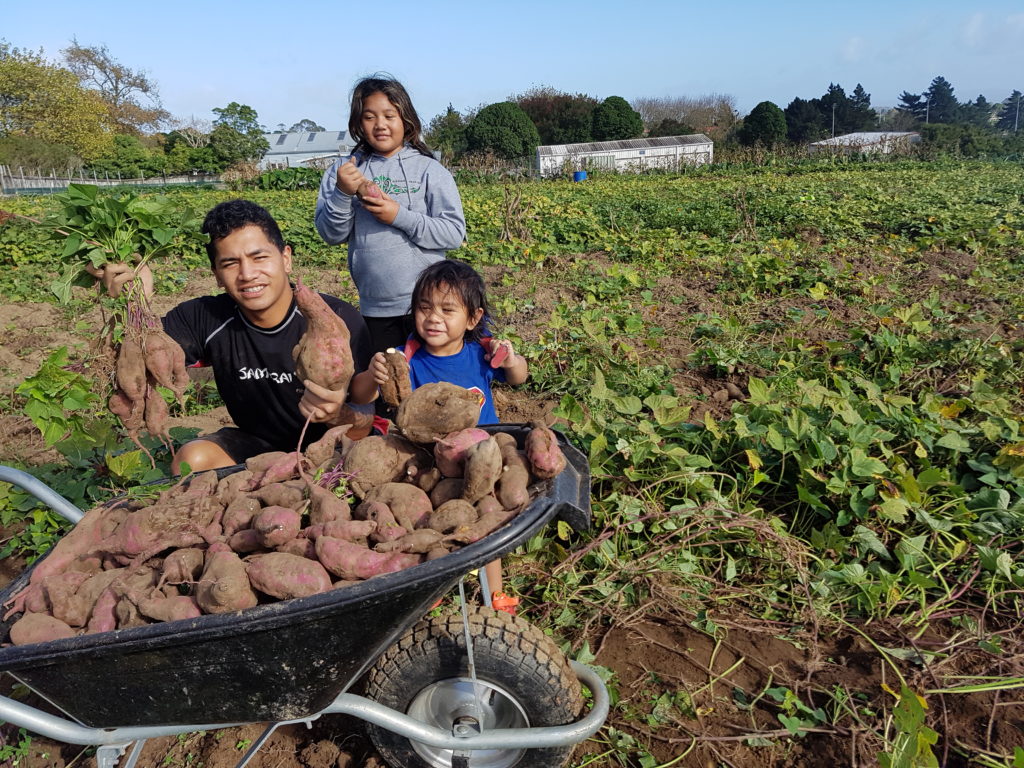
Recognised as a runner-up in the Sustainable Business Awards, the Kai Ika project is now expanding to Westhaven Marina and Wellington, with Legasea providing assistance to other clubs wishing to fish more sustainably.
The project has generated great pride at the OBC where it is being a catalyst for more sustainable fishing practices that includes greater respect in the handling and treatment of the fish resource.
The club’s ongoing education into sustainable fish handling techniques and equipment all contributes significantly to its international Blue Flag environmental programme which had brought nation-wide accolades.
Blue Flag certification makes the OBC part of a prestigious international environmental auditing system for marinas, boat clubs and beaches operating in 45 countries. Independent annual audits check the club’s operating procedures over 40 different aspects relating to sustainability, safety and education. The OBC was recently recognised with a Supreme Best Practice Award at the national Keep New Zealand Beautiful Awards.
OBC Commodore Bill Berry explains the club’s motivation for Kai Ika, Blue Flag and their extensive environmental efforts, “The environment that our members treasure, the Hauraki Gulf, is right on our doorstep, it inspired a group of volunteers to pitch in and create our early facilities, whilst setting strong safety standards to ensure club members always acted safely and responsibly. The same principle now applies to our environmental responsibilities too. We know that if our families want to keep enjoying the Hauraki Gulf for generations to come then we must not only look after ourselves but also the environment. We’re proud of the efforts we make and hope to inspire other clubs and the boating community to follow our example and are happy to share our knowledge”.
The OBC supports numerous grassroots environmental efforts including Motuihe Trust (for 18 years and counting), Revive the Gulf, and coastal cleanup events, as well as supporting scientific studies on Orca, mussel beds, microplastics and water quality. The club also provides ongoing support and complimentary storage for the Westpac Rescue Helicopter, Police, Harbourmaster, Auckland Council, Surf Lifesaving as well as for marine events when required.
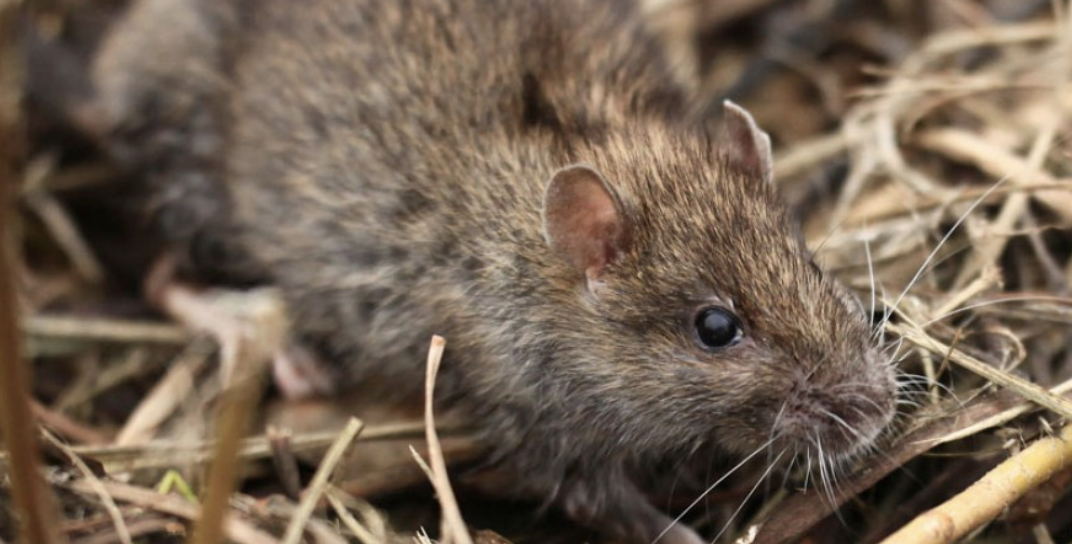
A partnership between Auckland Council, adhesives company Selleys, and peanut butter producers Nut Brothers is deploying 22,000 rat bait blocks and 160kg of peanut butter. The Talon wax blocks will be used in continuing trapping efforts on the Hauraki Gulf Islands and in remote rural areas as part of the Pest Free Auckland Programme:
According to Brett Butland, Auckland Council’s Pest Free Auckland Director, an unusually high seeding led to a wealth of food for native species. This has also fueled high populations of pests such as rats and stoats. These pests pose a serious threat to native wildlife as predator populations build up during the spring and summer months.
“We want to stay ahead of the game and ensure our predator free islands remain that way.”
“We know that rats prefer organic oils – like the ones contained in peanut butter – and they’re more likely to draw the pests to the bait stations. The rat bait and peanut butter work really well together.”
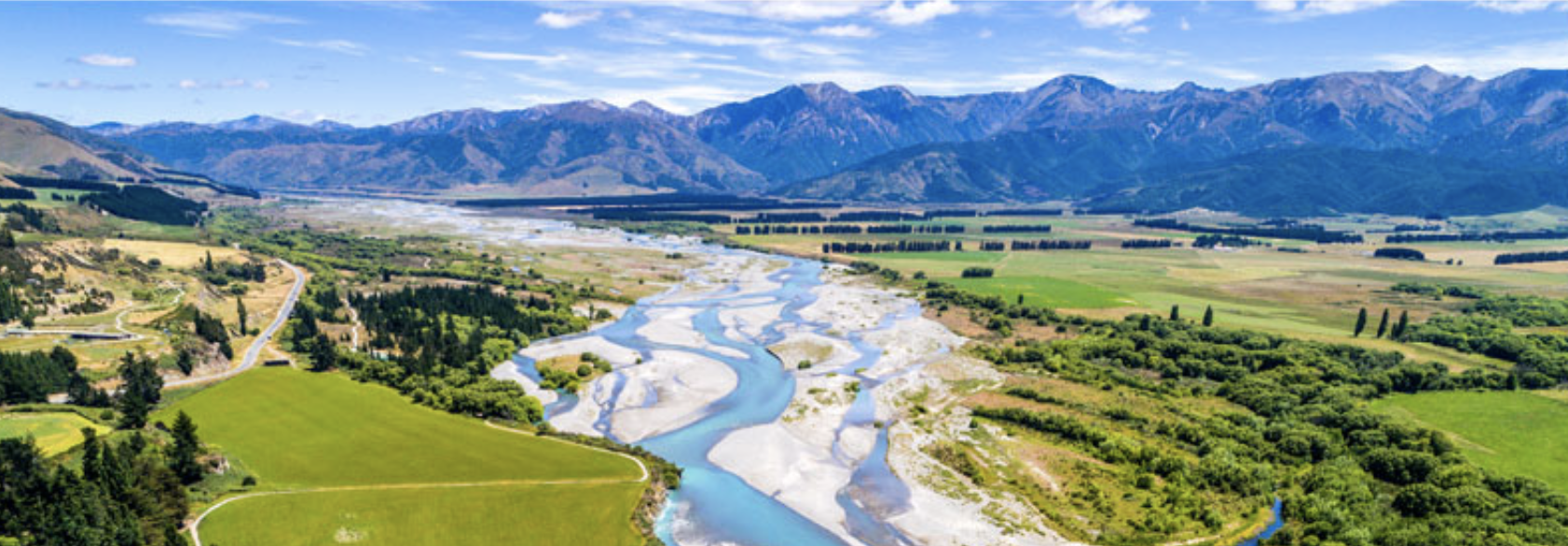
The Ministry for the Environment has launched consultations on improving management of New Zealand’s rivers and lakes: “Action for Healthy Waterways: A Discussion Document on National Direction for our Essential Freshwater”.
As the discussion document notes our fresh water is suffering as a result of human activity, primarily from urban development, agriculture, horticulture and forestry. Urgent action is required to stop an already bad situation getting worse. Proposed action includes: better management of stormwater and wastewater no further loss of wetlands and streams tighter controls to prevent sediment loss from earthworks and urban development farmers and growers understanding and managing environmental risks and following good practice new standards and limits on some farming activities in some regions or catchments.
Beyond those proposals the Government is also working on other parts of its plan for freshwater, including allocation of allowances to discharge nutrients, institutional/oversight arrangements for the freshwater management system, and addressing Māori rights and interests in freshwater.
It is important that you have your say on these landmark reforms. Submissions will be accepted until 31 October 2019.
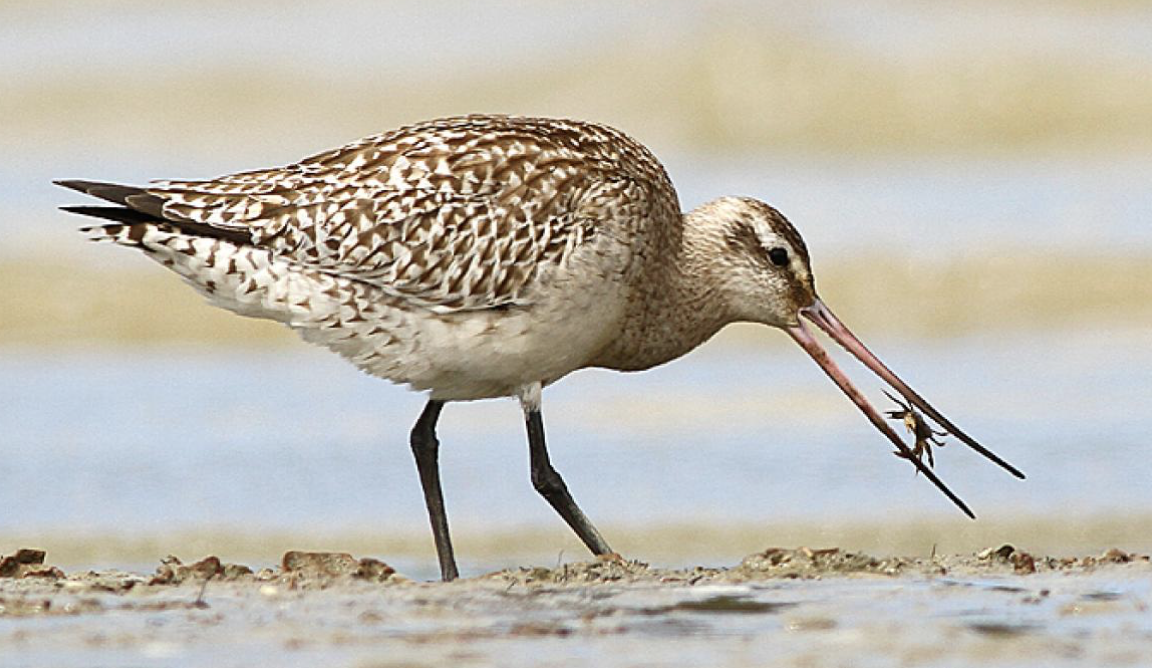
The Government made its intention clear with the announcement to protect a flight path of a species of native birds who frequent the Thames coast before flying to the Arctic.
The announcement, which was made by Prime Minister Jacinda Ardern and Conservation Minister Eugenie Sage, signals that the Yellow Sea is now classified as a World Heritage site.
The Red Knots and Godwits fly from the Firth of Thames to their breeding ground every year which is a 12,000km journey.
Red knots breed in Siberia, while the godwits breed in Alaska. Both the red knots and godwits land at wetlands in China to refuel, before flying on to their breeding sites.
However, due to the mudflats around the Yellow Sea being destroyed by development, there has been a decline in shorebirds numbers.
“This recognises the importance of retaining mudflats,” Sage said.
“We’ve seen the loss of about two thirds of mudflats in that area, but now China is committing to their protection.
“It’s really great news for godwits and knots and it makes their journey a bit safer.”
The specific sites the birds use will be part of a Yellow Sea World Heritage proposal to be developed by China with support from other partners in the East Asian-Australasian Flyway Partnership.
The East Asian-Australasian Flyway for migratory birds extends from Awarua Bay in the south of New Zealand and crosses China on its way to the North Slope in Alaska.
“Equally important is the work being done on this side of the Pacific. The recent acquisition of the Robert Findlay Reserve at Miranda was a significant local contribution to the conservation of migratory shorebird habitat in New Zealand,” Sage said.
Prime Minister Jacinda Ardern said New Zealand was part of an international community that had a duty of care, and also commended the work done by volunteers and supporters of the Pukorokoro Miranda Shorebird Centre.
“You are creating an environment where the next generation will feel motivated to continue the conservation work that you’re doing, not just here but globally.
“You have my word that when I get the opportunity, I am happy to continue the diplomacy you’ve been undertaking.
“If it’s not to advocate for our people but to also act as guardians and demonstrate kaitiakitanga to the birdlife that call New Zealand part of their migratory routes.”
Centre manager Keith Woodley said the profile of the country’s shorebirds needed to be raised and likened their voyage to humans doubling their weight and running a marathon.
“That’s essentially what these birds are doing,” he said.
“They double their weight and they go on this huge endurance flight. Of course, we couldn’t do it, but they are superbly equipped and adapted to doing it.”
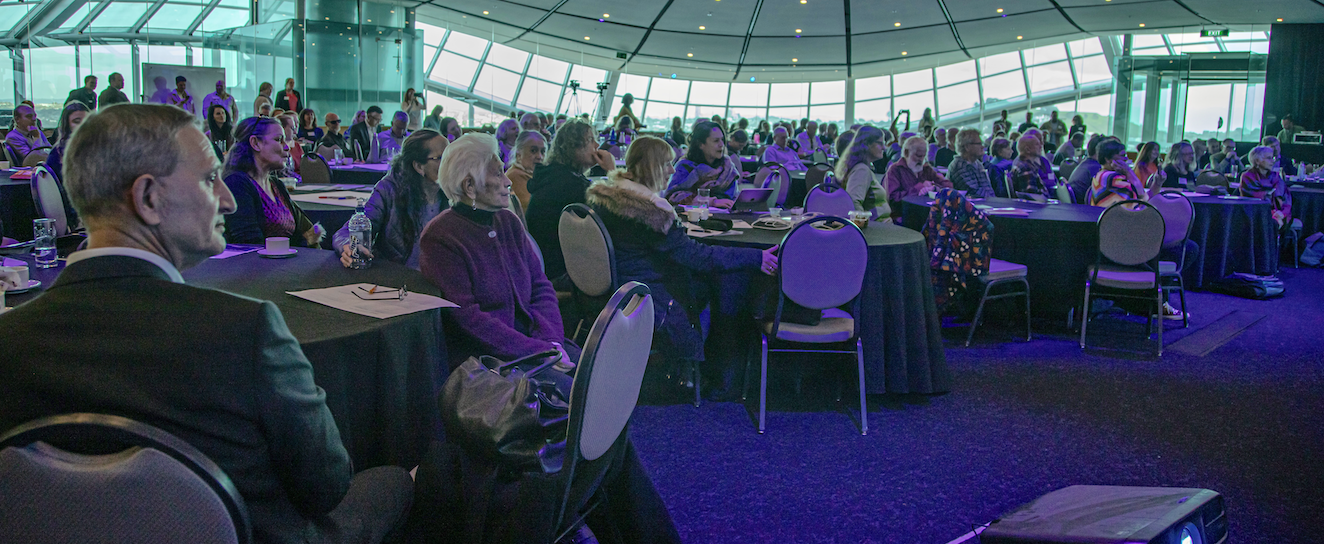
The 2019 Hauraki Gulf Marine Park Conference – Making Waves: Protecting and Restoring the Marine Park – saw over 250 participants flock to Auckland’s War Memorial Museum at the end of August. The annual event, which was held on August 27, saw an audience treated to a range of engaging and interactive presentations about the Marine Park which can be viewed here (http://gulfjournal.org.nz/seminar-talk/?seminar-name=2019-making-waves), but they also had the opportunity to participate in group sessions as a collaborative approach to further shape the Forum’s recently announced Big Goals of at least 20% marine protection and 1000sq kilometre of shellfish restoration.
The Holdaway Awards, which recognise extraordinary contributions to the Marine Park were presented to Betty Whaitiri Williams, former inaugural member of the Hauraki Gulf Forum, and posthumously to Roger Grace, marine biologist who passed away earlier this year.
The Conference also featured a keynote address from the Minister of Conservation at which the Government announced new funding for shellfish restoration (see: https://www.beehive.govt.nz/release/government-helps-fund-efforts-restore-shellfish-beds-hauraki-gulf) and several youth focused elements including a youth panel, virtual reality experience by NZ Geographic and BLAKE, and a view of the future from Young Ocean Explorers. Finally, conference participants worked together on the elements for a potential future vision for the Marine Park.
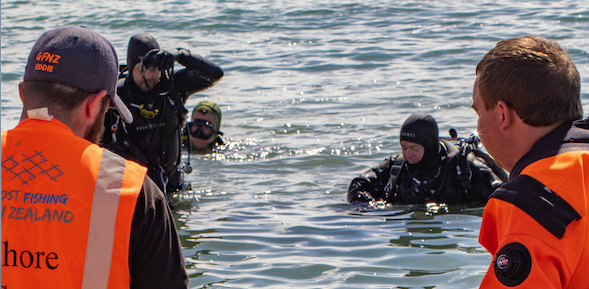
“In the 1980s I helped my Grandfather sink his old freezer in the harbour. It was a fun outing and a good challenge, afterwards I wondered what might inhabit the new white cave on the seafloor. Now days we all know better and I hate to think what toxic chemicals leaked out of that old machine and poisoned the bay,” anonymous New Zealander
A recent Ghost Fishing New Zealand event was held in Okahu Bay to help clean up the seafloor. The detrimental effects of lost fishing gear and rubbish was documented through video and photography.
Over the last four years, Ghost Fishing New Zealand (GFNZ) has worked diligently in cleaning open water spaces. These divers were inspired by overseas divers and named themselves after the ghost nets lost by commercial fishers that they retrieve. The team often pull tonnes of rubbish up from the deep in just a few hours using lift bags.
A station is set up at the event dedicated to sifting through the collection to extract mobile marine life from the rubbish.
“My job was to photograph the species as they were being removed by volunteers under the supervision of marine biologist Eddie van Halen Howard. Adults and children alike crowded around each piece of trash as it came ashore and Eddie enthusiastically identified and told stories about each animal,” – Shaun Lee
The highlight has to be this rarely seen Porcelain Crab (Petrocheles spinosus). It seems to be the first photograph of its species in the wild, though in this case the habitat had been moved.”
If you would like more information about Ghost Fishing NZ, please visit them here or better yet follow them on Facebook.

It was a momentous occasion.
A newly released book captures the significance of Hauturu Little Barrier Island and the ecological identity of this wonderful natural reserve.
Hauturu: History, flora and fauna of Little Barrier Island was launched at the Auckland Museum in September featuring key note speakers including editors Lyn Wade and Dick Veitch, along with The Little Barrier Supporters Trust patron Ruud Kleinpaste.
One of the evening’s highlights were the key insights, examples and experiences from the speakers who spoke about the historical significance of Hauturu and about the future of conservation in Aotearoa New Zealand.
Marine protection for the Hauraki Gulf was also noted as a shared vision for many who live, work and thrive on the Gulf.
Representatives of Ngati Whatua Orākei and Ngati Manuhiri also welcomed the crowd of several hundred attendees and highlighted the importance of Hauturu to mana whenua.
This important piece of literature is now available from booksellers nationwide. However, for those who wish to support the work of the Littler Barrier Island (Hauturu) Supporters Trust we encourage you to purchase a copy directly from the Trust.
For more information or to purchase a book, please follow the link below to the Trust’s website.
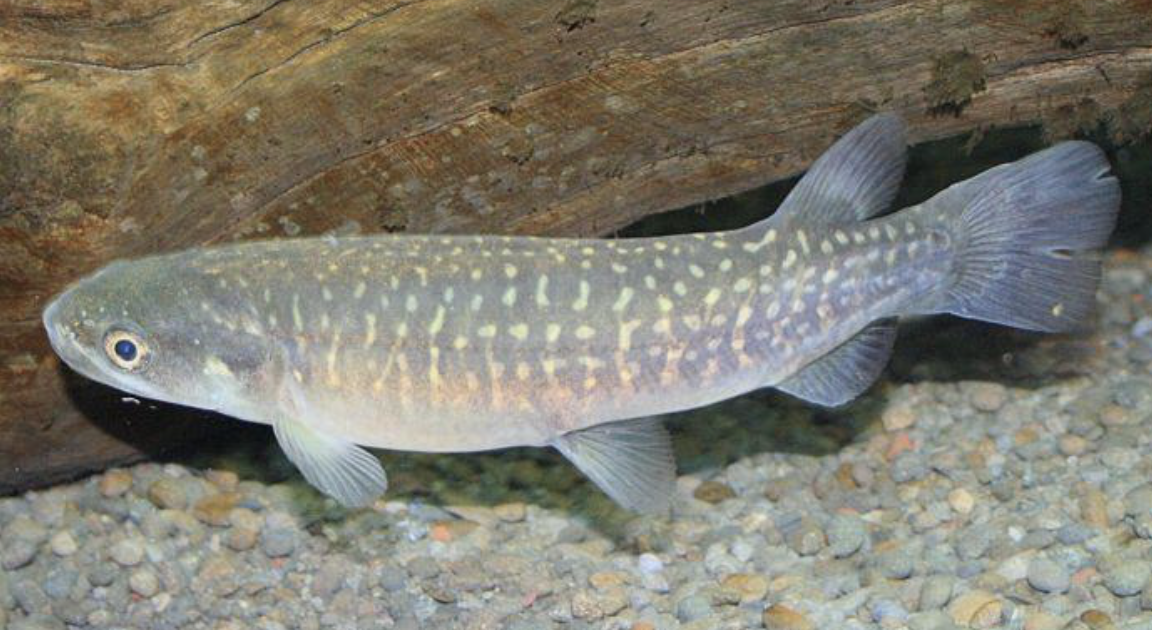
Conservationists are calling for continued action amid the increasing impact sediment is having on giant kokopu, one of Auckland’s rarest whitebait species.
The urgency comes from Auckland Council’s Freshwater Senior Regional Adviser Matt Bloxham, who says “Auckland doesn’t appear to have enough giant kokopu stream (source) populations to maintain high recruitment, because oceanic larval stocks are becoming depleted.”
Like other whitebait species, the young of giant kokopu spend time developing in the ocean before returning to adult habitat as whitebait in spring. “As adult populations are lost, we potentially add to this problem by reducing the oceanic larval pool and therefore also recruitment back into adult stream habitat.” Matt adds, “It’s akin to young kiwi folk going off on their OE but never returning home. Fewer young fish come back, the population ages and eventually dies out”.
This sediment issue is implicated in the noted decline of giant kokopu populations nationally and throughout mainland Auckland.
A remnant population at West Hoe Heights in Orewa was lost recently due to unmitigated sediment loss from a housing development into a nearby giant kokopu wetland. The Nukumea population in the neighbouring catchment is now coming under similar pressure.
A recent stocktake of known giant kokopu sites on the mainland found no fish at any of the 25-former giant kokopu sites. A handful of new (mainly island) sites have been found since, but they contain on average fewer than half a dozen fish and in some streams, a solitary fish remains.
However, the discovery of three geographically overlapping giant kokopu ranges on the south-eastern corner of Waiheke Island and another in Waitakere Regional Park increases the prospect of the species enduring in Auckland.
The first population found was in Awaawaroa Wetland in 2014, which resulted in the local community and Council mobilising to restore the population. More recently, there have been populations found in the neighbouring catchment to the east of Awaawaroa, and at Whatipu in the Waitakere Ranges.
However, a third population to the west of the Awaawaroa system, Whakanewha Regional Park, has recently disappeared “we think because of sediment loss from a gravel road higher up the catchment”, says Matt.
It turns out the population found to the east of Awaawaroa is the largest we have left in the region and the juveniles it disgorges into the ocean are likely to bolster the two nearby giant kokopu wetland populations.
“But even the largest population may become compromised if the two smaller populations (Awaawaroa and Whakanewha) are allowed fall away (i.e. it is likely that all 3 populations are underpinned by the same oceanic larval supply).
“While we will have to restock Whakanewha, if we act quickly and seal the sections of road that contribute sediment to Whakanewha, Whatipu and Awaawaroa, we may be able to sustain all three fisheries.”
“Major stochastic storm events of the type we are expecting more of with climate change have the potential to generate considerably more sediment and compromise kokopu populations in these rural and peri-urban environments. We are grappling with that at Awaawaroa, Whakanewha Regional Park, at Whatipu and in and around Orewa, where the species’ exposure to suspended sediment is high, particularly from roading.”
Matt says, “while gravel roads aren’t the only sediment source, they are one of the key sediment contributors in two of the Waiheke wetlands and are putting giant kokopu under particular pressure there”.
Mr Bloxham says “because the gravel on Waiheke has a high clay content, it only adds to the problem. Fine sediment is remobilized with every vehicle movement and stored in loose uncompacted drifts within the road corridor. At Whatipu, Whakanewha and at Awaawaroa, the close proximity of the gravel roads to their respective receiving freshwater environments means there’s very limited opportunity to intercept/settle out the sediment before it reaches the waterway and sealing is really the only option,” he said.
Auckland Council is responding to the issue of sediment loss to waterways from bulk earthworks sites and is working tirelessly to combat every angle of the issue. Matt says, “parallels can be drawn between earthwork sites and unsealed (gravel) roads. However, over their lifetime, dirt roads have the potential to be considerably more impactful as there are no sediment controls and release persists for as long as the roads prevail, whereas bulk earthworks are usually relatively short-term activities.”
Auckland Council aided by Forest and Bird, Conservation Volunteers NZ and the local community are working urgently to address the other threats to the island’s wetland populations, which include habitat loss and predation.
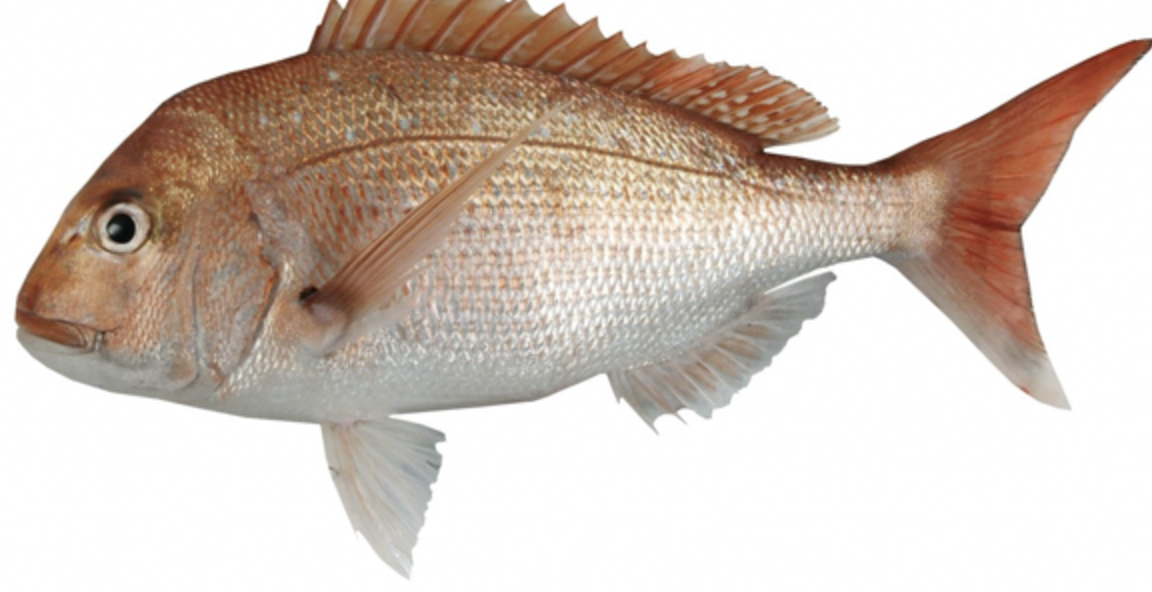
A Fisheries New Zealand national survey of recreational fishing has confirmed the ongoing importance of recreational fishing.
The National Panel Survey – which is conducted every 5 to 6 years – provides a snapshot of recreational fishing activity around the country, says Fisheries New Zealand director of fisheries management, Stuart Anderson.
“This is added to a wide range of other information to help us understand what is happening in our fisheries and inform our decision making over the next few years.
“One of the top-line results was confirmation of the ongoing popularity of recreational fishing. We estimate that 14 percent of the country’s population over the age of 15 years went fishing at least once during 2017-2018.
“We also found that recreational fishers catch a large proportion of key recreational fish species such as snapper, kahawai, blue cod, and kingfish. There’s been little change in the proportion of these fish caught by recreational and commercial fishers since 2012.”
The survey contacted more than 30,000 people and about 7,000 recreational fishers had their fishing outings recorded over a 12-month period.
The final results were confirmed by comparing different surveys conducted by the National Institute of Water and Atmospheric Research (NIWA) and the National Research Bureau (NRB).
Other key findings include:
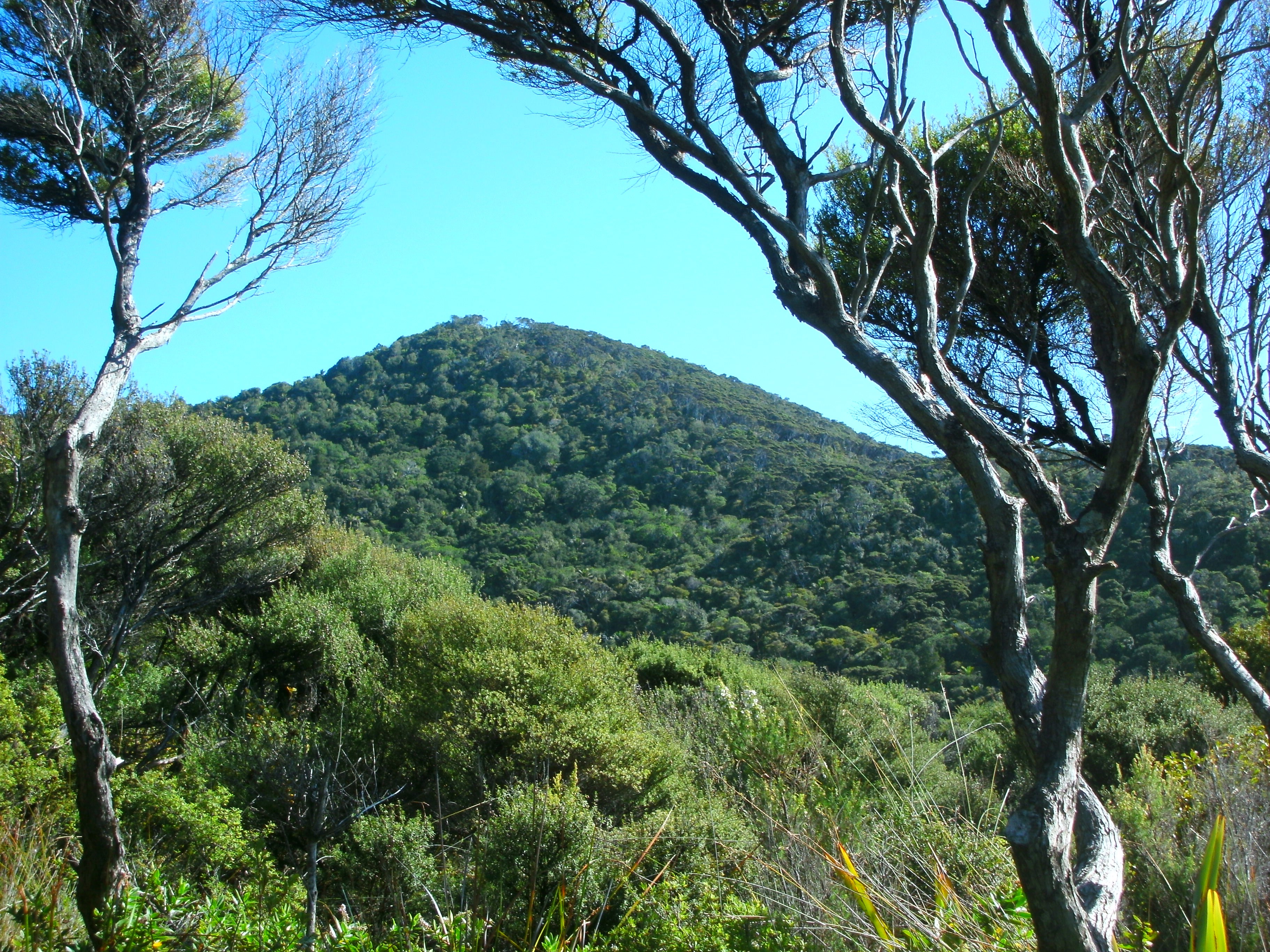
Twenty Years of Ecological Restoration by the Windy Hill Rosalie Bay Catchment Trust
... READ FEATURE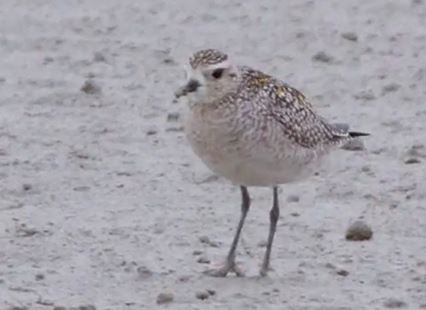
The shores of Miranda, in the Firth of Thames, are the part-time home to the kuriri. The fourth most common of the Arctic migrants that visit each summer, the kuriri used to arrive in their thousands each year to escape the Northern Hemisphere’s winter. Now, fewer than 200 visit. Why the numbers coming to New Zealand have declined is a mystery, as is much about the birds’ life.
Each year the small birds migrate to somewhere near the Arctic Ocean to nest. It’s not known whether this is Siberia or Alaska, what route the birds take to get there or if and where they might stop on the way. There’s speculation a habitat they might use as a stop-off point might be degraded.
This summer the Pūkorokoro Miranda Shorebird Centre is going to try to find answers to fit 10 of the birds with tiny GPS trackers to see where they go. $20,000 was raised for ten lightweight GPS trackers. With permission from the Department of Conservation and Massey University Animal Ethics Committee, the notoriously flighty birds have been successfully tagged.
You can follow the progress of the campaign on the Pūkorokoro Miranda Shorebird Centre website.
Newsroom reporter Farah Hancock reported on this recently here.
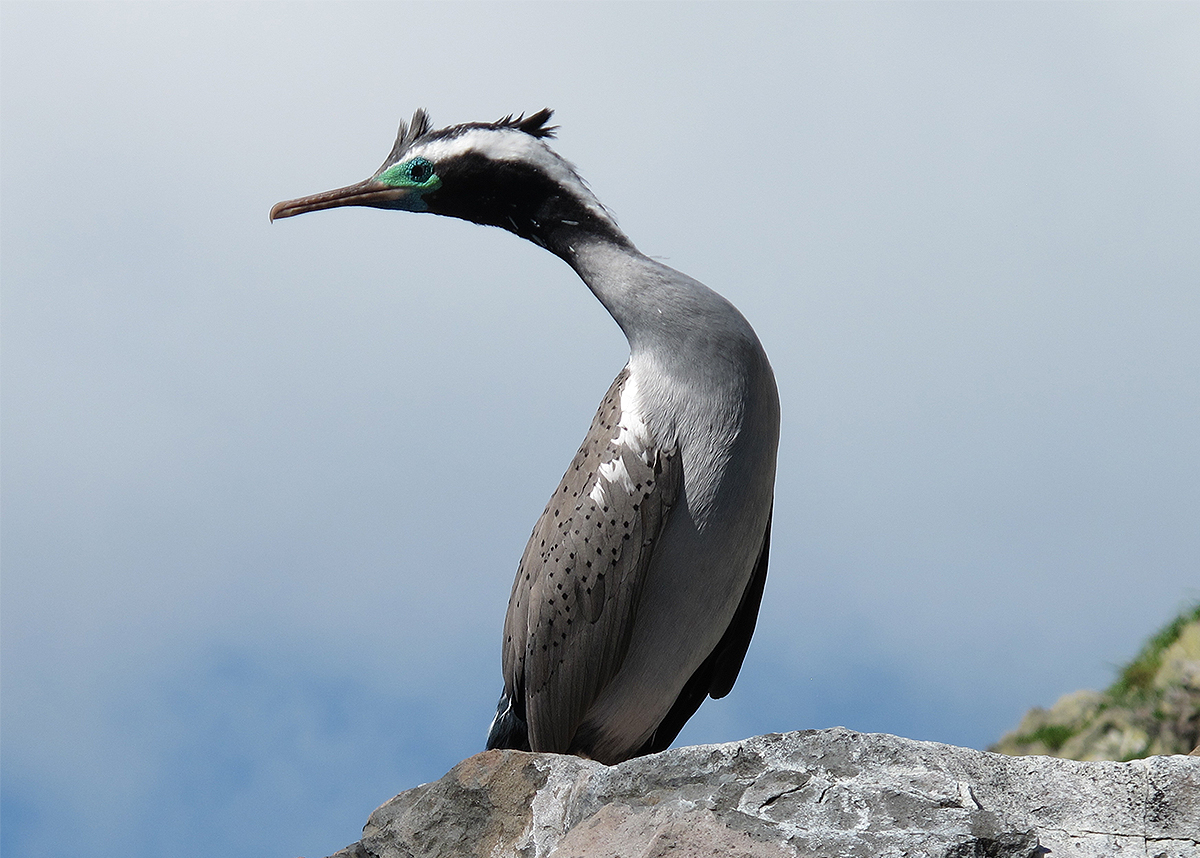
The Hauraki Gulf is home to a threatened population of Spotted Shags, thought to be genetically distinct. Whilst the Spotted Shag is relatively common in other parts of the country, in the Hauraki Gulf the birds are now limited to just two colonies, on Tarahiki and Waiheke Islands, with an estimated population of 300 breeding pairs.
In an attempt to attract Spotted Shags back to the Noises group of islands, a replica colony of Spotted Shags has been installed on the steep cliff face of Otata Island – the largest of the Noises group. The replicas were made from six Spotted Shag specimens in the Auckland Museum’s collection, that were collected by Museum staff from the Noises back in 1913.
The Museum’s specimens have been scanned, 3D printed and painted. As well as the replica birds, nests have been constructed from dried seaweed and a solar-powered sound system installed to transmit bird calls. White paint has been used to mimic the droppings that mark seabird colonies.
Damian Christie from the Aotearoa Science Agency was on hand to film the installation.
You can also watch Auckland Biodiversity ecologist Tim Lovegrove and Auckland Museum’s Matt Rayner take part in an annual survey to monitor the threatened populations of Spotted Shags in the Hauraki Gulf here.
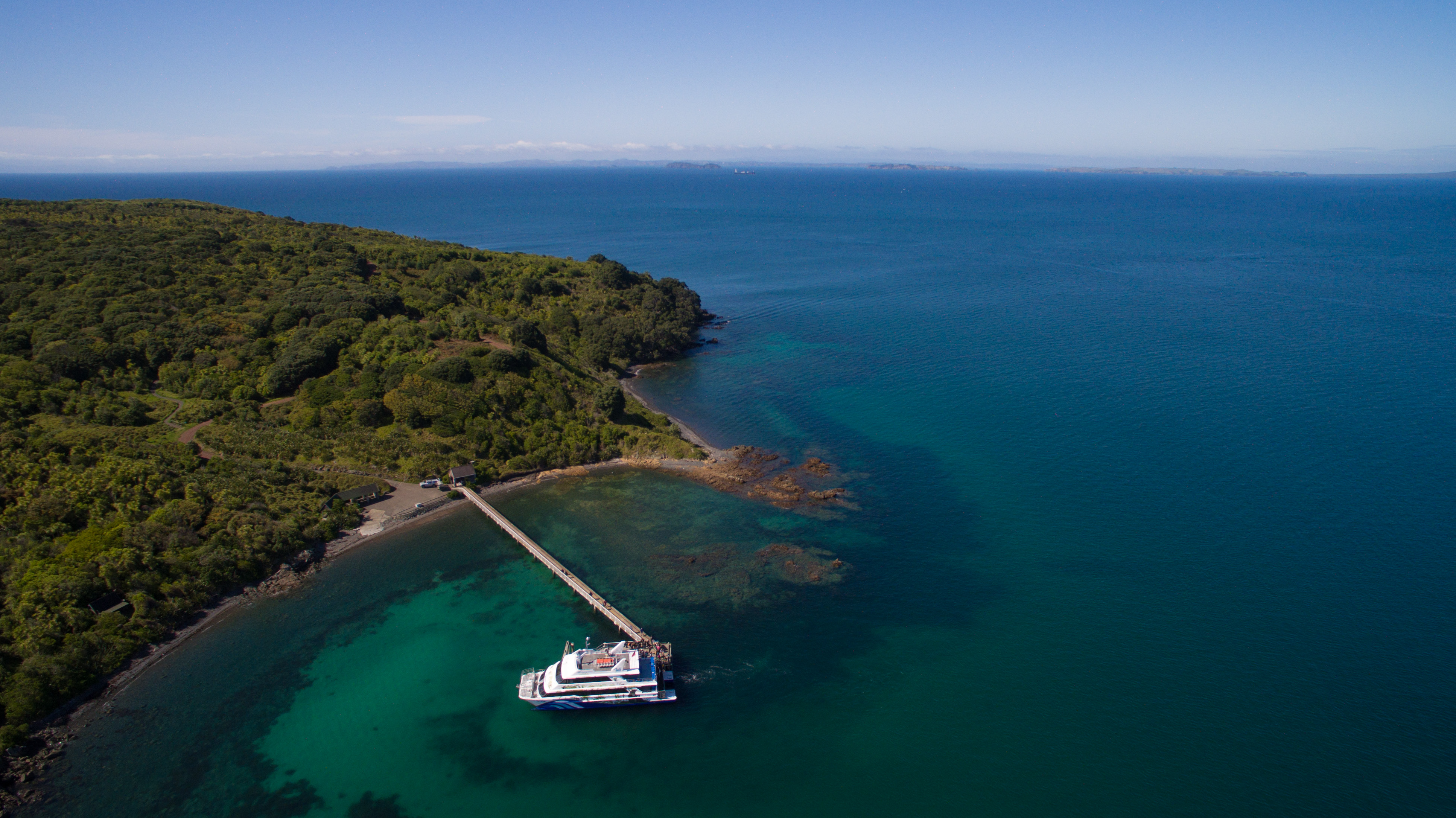
Fullers360’s role in moving precious cargo throughout the Hauraki Gulf
... READ FEATURE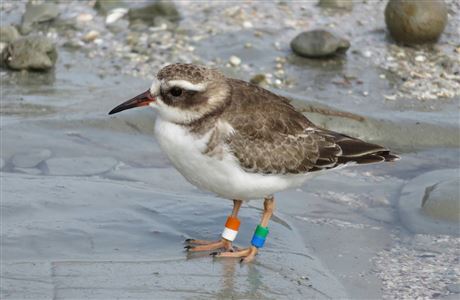
In December the Department of Conservation announced that seven critically endangered shore plover chicks have hatched on pest-free Motutapu Island in the Hauraki Gulf, and in early February, the Pūkaha National Wildlife Centre released four juvenile shore plover on Motutapu Island.
Endemic to New Zealand, the shore plover / tūturuatu were once widespread around the coast of the North and South Islands but were driven to the brink of extinction by rats and other introduced predators.
In 1990 there were only 130 shore plover / tūturuatu All these birds were on one island, predator free Rangatira Island in the Chatham Islands.
Today the total population of shore plover / tūturuatu in New Zealand is around 245. Shore plover were first released on pest-free Motutapu in 2012 – a year after Motutapu and neighbouring Rangitoto were declared pest-free.
Read more from DOC and also from the Pūkaha National Wildlife Centre.
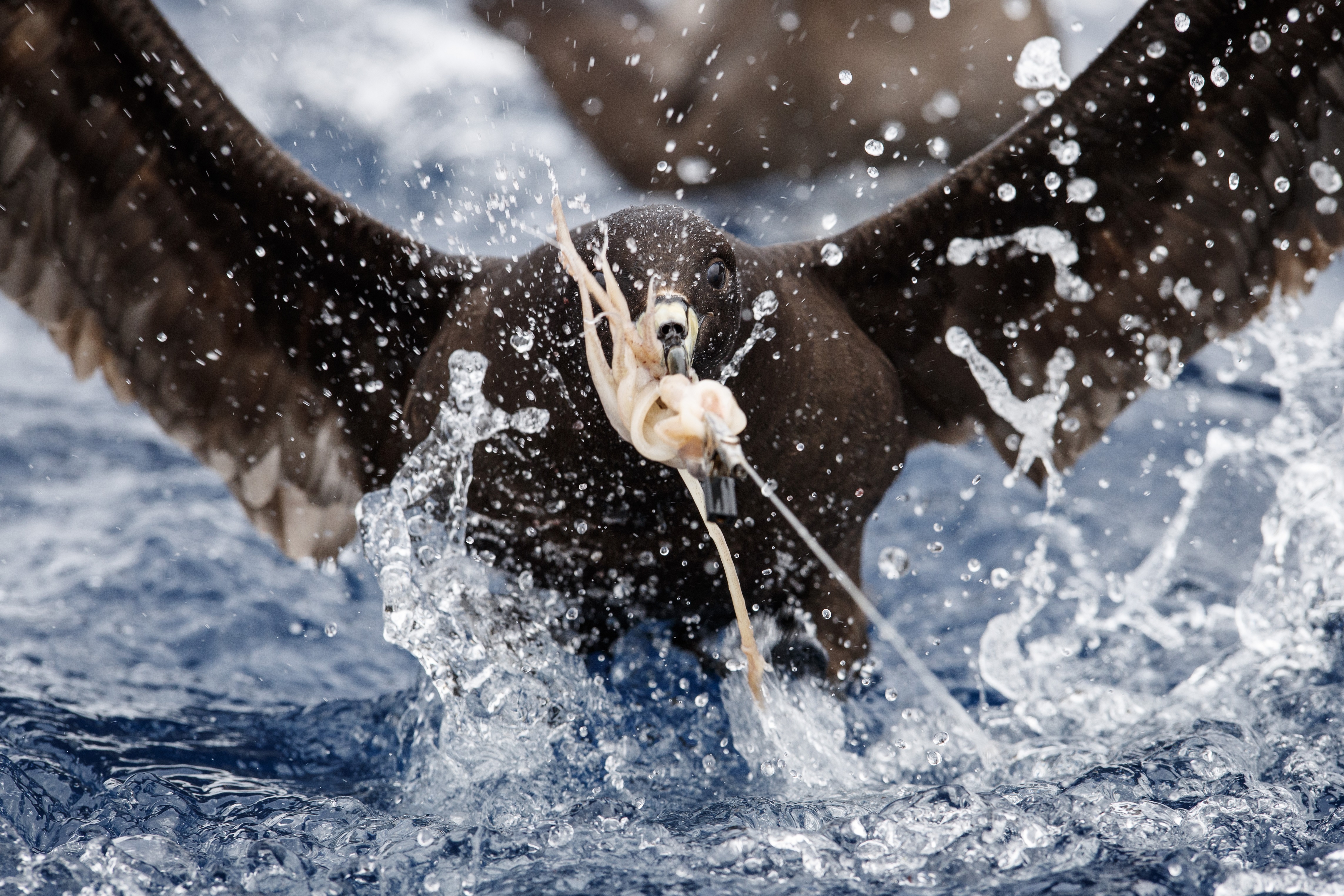
A comprehensive new book on the challenges for seabirds
... READ FEATURE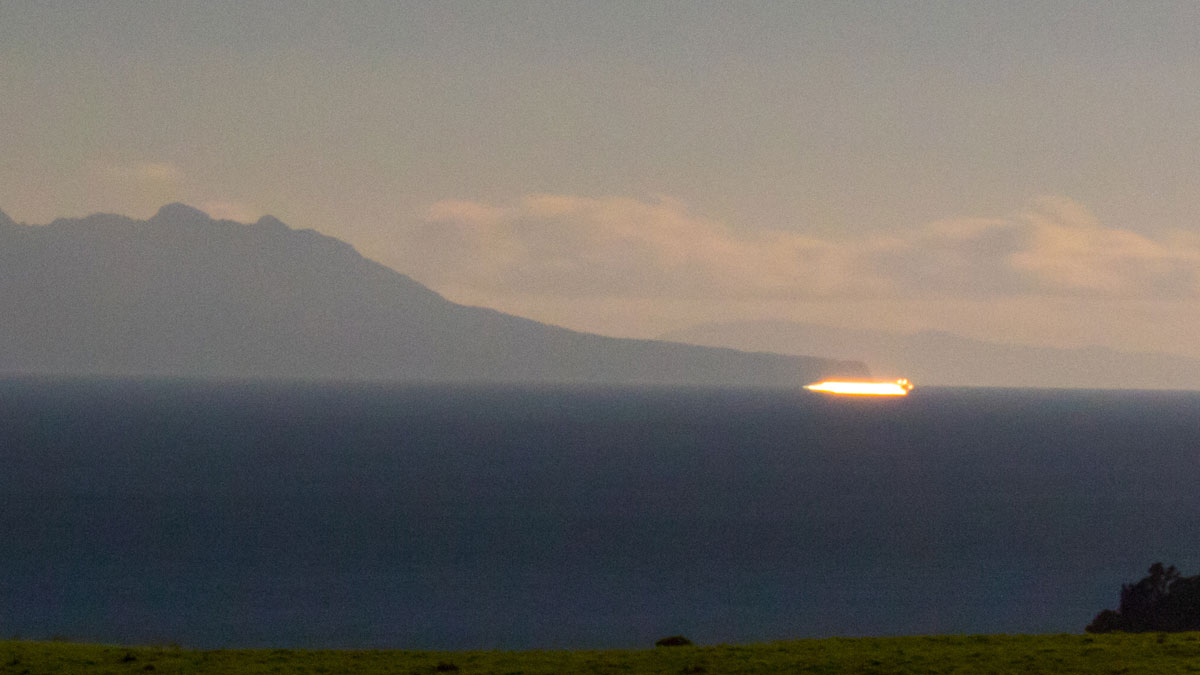
In a dramatic incident in the Gulf last year, about 60 Buller’s Shearwaters ended up on the deck of a cruise ship after being attracted by the vessel’s bright lights. Some of the birds died because they were placed in boxes together and became distressed. Regrettably, 33 died and several were injured.
Since then, the Department of Conservation (DOC) has been consulting with international cruise companies and the NZ Cruise Association on how to keep the birds safe. Advice has now been distributed to cruise ships when they sail into NZ ports.
In advice to ships, DOC urges those on ships to close blinds and curtains on cabin windows, reduce unnecessary exterior lighting, and to try to shield essential external deck lights so they are directed downwards and to reduce light wattage where practical.
Read more here.
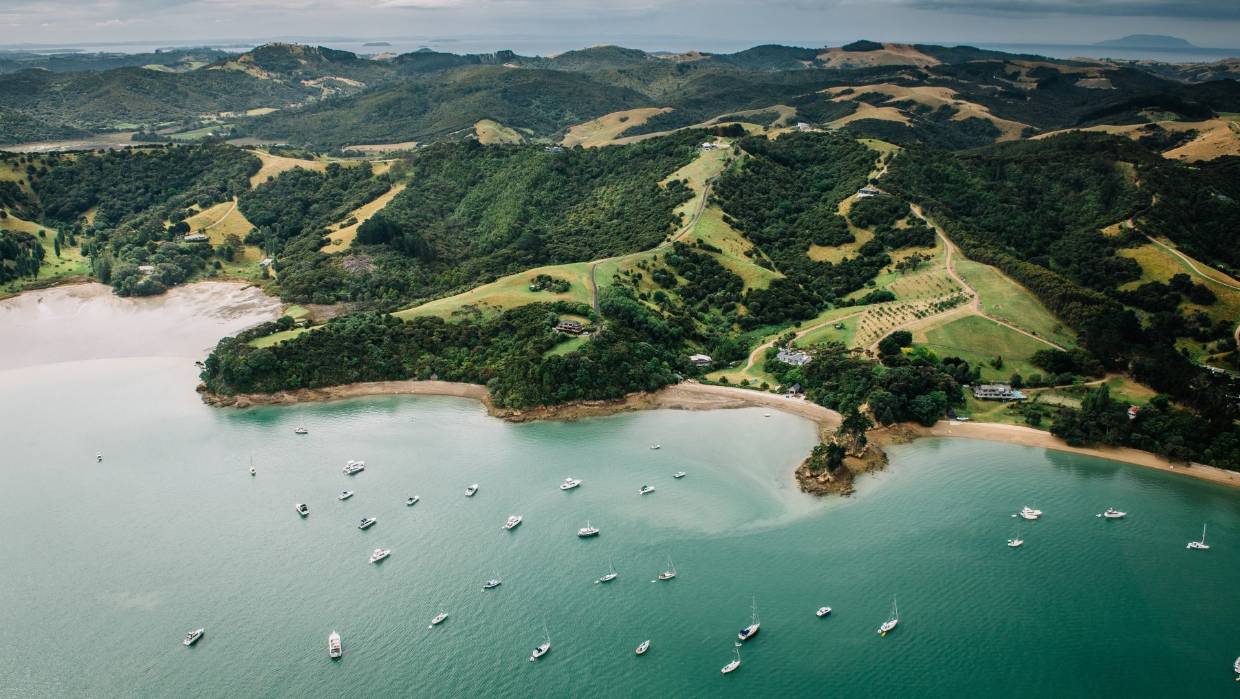
Waiheke Island is already possum free, and now plans are underway to see the island become rat and stoat free by 2025. If successful, this could make Waiheke Island the world’s first predator-free urban island. This is no small undertaking for an Island that has a permanent population of about 9000 residents and over a million visitors annually.
Auckland Council, Predator Free 2050 and Foundation North have jointly provided $10.9 million to cover a five to a seven-year programme on the island called Te Korowai Waiheke: Towards Predator Free Waiheke.
To find out more and get involved visit https://www.predatorfreewaiheke.org.nz/
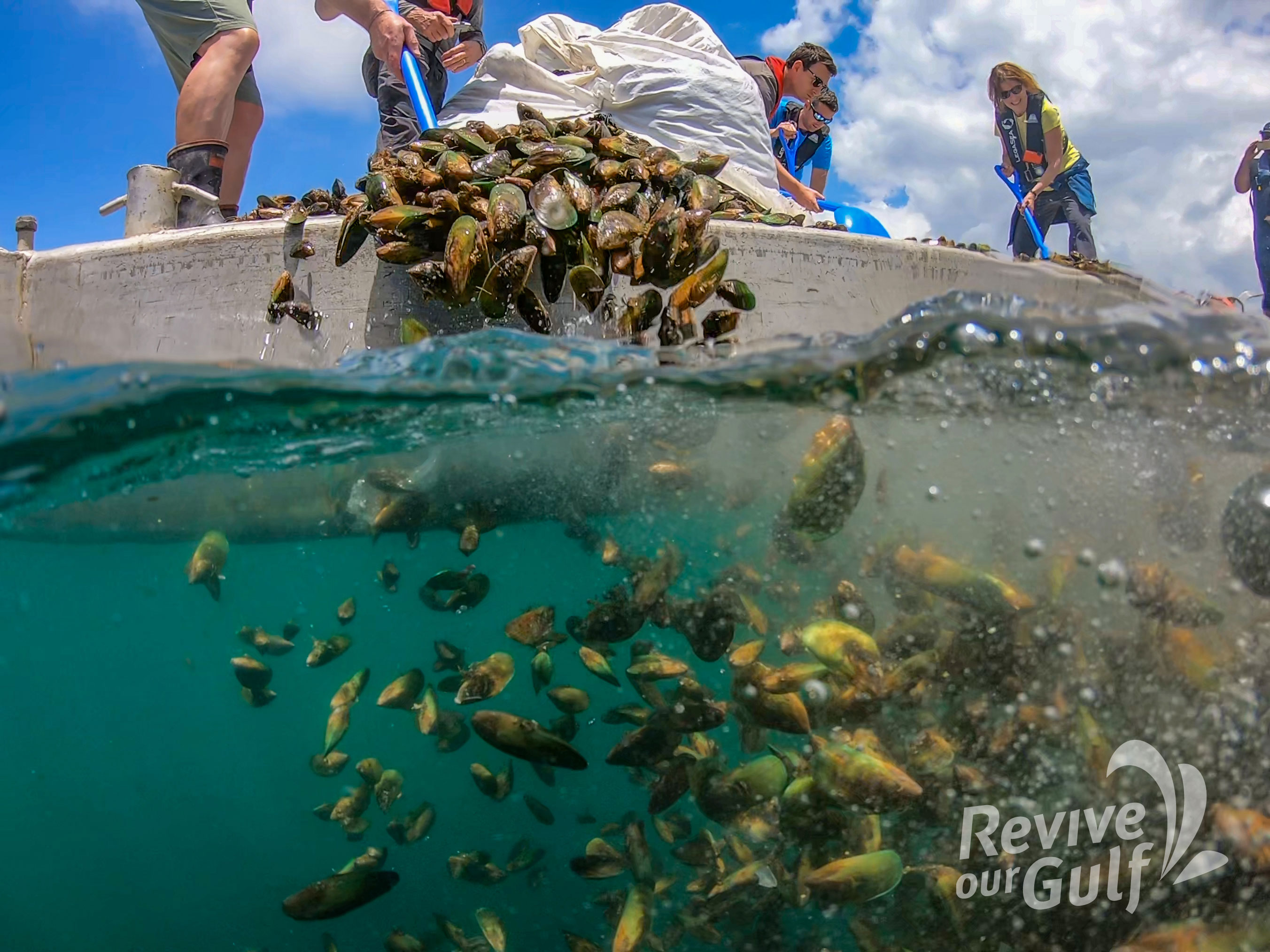
Mussel beds installed in Mahurangi Harbour (Waihē) late 2017 are having a major upgrade this month from the Mussel Reef Restoration Trust (Revive our Gulf). Three 10 tonne mussel beds will be added to extend the previous five.
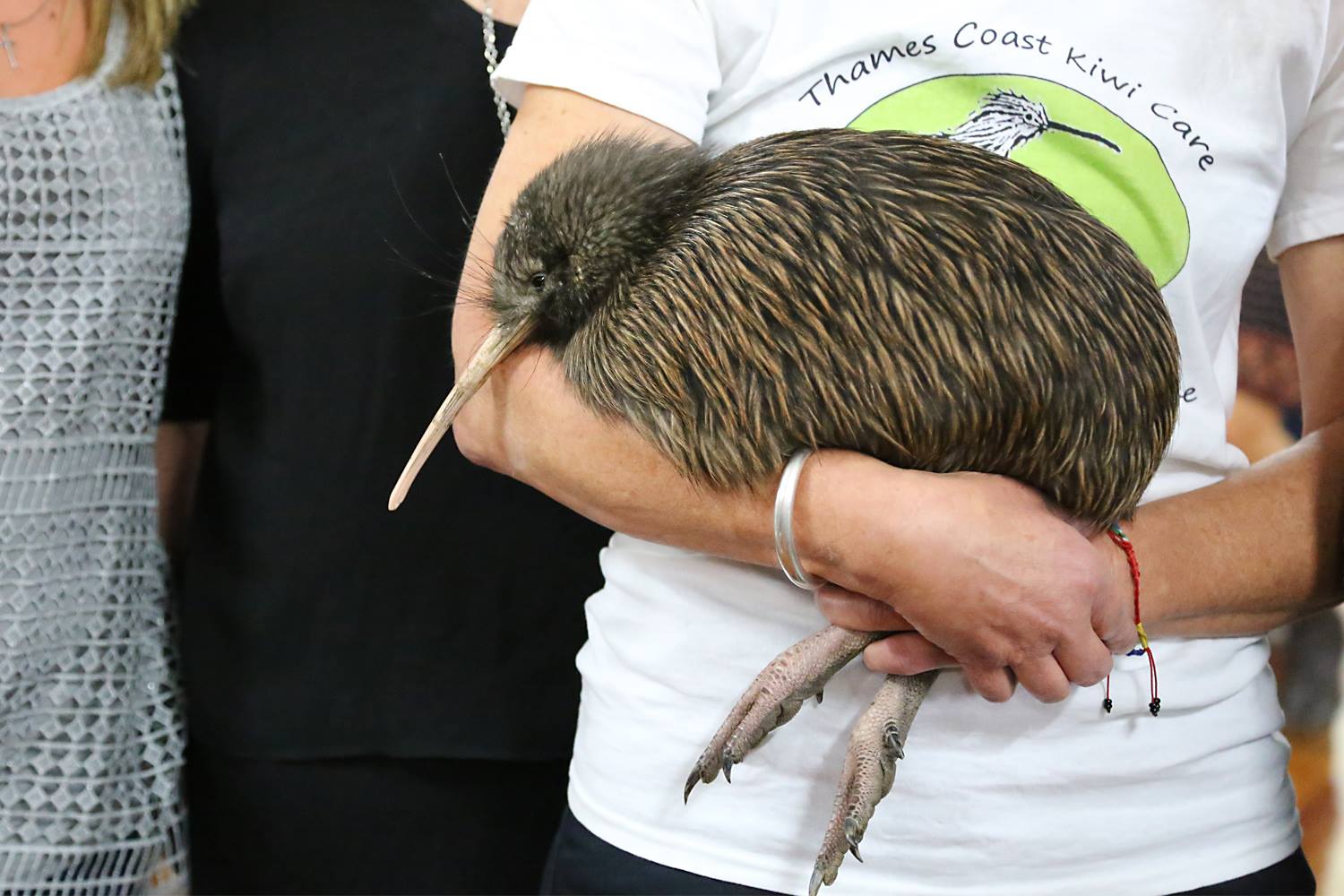
In late October, a 23-day-old Coromandel brown kiwi known as “Waipahu” was released onto Motutapu Island. The first chick released for this season, Waipahu is the 62nd kiwi released to the pest free island.
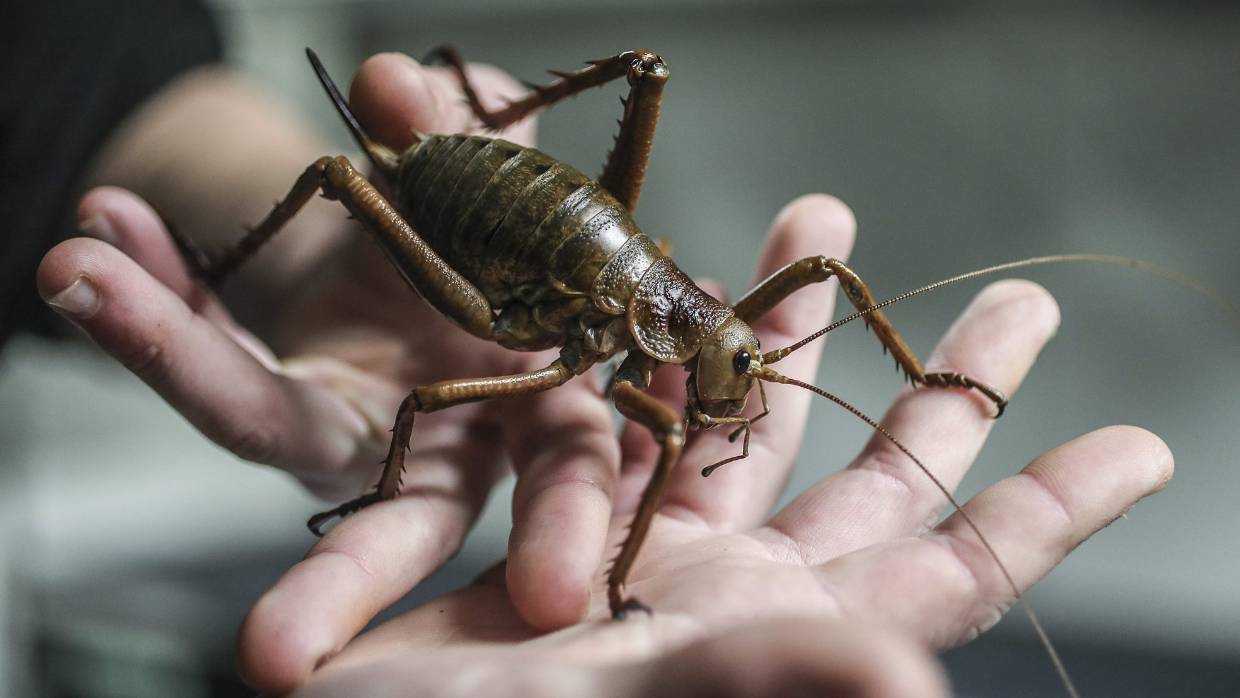
From the age of dinosaurs up until the mid-1800s, wētāpunga lived between Waiheke Island and the Far North’s Paihia. But by the early 1900s, habitat destruction and predation from exotic pests saw to their demise. Auckland Zoo has been extremely successful at breeding wētāpunga and is safeguarding the giant insects’ future. So far about 4,300 of the zoo’s wētāpunga have been set free on Hauraki Gulf islands.
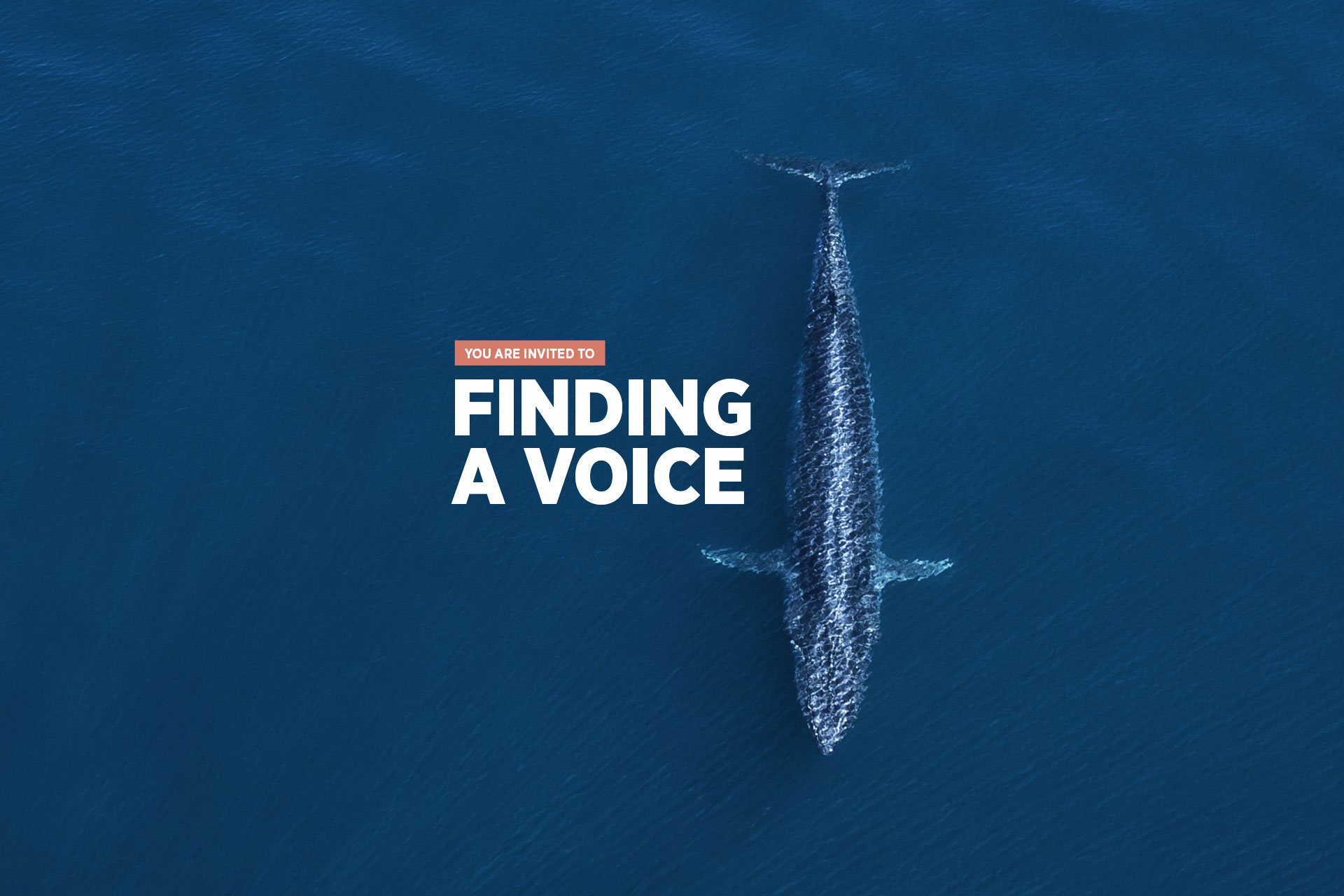
Te Mana, te Ihi, te Tapu o Tikapa Moana
... READ FEATURE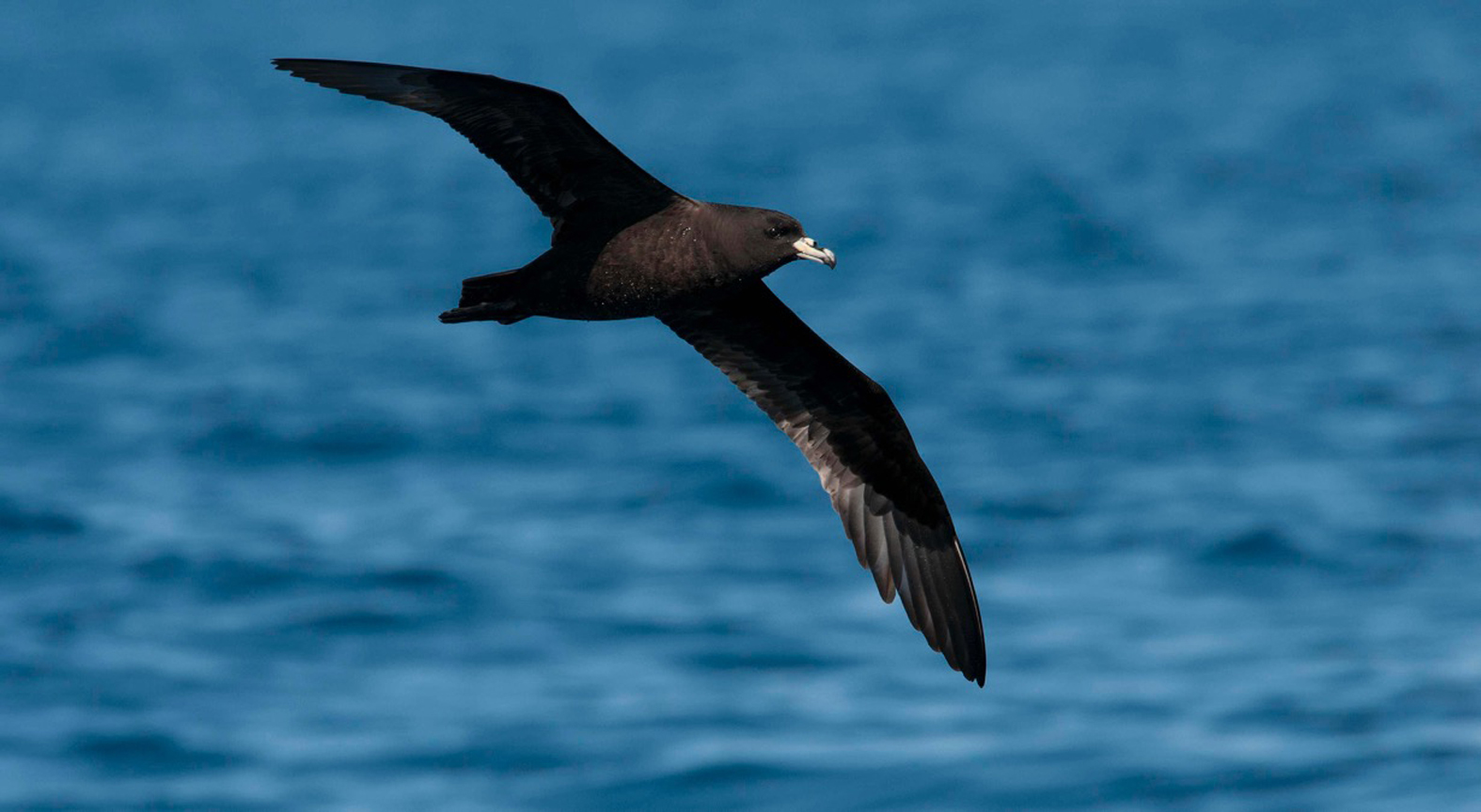
Janice Malloy asks why many of our precious tāiko are not returning.
... READ FEATURE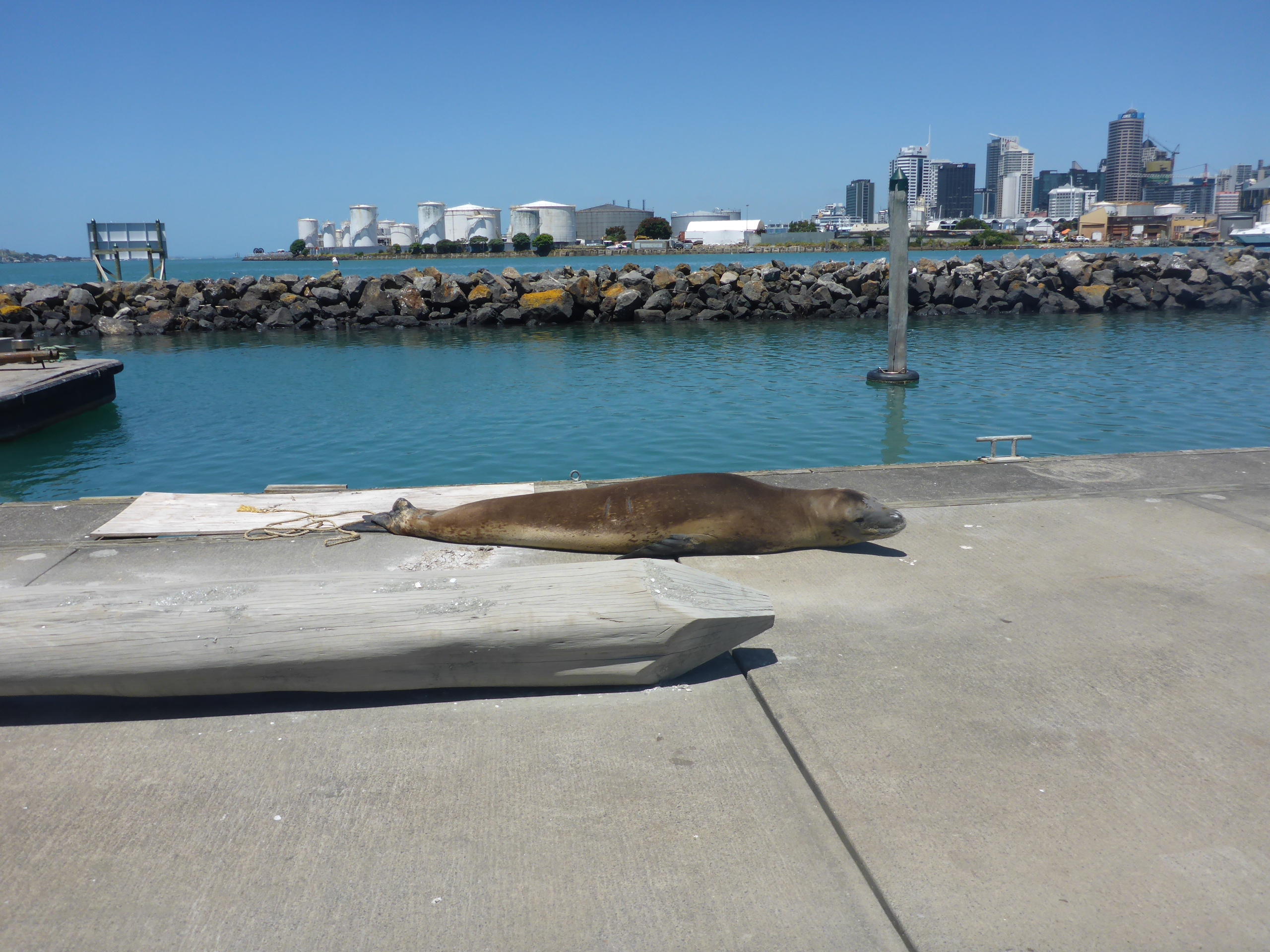
A leopard seal that has taken a fancy to the Hauraki Gulf is challenging accepted norms for the animal usually found in Antarctica.
... READ FEATURE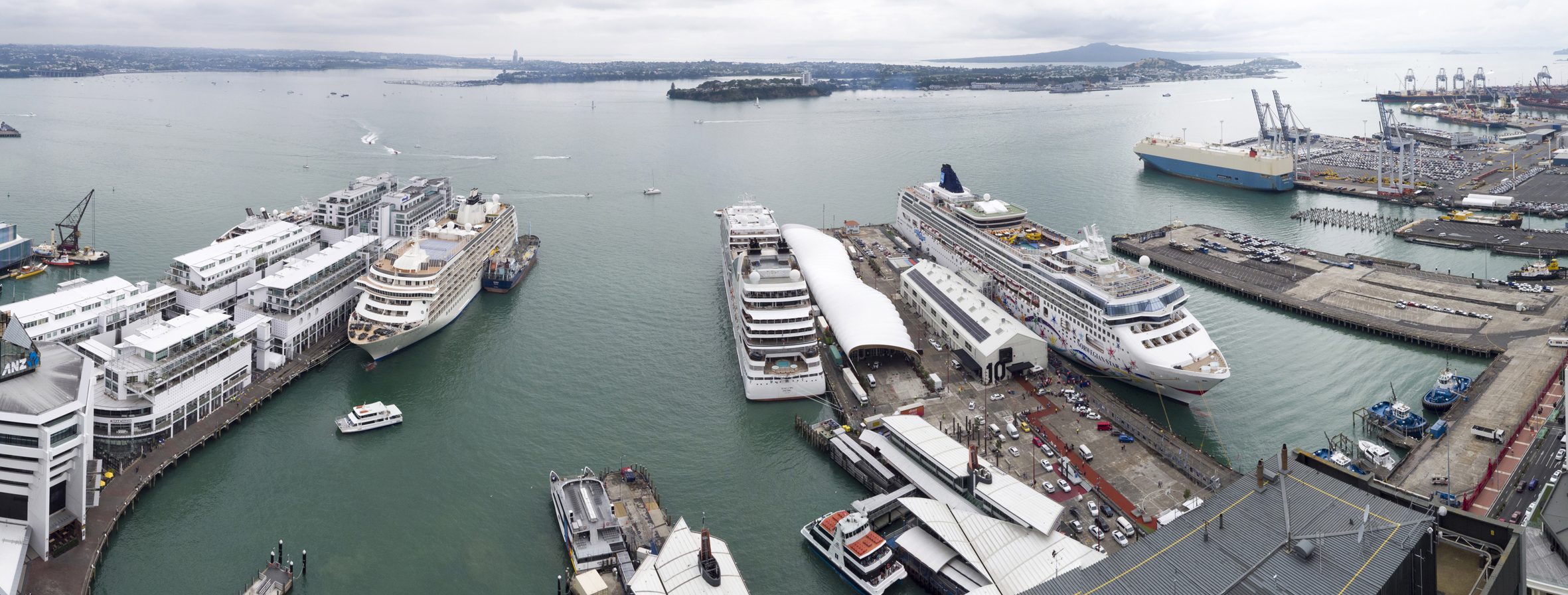
More cruise ships will be moving through the gulf in coming years, but with speed and light issues, is it time to have a serious conversation around protocols for them?
... READ FEATURE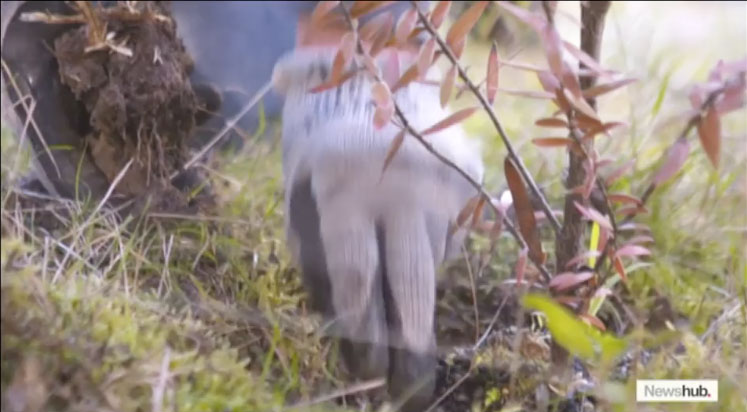
Kauri surrounds the late artist Colin McCahon’s Titirangi house and were included in many of his paintings.
But the area is badly affected by Kauri Dieback with 23 of the 25 trees now dying from the deadly wasting disease.
In a project to save the rich heritage of the McCahon trees, The Kauri 2000 Trust, the Colin McCahon House Trust, and the Bank of New Zealand were behind seeds being taken from their cones and grown to produce young tree’s. Heavily quarantined as they grew, 100 young plants have now been transported to Rotoroa Island and planted by volunteers.
Read more here

Exceptionally warm water off the east coast and Hauraki Gulf during last summer may be behind more blue whales being seen in the Gulf this winter.
Six of the giant marine mammals, including a mother and calf, were spotted in just one week.
Regularly out on the water, Auckland Whale and Dolphin Safari staff say there are usually 15 sightings a year, and in 18 years they have not seen this many.
Both Pygmy blue whales and the Antarctic ‘true’ blue whales can be seen in our waters. Their populations are still recovering after being severely depleted by commercial whaling last century. Whaling saw the Antarctic population plummet from around 20,000 to under 2,000.
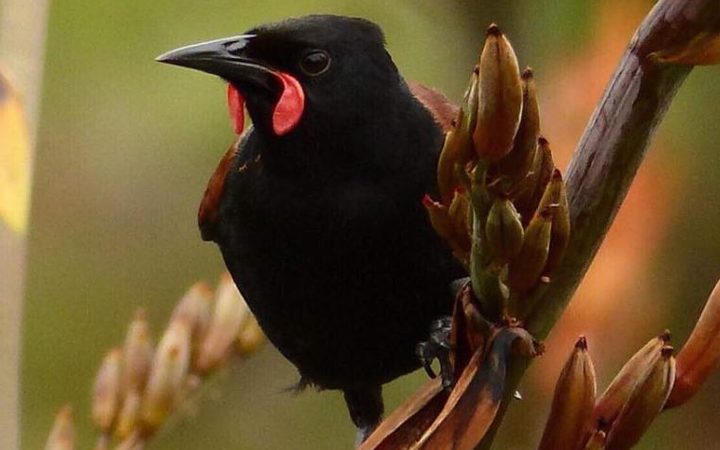
Even though it is just 3.4 kilometres off the coast, the Whangaparaoa Peninsula is normally a flight-too-far for tīeke/saddlebacks on Tiritiri Matangi Is.
But 40 were given a helping hand to resettle there in May, behind the safety of Shakespear Regional Park’s predator fence.
The park is proving its credentials as a safe mainland sanctuary for native wildlife with Whiteheads, North Island Robin and little-spotted kiwi also released behind its fence.
Whangaparaoa residents are already seeing the benefits with more native birds flying into their gardens.
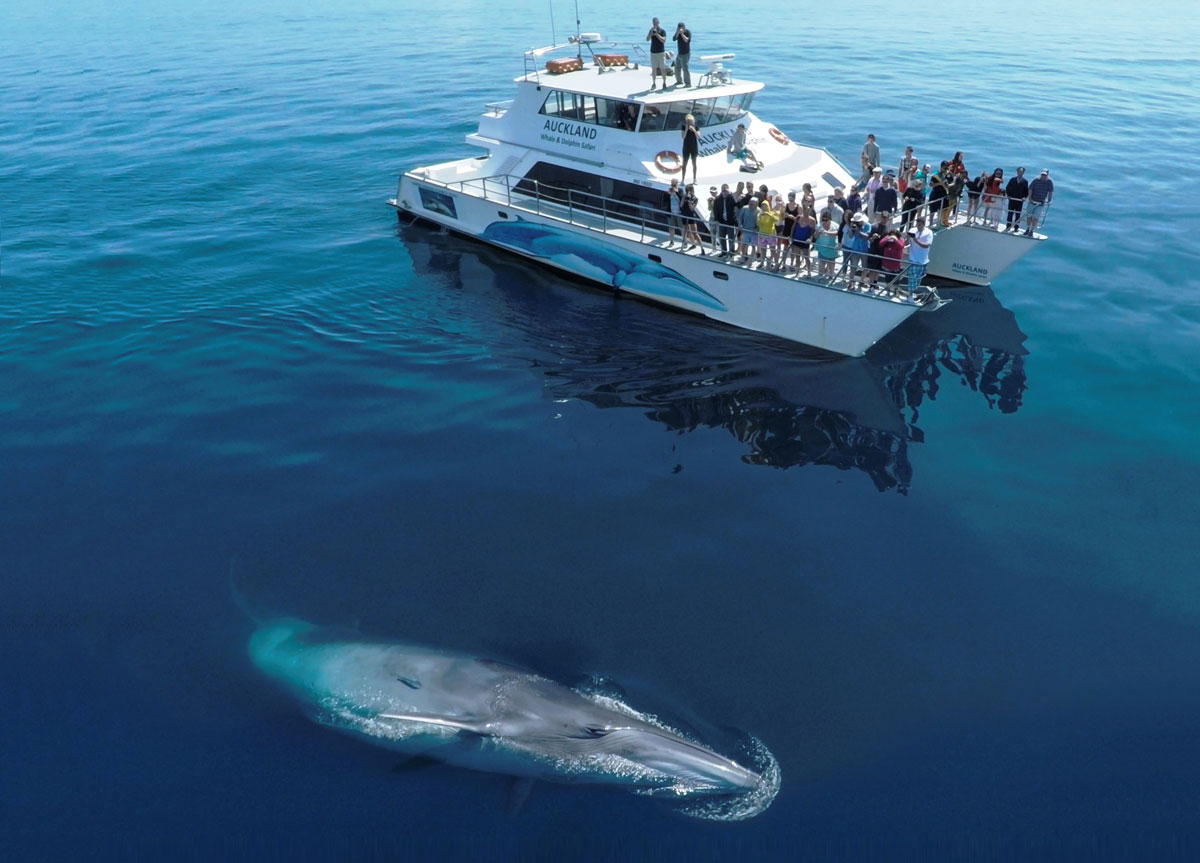
Delwyn Dickey discovers tourists wanting to understand the Gulf.
... READ FEATURE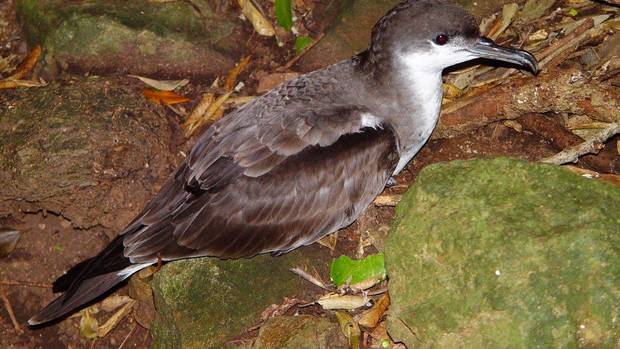
New guidelines from the Department of Conservation, for the handling of seabirds on cruise ships, are being called for after the death of 20 shearwaters that landed on one of the ships, last summer.
Attracted by the ships bright lights, the 64 birds had been placed together in cardboard boxes by the crew, with stress from being in such close quarters and injuries from fighting, behind the deaths.
See our feature story for more on the impacts of cruise ships on the Hauraki Gulf.
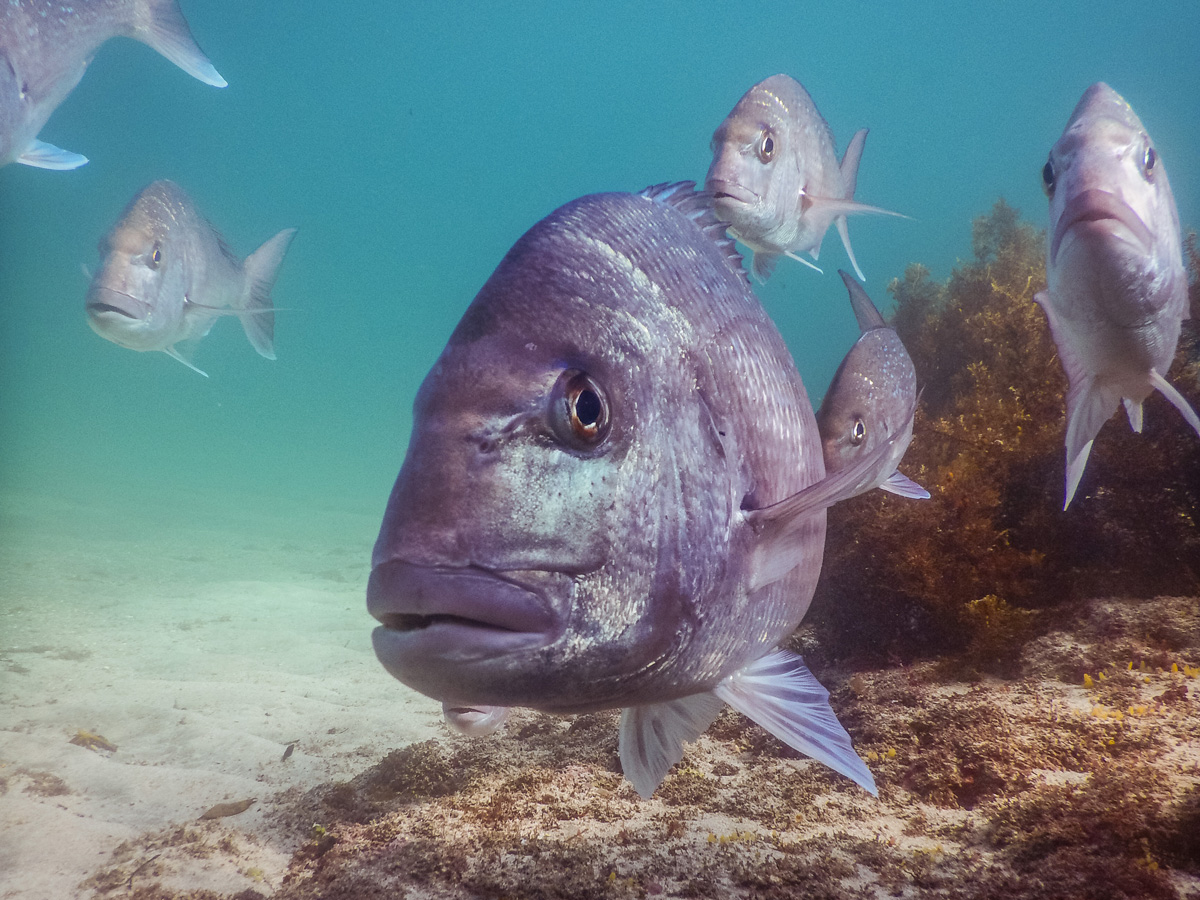
A genetic study comparing snapper inside and out of Cape Rodney-Okakari Point Marine Reserve (Goat Island) has found that the reserve contributes 10 times more juveniles snapper than if it was not a reserve.
Offspring of spawning adults from the reserve were found up to 40km away.
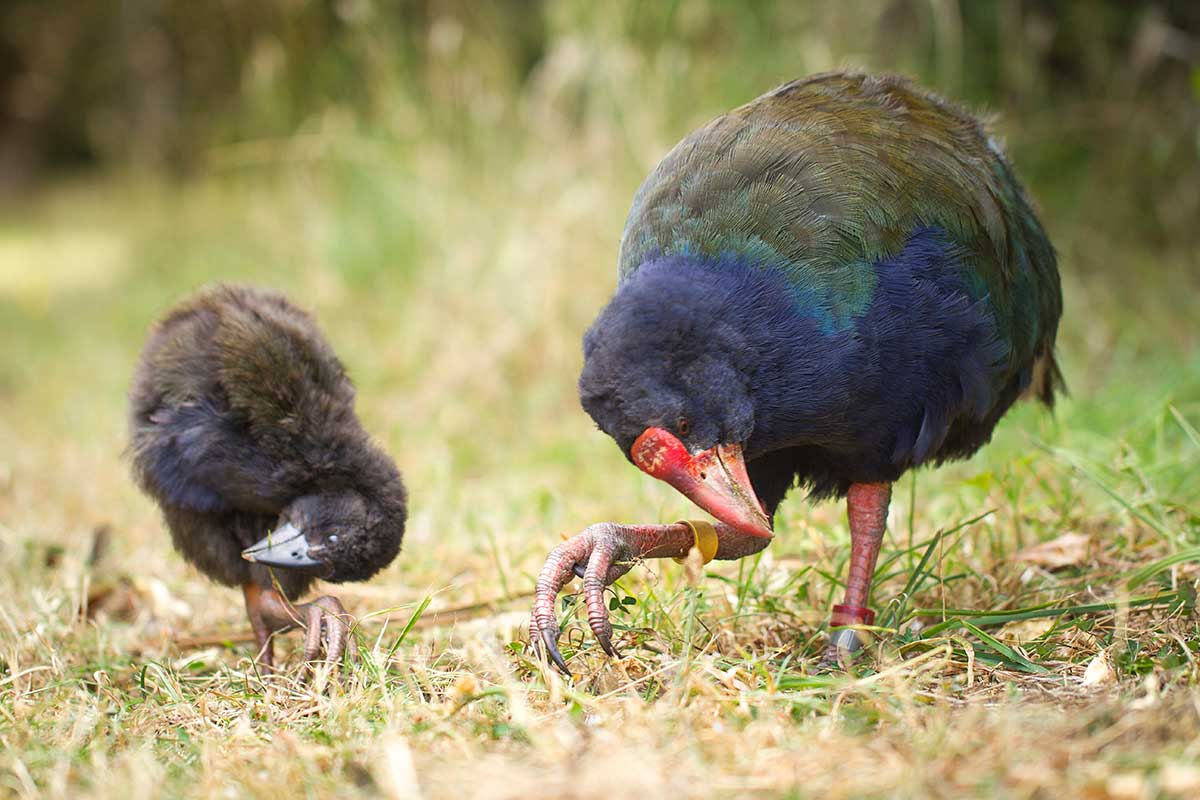
The coalition government’s 2018 budget includes a $181.6m increase in funding for the Department of Conservation over four years, a 16 per cent increase on the current departmental allocation. It includes $81.6m for landscape-scale predator control. The budget has also allocated funding to support an independent review into the fisheries management system as well as to upgrade fisheries monitoring and compliance efforts.
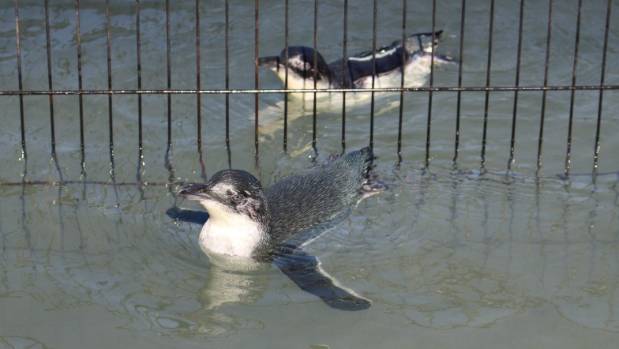
They were saved from starvation and fell in love while they recovered in captivity on Waiheke Island. But there was an emotional dilemma for the little blue penguins at the heart of this love story when one was ready to be released but the other wasn’t.
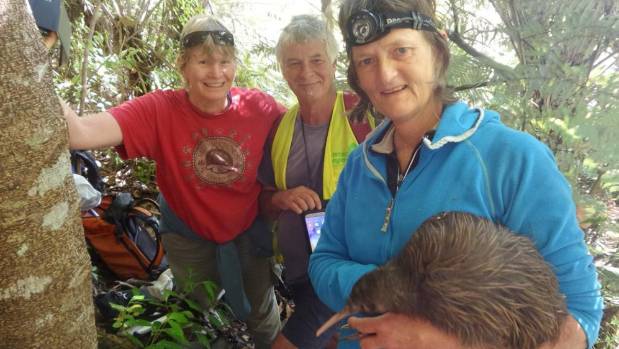
Young kiwi have been returned to the wild on the Thames coast at Te Mata. The 19 youngsters were taken from the area, while still in their eggs, to be hatched in the safety of Auckland Zoo. They grew up on Rotoroa Is until heavy enough to fend off predators before being returned to their original wilderness home.
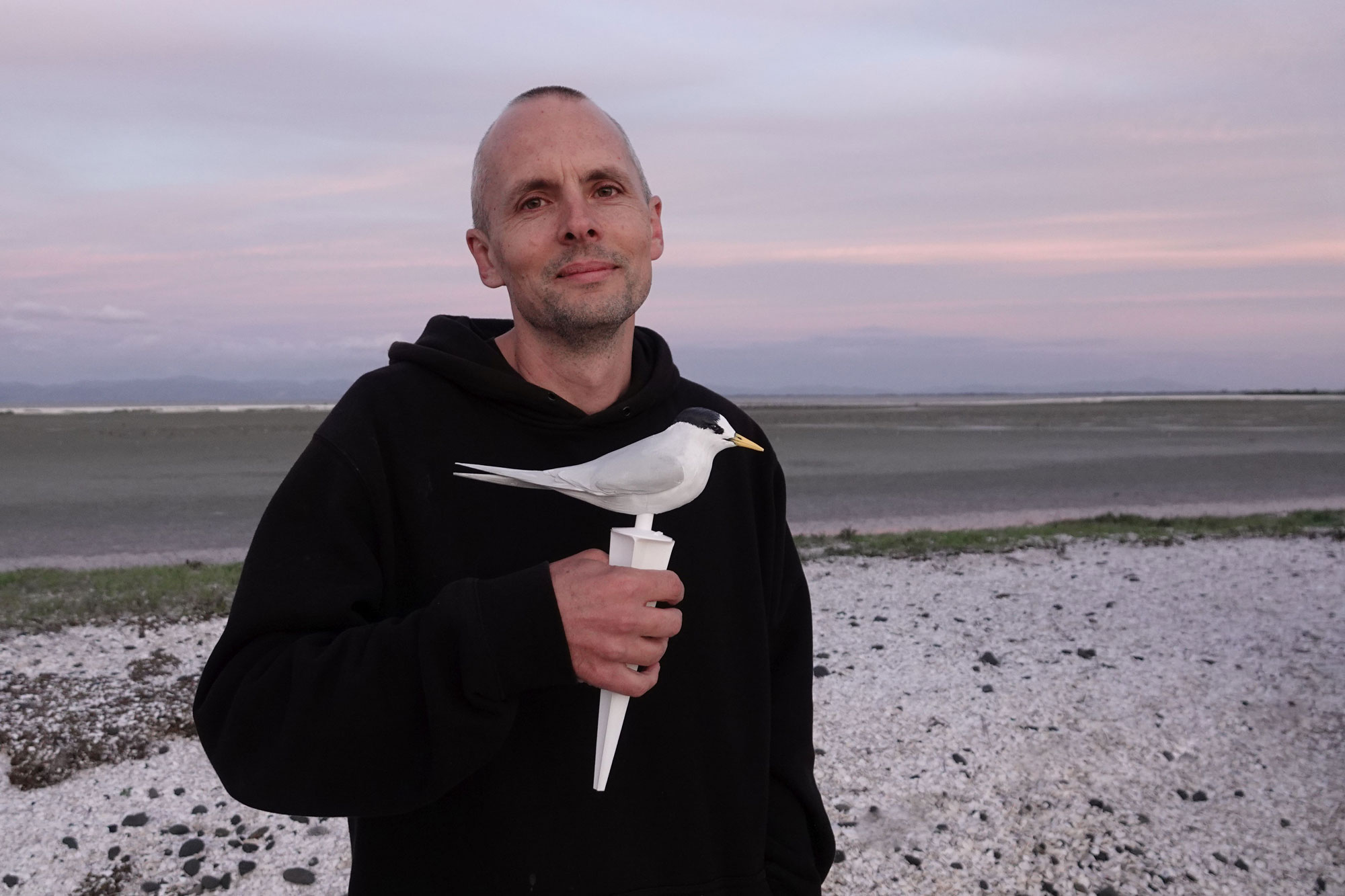
Using 3D modelling to help our rarest endemic breeding bird
... READ FEATURE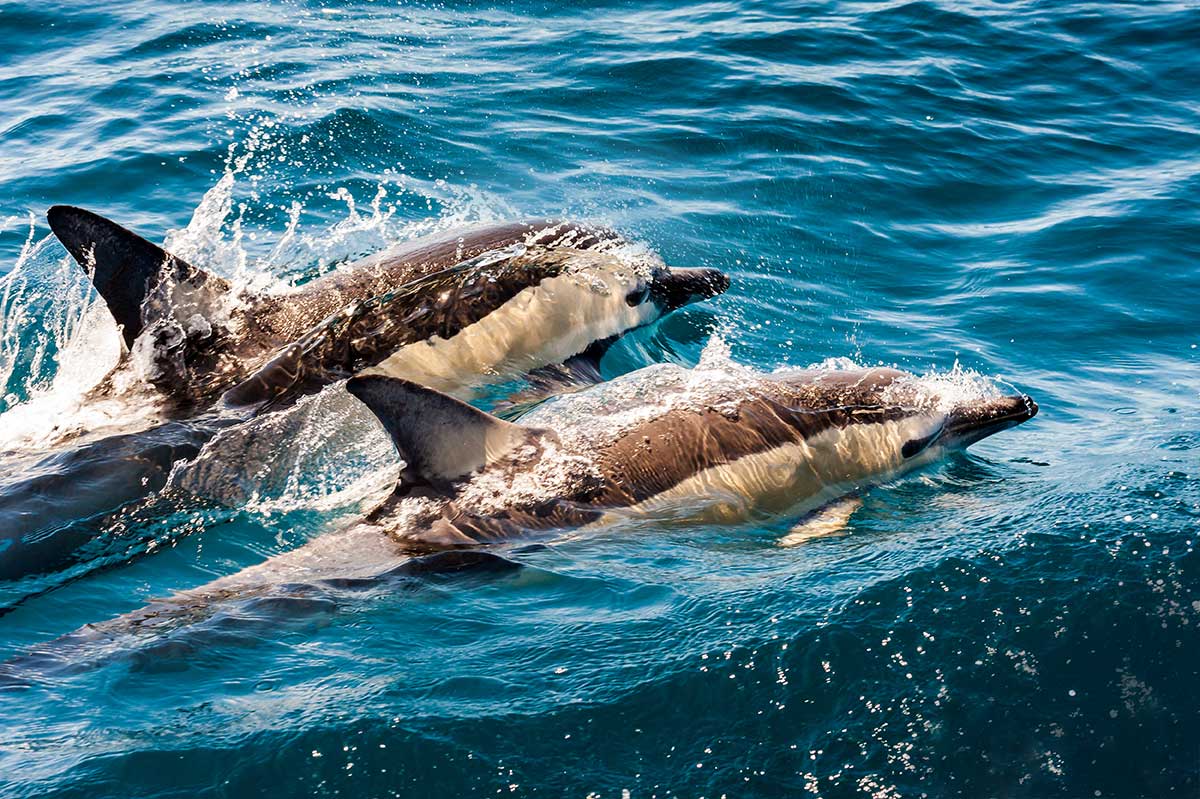
A new report has been published. What has it found?
... READ FEATURE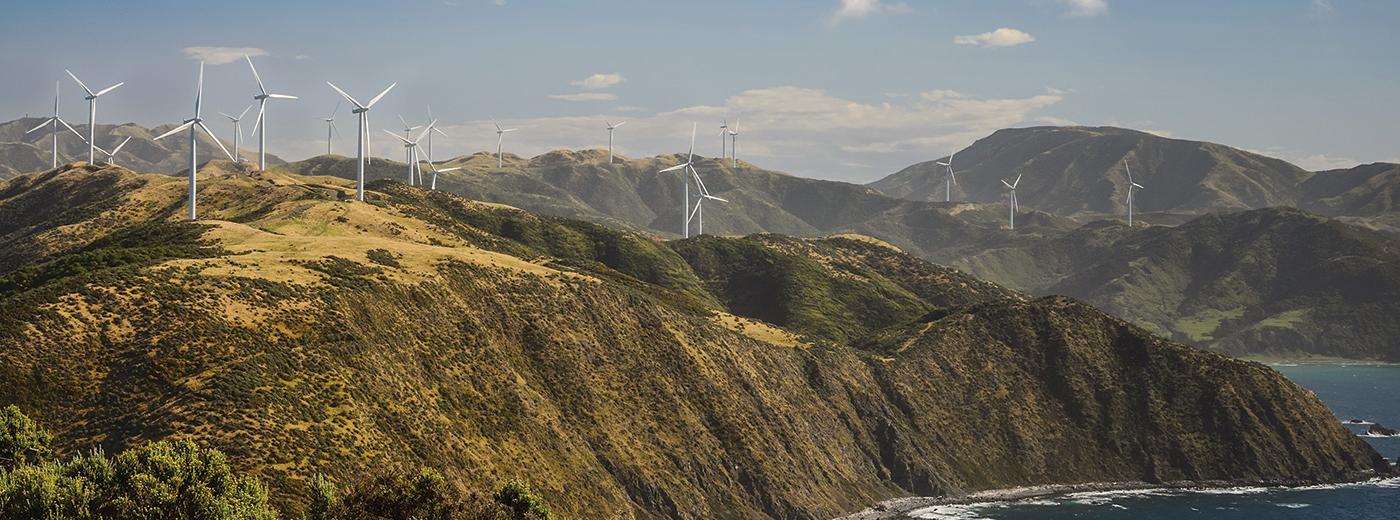
I’m pleased a response to the Sea Change Tai Timu Tai Pari marine spatial plan is on the list of priorities for the new Minister of Conservation to consider in her first 30 days, in recently-released Briefings for the Incoming Government.
It is a year since the plan was launched and this is now long overdue.
The idea of an independent advisory group to advise marine ministers on implementation and lead additional consultation is a good one and I look forward to supporting it.
As this issue of the Gulf Journal shows there are exciting things happening around the Gulf.
Dan Hikuroa believes our success in marine spatial planning and protecting Bryde’s whales comes from listening to the voice of the Gulf.
The work of the Revive our Gulf project has reached a new stage, with mussel reefs now being created around Mahurangi harbour.
Elisabeth Easther has been revisiting people and places made familiar by her mother’s television series and book in the 1960s.
And Mary Frankham is catalysing conservation projects and stitching them together from the Gulf to the Waitakere ranges.
Enjoy these stories and a long, hot summer out and about on the Gulf.
– Mayor John Tregidga

A team from the Northern NZ Seabird Trust reported an unexpected sighting on their way back from a seabird survey of Rakitu (Arid) Island to Omaha last month.
Several kilometres west of Miners Head (between Aotea/Great Barrier Island and Hauturu/Little Barrier Island) they encountered five pygmy blue whales on a natural slick line. Chris Gaskin reports there had been lots of bird action just prior to the encounter.
“At first, we saw two whales, then three more, two of which joined the others. These were very large, pale grey (mottled or patchy) whales, with a high vertical blow, and very, very small fins long way back on the body. The whales were very active, rolling with pectoral fins out of the water on occasion, surging, stunning turquoise against the dark water. There were heaps of salps, krill, algae, seaweed, and feathers in the water – very low vis underwater sadly.”
– Chris Gaskin
This photo, along with others taken by Edin Whitehead, were used to confirm the whales as pigmy blue whales, a sub-species of the blue whale and known to be occasional visitors to the Gulf.
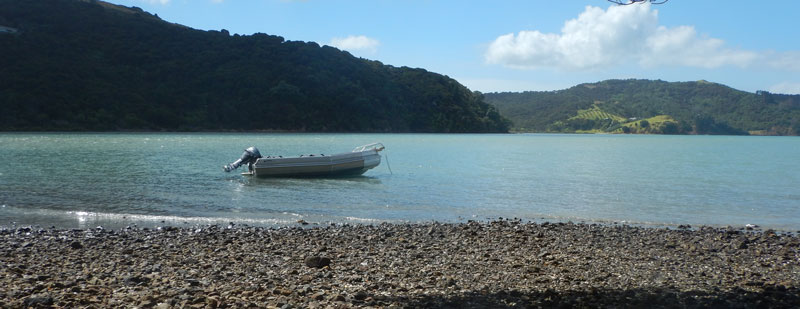
The Waiheke local Board has release a commissioned report following ecological surveys of potential marine reserve areas on Waiheke Island.
The report considers five locations and recognises their merit as part of a marine reserve network for Waiheke Island.
The board agreed to release the report for community consideration and to encourage community groups to lead on any marine reserve applications.
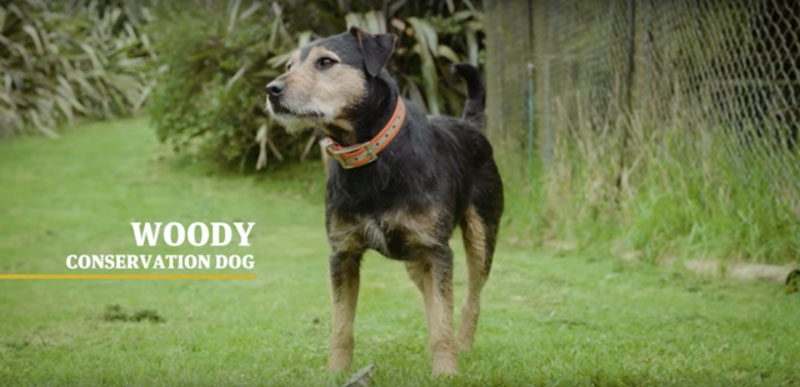
The Hauraki Gulf will benefit from Kiwibank’s support for DOC’s Conservation Dogs Programme.
Increased funding means pest detection dog handlers will now be based in Auckland, Whangarei, Warkworth and Whitianga, assisting with biosecurity monitoring, including surveillance and incursion-response. Read more here.
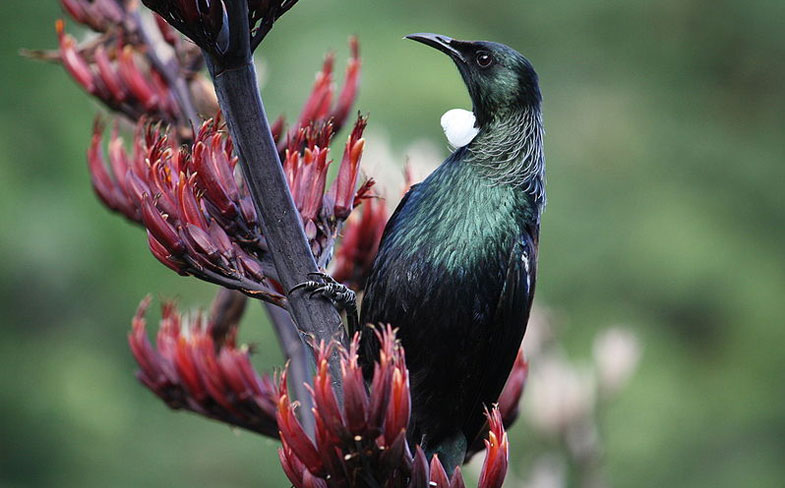
Predator Free 2050 Ltd, the Crown company established to secure funding for predator-free projects around the country, has received over 40 expressions of interest for funding and support for large-scale efforts by conservation groups. They include proposals from Waiheke and Great Barrier Island groups.
Several will be shortlisted and funded as ‘pathfinder projects’, to prove new tools and collaborative approaches. http://pf2050.co.nz/news/
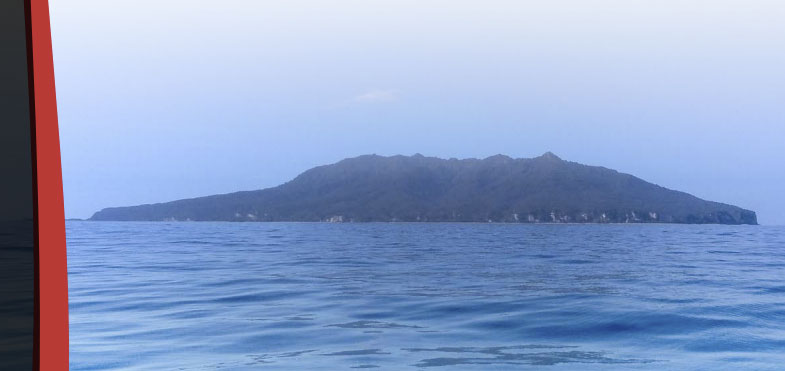
The Hauturu-ō-Toi / Little Barrier Island Nature Reserve Management Plan became operative on October 2 after approval by the Ngāti Manuhiri Settlement Trust and Auckland Conservation Board. The settlement legislation recognises Ngāti Manuhiri as kaitiaki, or guardian, of the nature reserve. The plan is the second post Treaty settlement management plan to become operative and be implemented. It provides DOC with a guide for managing the island, a safe haven for many critically endangered species and taonga for Ngāti Manuhiri. Read more here.
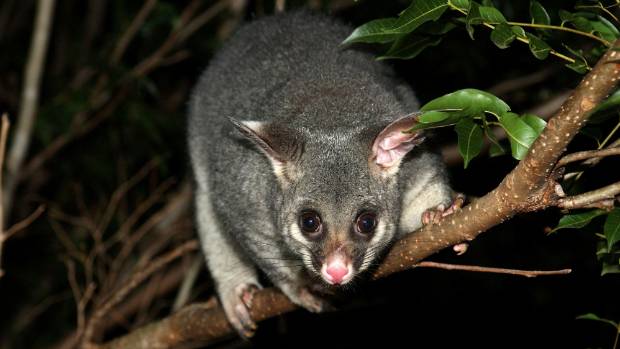
Auckland Council is proposing spending $307 million over the next 10 years to rein in the region’s pests – more than threefold its current $88 million budget. The battle to curb kauri dieback and Dutch elm disease was at the heart of the funding increase, getting 10 times more than the $5 million currently allotted to it. Meanwhile, $40 million would go towards culling possums. Read more here.
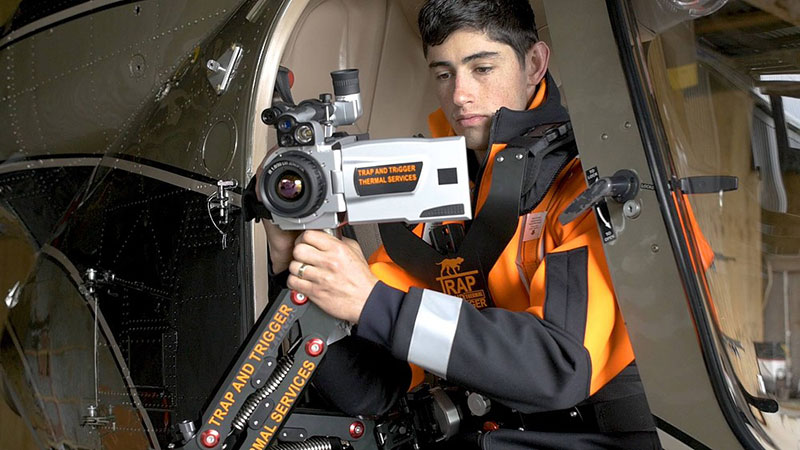
World Wildlife Fund’s Conservation Innovation Awards search out the brightest and boldest environmental inventors, creators and dreamers to help transform their conservation ideas The WWF-New Zealand’s 2017 Conservation Innovation Awards, announced this month, recognised a high-tech thermal imaging solution for invasive species’ management; a device that detects real-time E. coli contamination in freshwater; and an innovation that combines thermal imaging and artificial intelligence for a predator free New Zealand. A record-breaking 47 entries were received for this year’s awards. Read more here.

Motutapu re-opened to the public on Labour Weekend, seven months after Cyclone Debbie damaged roads and tracks. The Rotary Centennial Loop Track has been repaired, helped by the Rotary Club of Newmarket and Dole NZ, and the campground at Home Bay is open but numbers are restricted due to damage.
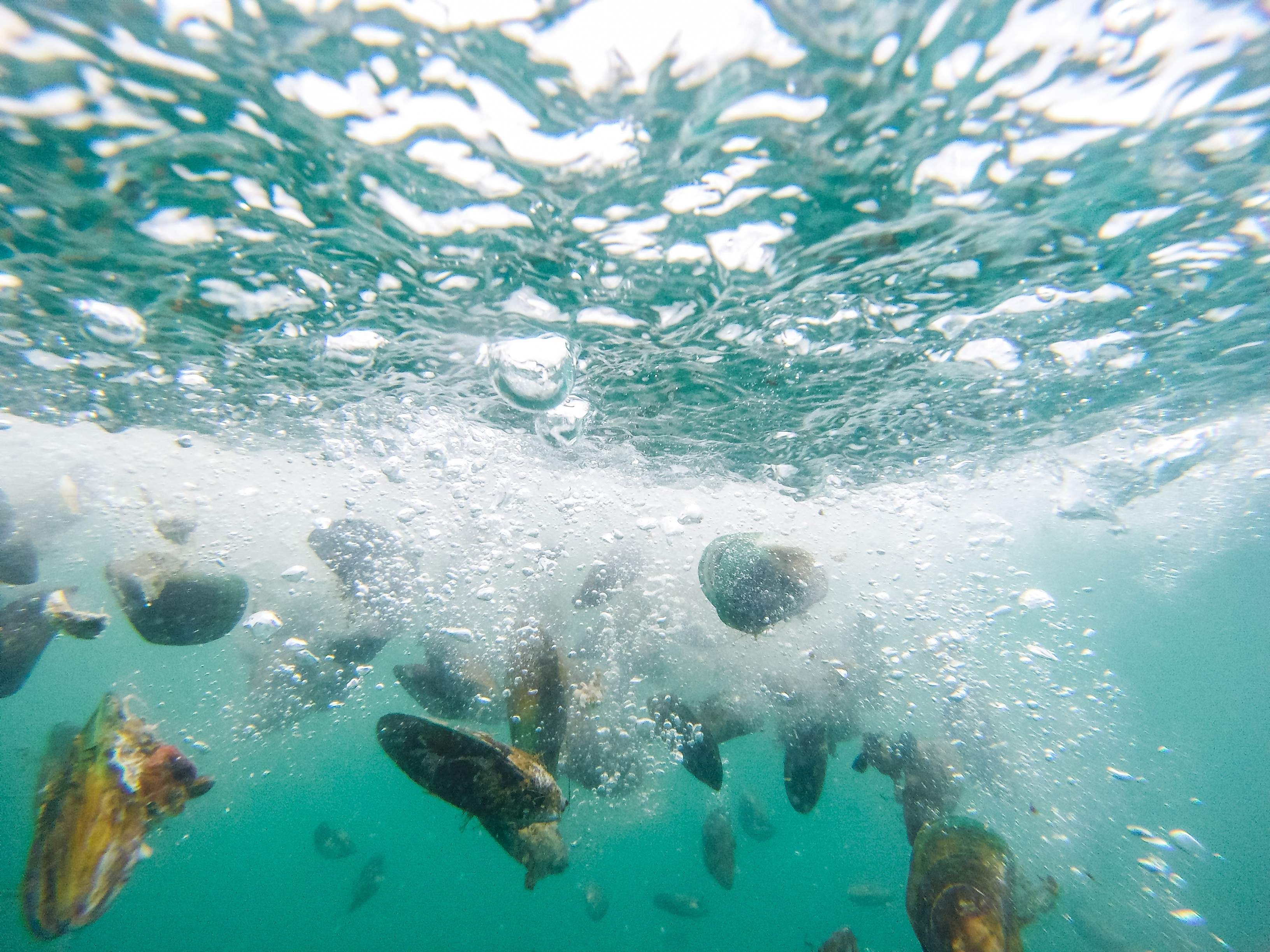
Five living fish nurseries have been installed around the Mahurangi Harbour by Revive Our Gulf.
... READ FEATURE
Jochen Zaeschmar’s patience pays off
... READ FEATURE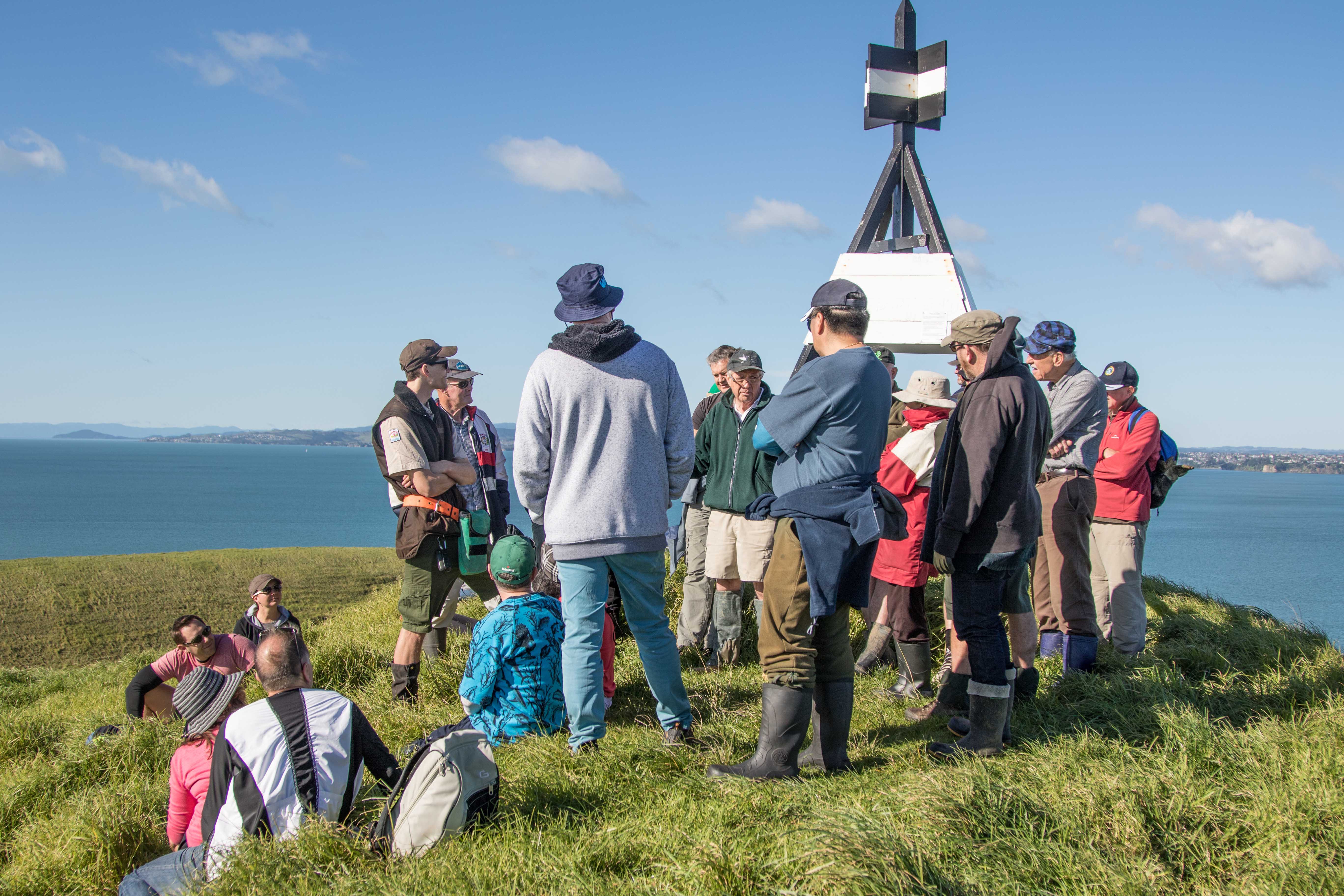
On the 15th of July 32 people volunteered their Saturday to pull up weeds on Motukorea (Browns Island). Accompanied by Auckland Council rangers the group made a strong start on removing weeds which had risen from the ashes after a fire devastated much of the island in November 2016. In the short time since the grass was burnt a wide variety of weeds have grown on the crater slopes, including apple of sodom, moth plant, wooly nightshade, mullein, bone seed and rhamnus. More than 6,000 weeds were removed but there is still much more work to do. John Laurence, chairman of the neighbouring Motuihe Island Trust, says the island is a stepping stone for weeds to travel further into the Gulf. Volunteers, including Cr Mike Lee, were ferried to the island by members of the Outboard Boating Club.
Auckland is one of the weediest cities in the world, with exotic species outnumbering our native plants. However a native bracken has also benefited from the fire and established in the crater. The bracken will provide better habitat for the rare reptiles that inhabit the island including the moko skink.
If you would like to volunteer visit motukorea.org.
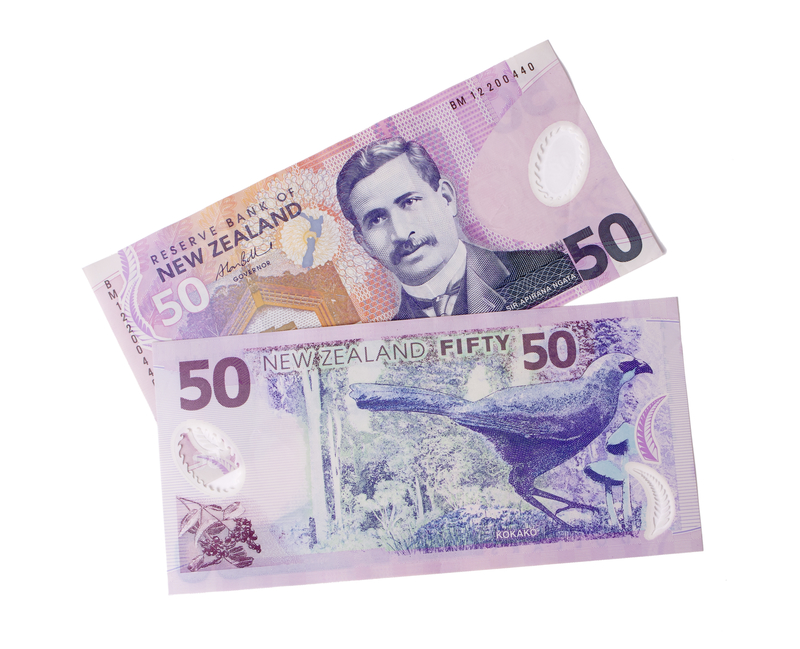
Ngāti Rehua is leading a project to eradicate pests from the Te Paparahi block at the north end of Aotea/Great Barrier, with the ultimate objective of seeing the return of kōkakō to the island.
The last kōkakō were removed in the early 1990s and transferred to Hauturu/Little Barrier.
The Department of Conservation is supporting the project through the DOC Community Fund. A feasibility study confirmed that the concept was achievable.
Planning work is currently underway to establish monitoring lines in the block and to assess the methodology for pest eradication.
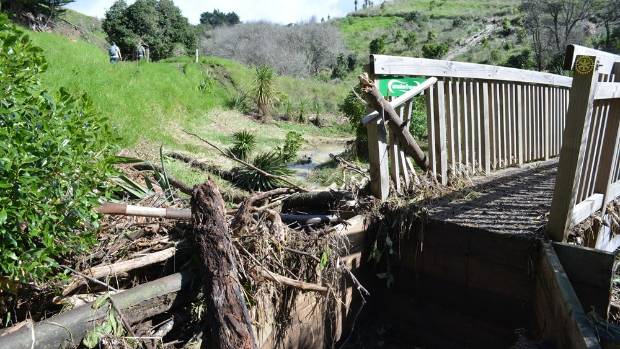
Storm-damaged Motutapu Island’s restoration project has received fresh funding from global fruit provider Dole.
Motutapu Restoration Trust General Manager Liz Brooks said the funding would enable the trust to further develop habitats to achieve its long-term goal of creating sustainable populations of takahē, Coromandel brown kiwi, tieke/saddlebacks and other threatened species.
Dole NZ General Manager Steve Barton said the company’s investment would provide stability and flexibility for restoration efforts
Motutapu has been closed to the public since roads, tracks and more than 5000 trees were damaged by Cyclone Debbie.
Volunteers have continued the planting programme with the island due to re-open to the public on Labour Weekend.
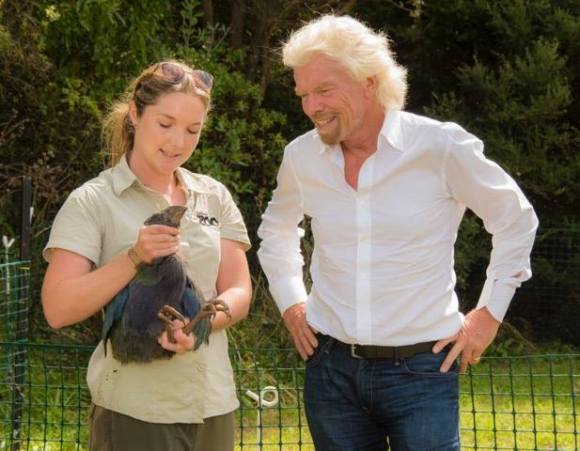
International entrepreneur and philanthropist Sir Richard Branson has accompanied Auckland Zoo staff to Rotoroa Island to perform a health check on the island’s first takahē chick.
He also planted trees with Auckland mayor Phil Goff at Shakespear Regional Park.
www.nzherald.co.nz/nz/news/article.cfm?c_id=1&objectid=11825552
The Little Barrier Island Supporters Trust has launched a new documentary to profile the wonders of Te Hauturu te-o-Toi. Little Barrier Island: New Zealand’s Ark showcases the island’s stony shores and their resident reptiles; its high ridges, riddled with the burrows of sea birds; and ventures deep into primeval forest, where native birds, insects and the ancient tuatara thrive.
The film is an opportunity for the public to appreciate the nature reserve, where visitor numbers and movements are strictly regulated. The documentary has been produced by multi-award winning natural history production house NHNZ. littlebarrierisland.org.nz
One of New Zealand’s rarest bush birds, the hihi has returned to Taranaki after a 130-year absence. Forty hihi/stichbird were released into the bush at Rotokare Scenic Reserve near Eltham earlier this month.
Hihi were once common throughout the North Island but have been absent from Taranaki due to introduced mammalian pests.
The birds, 20 males and 20 females, were translocated from Tiritiri Matangi. They joined other rare and endangered species, such as kiwi, tīeke, the rare fernbird and spotless crake in the fenced, predator-free sanctuary.
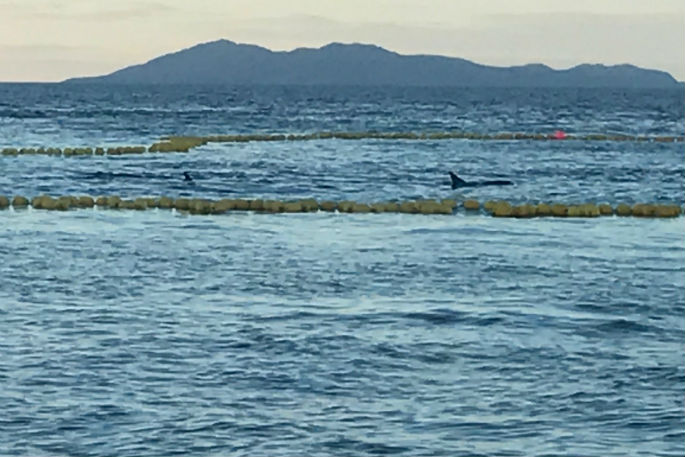
Sanford Ltd has congratulated the skipper of a purse seiner who released a net of jack mackerel after half a dozen dolphins swam into it. The San Columbia was fishing off the Tauranga coast when the incident occurred, witnessed by a boatload of recreational fishers.
About 30 tonnes of fish were lost when the skipper chose to release bow end of the net enabling the dolphins, and the jack mackerel to escape.
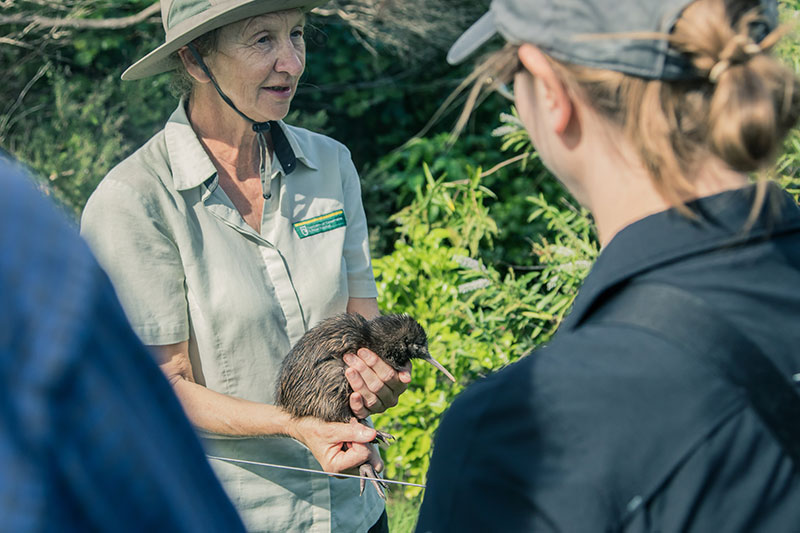
Cyclone Debbie has left a huge mark on Motutapu island. Slips and landslides affect almost the whole island with roads, tracks and campground closed to the public since the storm hit on April 4.
Fortunately the Trust’s nursery and Reid Homestead were unscathed. The Motutapu Restoration Trust hoped to resume public planting days in May. Coromandel Brown Kiwi now number 34 on Motutapu. Removing eggs from the wild and hatching them in a predator-free environment increases the chance of survival from 5% to 95%.

Tim Lovegrove investigates
... READ FEATURE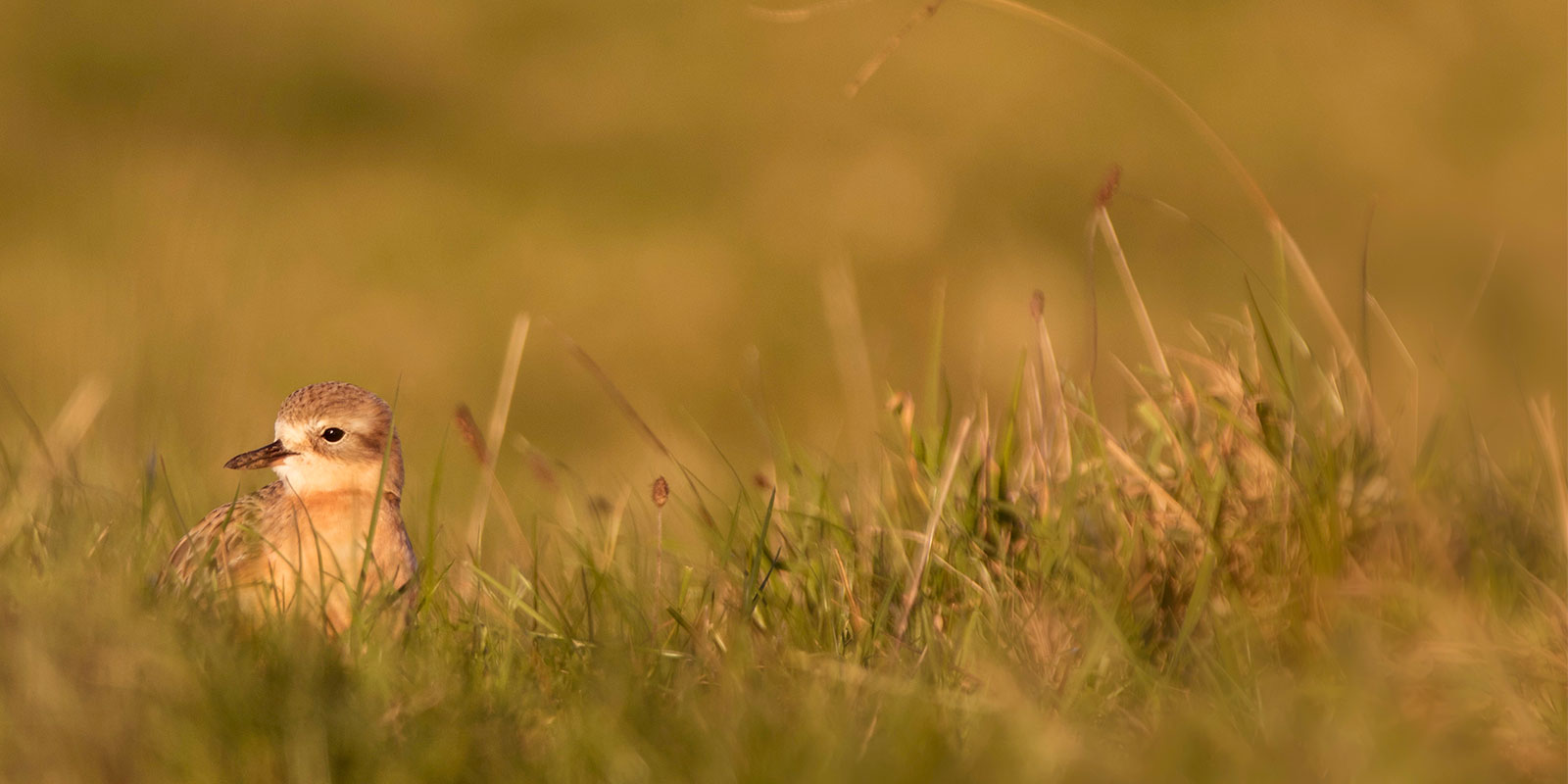
The Local Government and Environment Select Committee is currently considered a bill to enable development of housing on public reserve land at Point England. The development would impact on the last remaining shorebird roosting areas on the Tāmaki Estuary. A public petition to “Save Point England” attracted 1848 signatures.
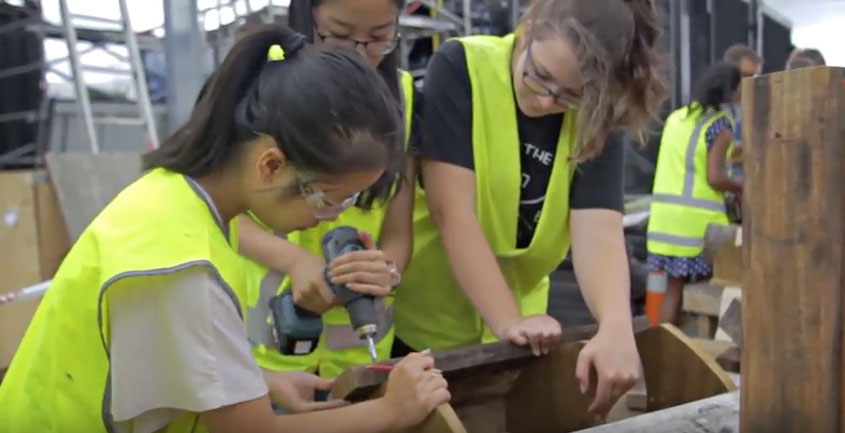
Great Barrier Island’s penguins will be better off thanks to the efforts of the Thomas family and Sustainable Coastlines.
Thirty one participants in the MAD (Make a Difference) youth sustainability programme helped built 18 penguin boxes in two hours using power tools and donated timber.
Check out Michael Jessup’s youtube film put together during Seaweek.
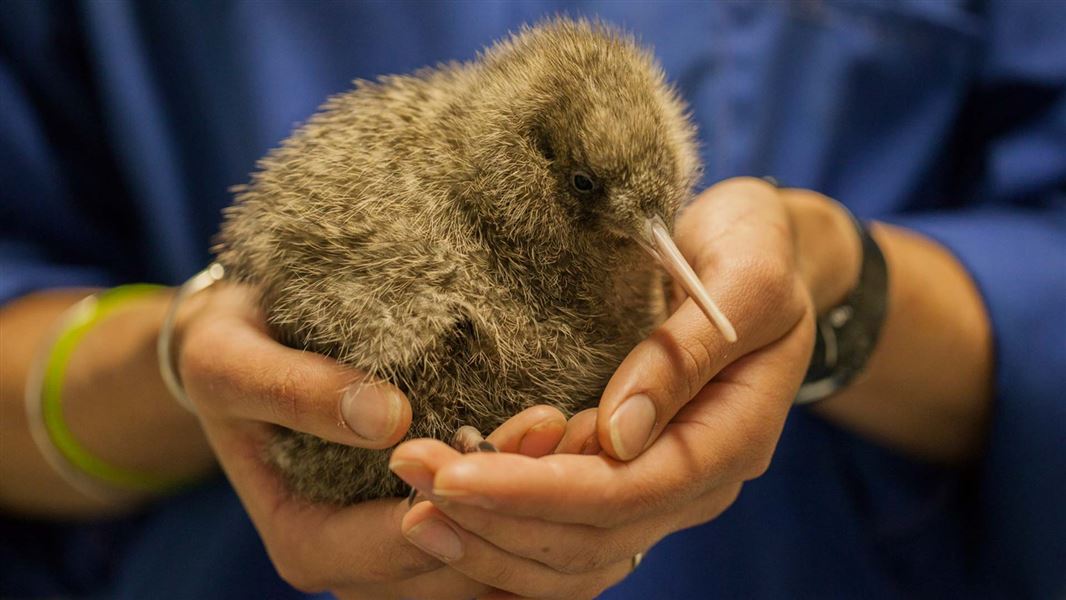
More Coromandel brown kiwi will be introduced to Motutapu Island, thanks to funding in the latest round of the Department of Conservation Community Fund.
A $28,526 grant will allow the transfer at least 16 more Coromandel brown kiwi to the island to establish a genetically viable population of 40 to 50 birds. The project has translocated 24 birds to date.
Nine Auckland community-led conservation projects received funding, including for a new iwi ranger on Motuora Island and restoration work at Whenua Rangatira, New Zealand’s first co-governed public park created under the Orakei Act.
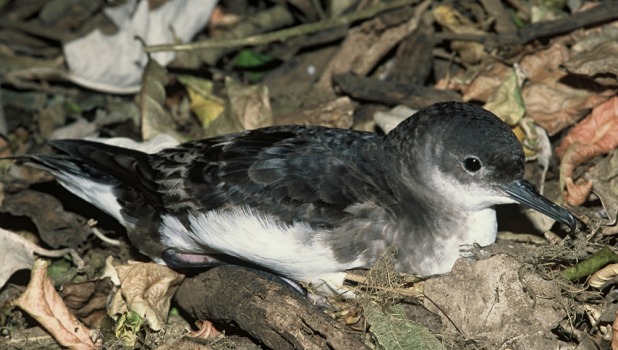
The Department of Conservation is concerned that protected seabirds have been shot in the Gulf.
At least five fluttering shearwaters with bullet holes were floating in the water near Little Barrier Island over Auckland Anniversary weekend.
Fluttering shearwaters have a conservation status of ‘relict’, meaning they have a small but stable population, and like all seabirds are absolutely protected by the Wildlife Act. Anyone harassing or harming them could be liable for prosecution and face a jail term of up to two years or a fine of up to $100,000.
DOC says information gathered by the public can help in investigations. “Taking clear photos of the incident at the time and quickly writing down notes of what was observed can prove to be critical.”

Shakespear Open Sanctuary is due to receive 40 little spotted kiwi in April and a further 20 birds in 2018.
The sanctuary offers a safe habitat of 500 ha which can contribute to the overall population growth of the smallest of New Zealand five kiwi species.
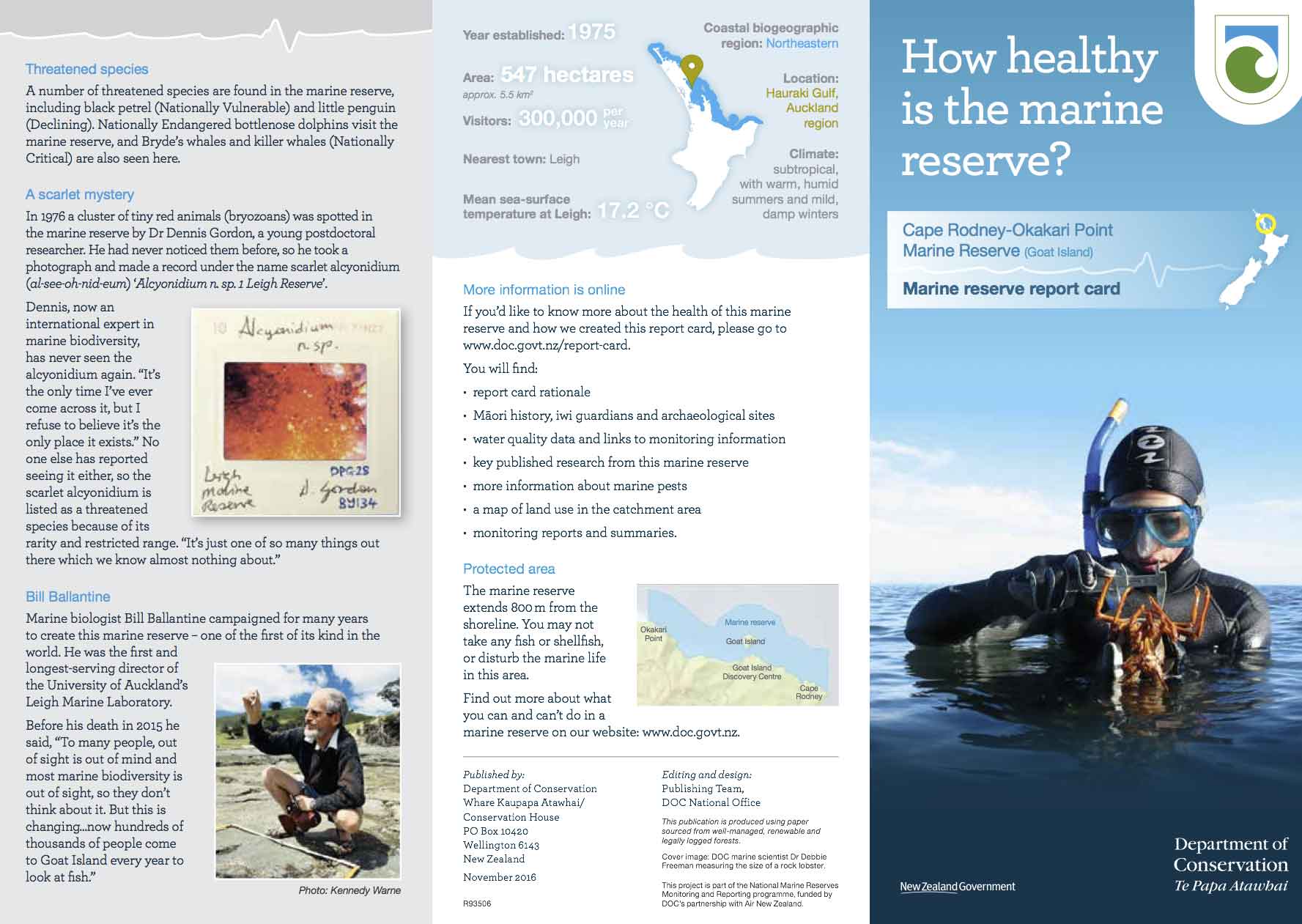
The Department of Conservation is publishing report cards to provide a summary of the health of marine reserves.
The first two are for the Cape Rodney to Okakari Point Marine Reserve at Leigh and Tawharanui Marine Reserve. Both show declining numbers of rock lobsters.
www.doc.govt.nz/nature/habitats/marine/marine-protected-areas/marine-reserve-report-cards/
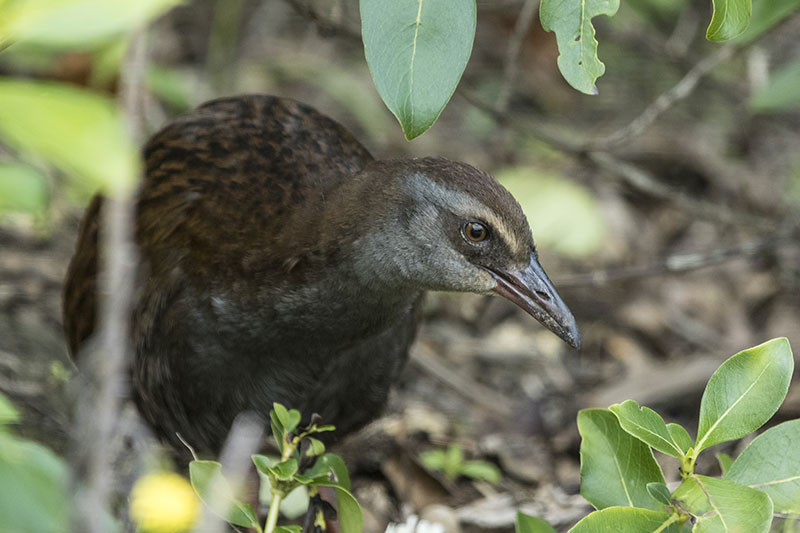
The Department of Conservation expects to undertake a pest eradication operation on Rakitu Island near Great Barrier in the 2017/18 financial year.
The Weka Recovery Group recently confirmed that weka introduced from the mainland many years ago function provide important security for the species. Planning will take retention of the weka population into consideration.
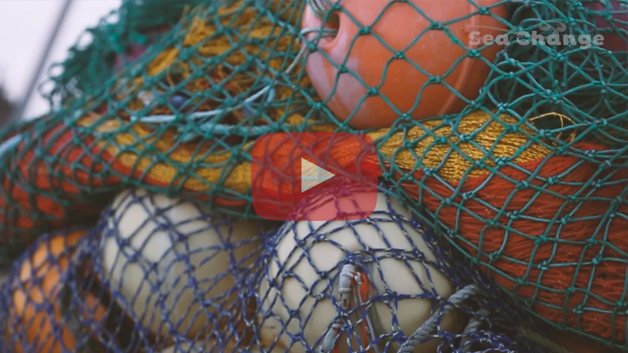
A Hauraki Gulf / Tikapa Moana marine spatial plan launched in December after three years work by a stakeholder working group is available on the Sea Change – Tai Timu Tai Pari project website.
The proposed plan contains five pathways designed to create long-term health and wellbeing for the Hauraki Gulf Marine Park. Transitions to high value wild caught and farmed fisheries, the creation of marine reserves areas and scaled up restoration initiatives, setting load limits and mitigation for sediment and nutrients, local-scale coastal management and ambitious public engagement are outlined in the December issue of the Gulf Journal.
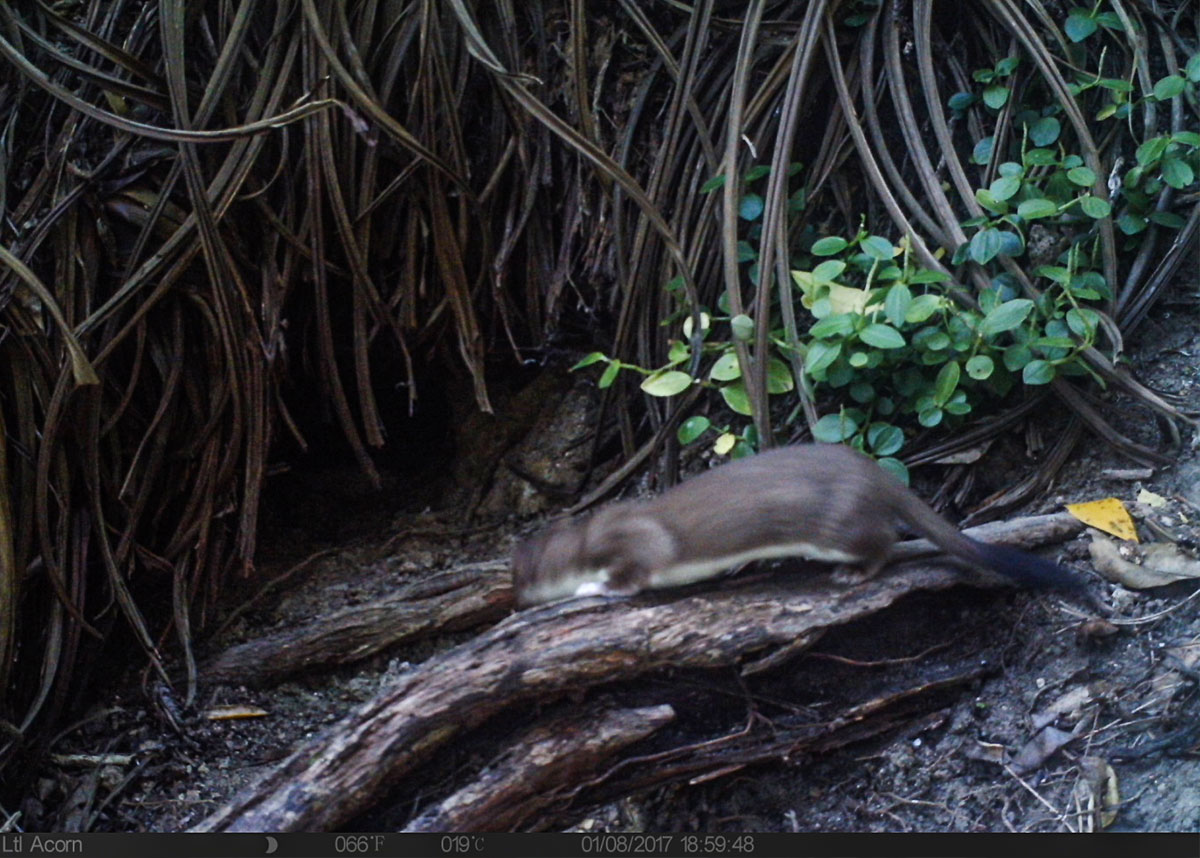
Jo Ritchie suggests a recipe for success
... READ FEATURE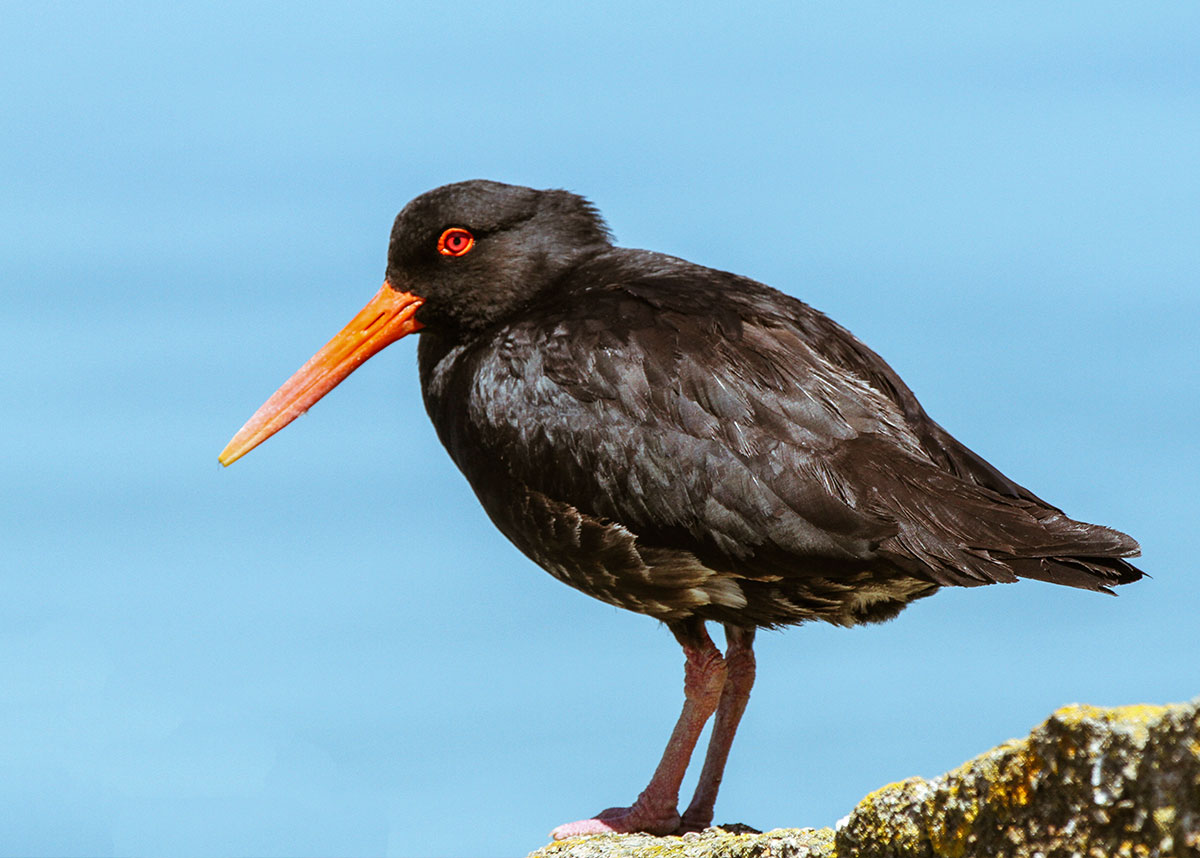
Jo Ritche reveals a favourite landscape
... READ FEATURE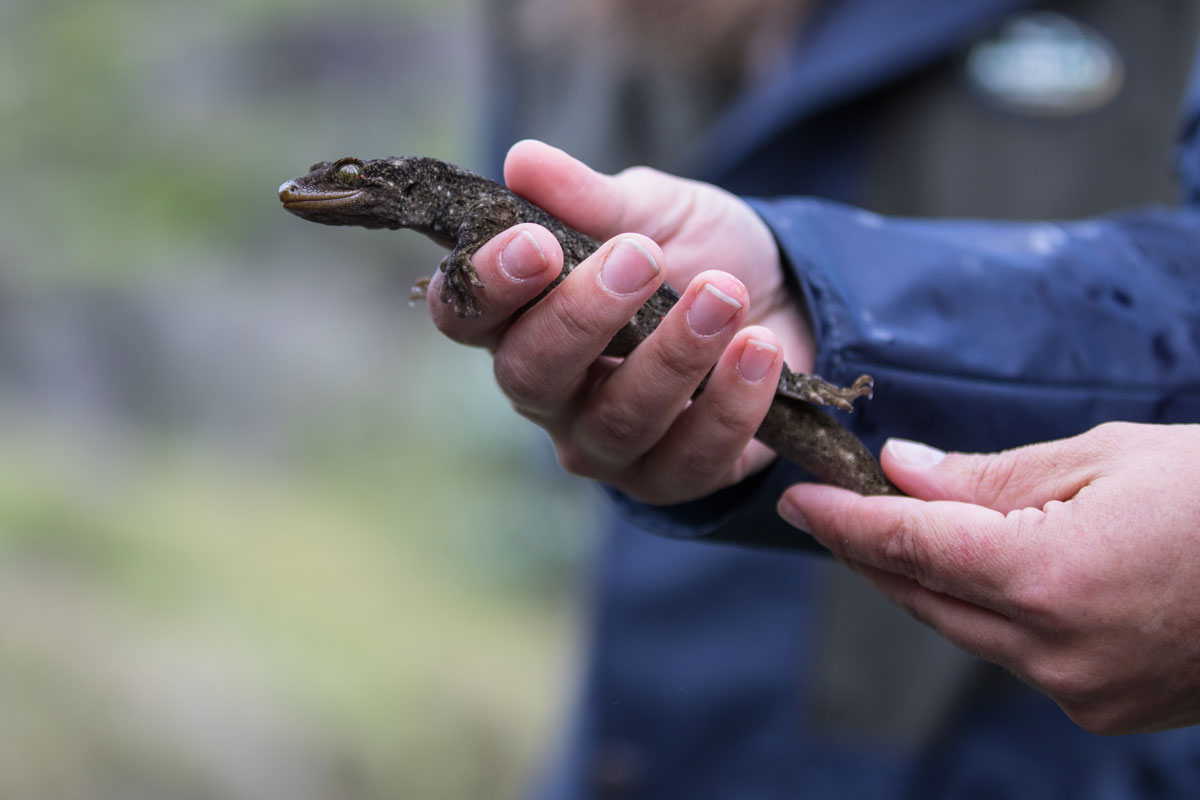
For the first time in a century, the Duvaucel’s gecko can now be found in mainland New Zealand thanks to a successful reintroduction of the species into Tāwharanui Open Sanctuary.
Auckland Council’s Regional Park Rangers and Biodiversity team worked with Massey University, volunteers from Tāwharanui Open Sanctuary Society Inc. (TOSSI), Ngāti Manuhiri and other iwi to release the geckos into the sanctuary.
Tāwharanui Open Sanctuary is predator free apart from mice. Scientists will study the effect of mice on the native gecko population over time. This will also indicate the impact mice could have if they are introduced to offshore islands.
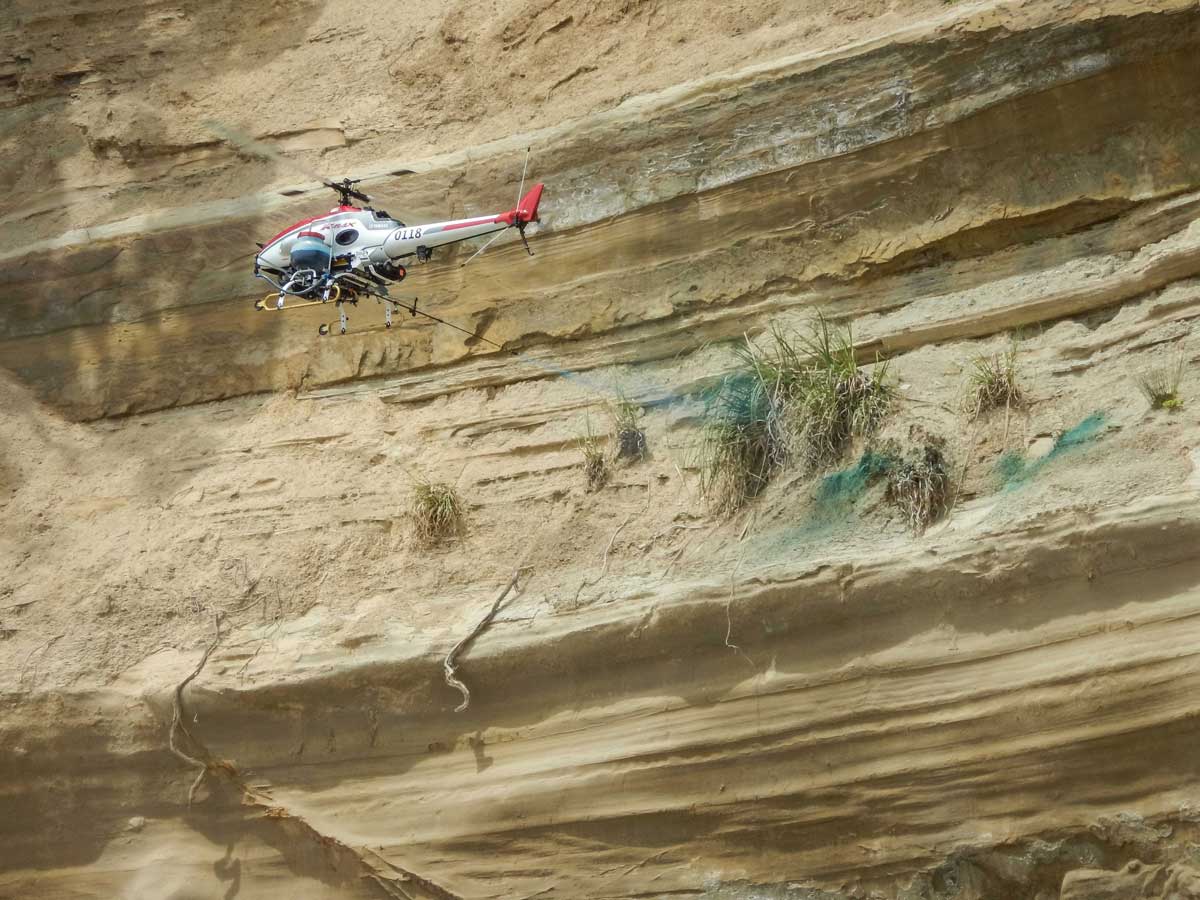
DOC, Motuihe Trust and Yamaha are trailing weed control with an unmanned helicopter.
Weed control on cliff faces can be very expensive often requiring carrying heavy loads to remote places and abseiling or a helicopter.
The RMAX helicopters are piloted by remote control and used in a wide range of industrial and research applications overseas. The trial was a success and the team have plans to further improve the precision of the technology.

Hauraki Gulf islands have helped takahē numbers to reach 300 for the first time in more than 50 years.
Takahē live in 19 different sites around New Zealand, with populations on Tiritiri Matangi, Motutapu and Rotoroa islands.
The bird was ‘rediscovered’ in 1948 in Fiordland’s Murchison Mountains and has been the subject of a marathon conservation effort since.
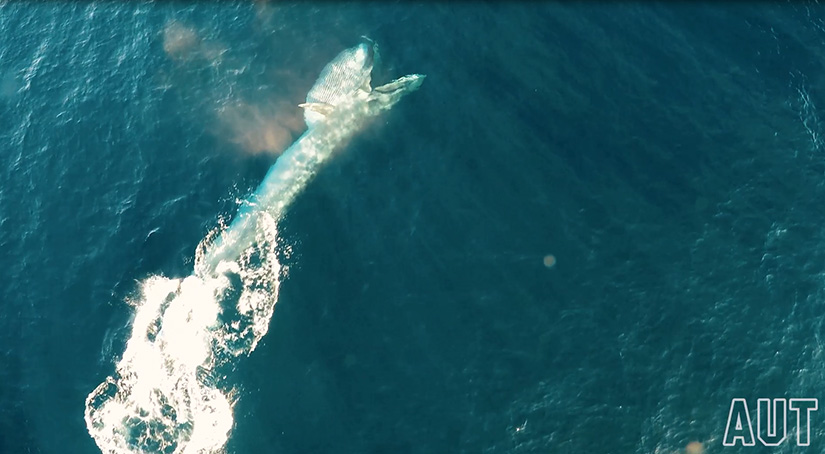
A voluntary protocol which asks ships to slow down to avoid whale strike appears to be working.
There have been no recorded deaths of Bryde’s whales in the Hauraki Gulf in the last two years.
Previously, an average of two whales a year died from being hit by ships transiting the gulf, but the last whale death from ship strike was reported in September 2014.
The voluntary initiative was brought in three years ago by the Ports of Auckland and the shipping industry.
“The mortality rate of this small population of whales was probably unsustainable prior to the shipping industry’s commitment to slow down, but now these whales have a more certain future,” said University of Auckland’s Dr Rochelle Constantine.
Average ship speed has dropped from 14.2 knots to around 10.5 knots.

NIWA scientists are asking for help from people who have had a long association with the Hauraki Gulf.
They are researching the areas where juvenile fish have congregated to find out how these nursery environments have changed over the years.
NIWA marine ecologist Dr Mark Morrison says they are particularly interested in populations of juvenile snapper, less than 10cm long in coastal waters.
He says young fish are strongly associated with what’s on the seafloor, especially seagrass meadows, horse mussel beds and sponge gardens.
Historical photographs, personal field diaries or fishing logs would be particularly valuable to document environmental change.
A computer model will be built to enable the researchers to explore ‘what if’ scenarios to help decide on the best management actions for the future.
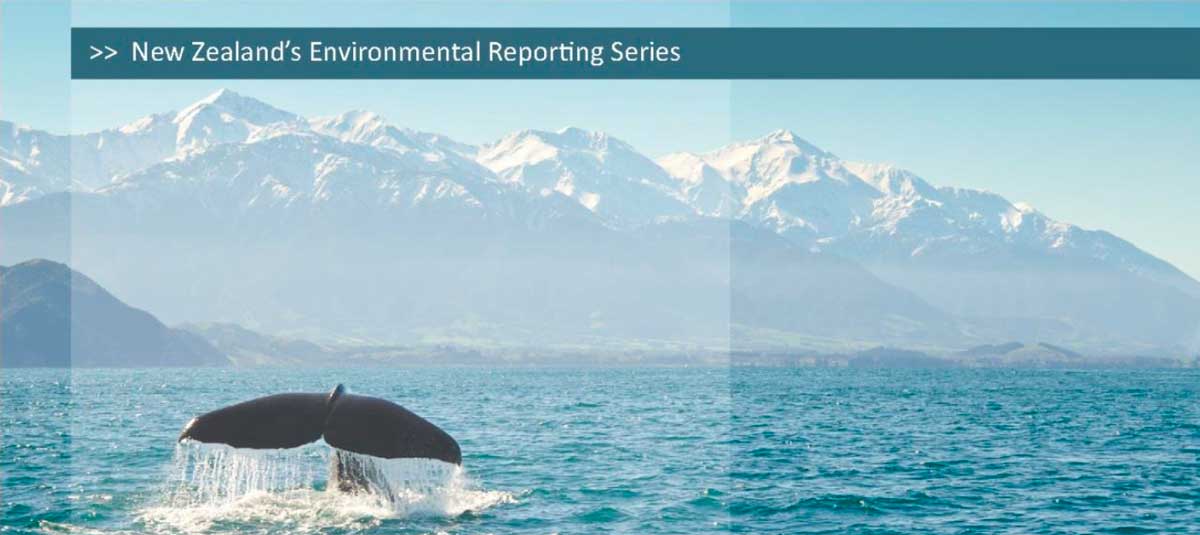
The Ministry for the Environment and Statistics New Zealand released the first individual “domain” report – on the marine environment – created under the Environmental Reporting Act 2015 in November.
The report identifies key issues facing our oceans, ocean acidification, threats to native birds and marine mammals and the state of coastal habitats.
Environment Minister Dr Nick Smith said environmental reports are fundamental to understanding and addressing environmental challenges – an area where data has been lacking.
He also said next year new legislation would replace the Marine Reserves Act “to bring our marine legislation into the 21st Century, recognising that we need varying levels of protection.”
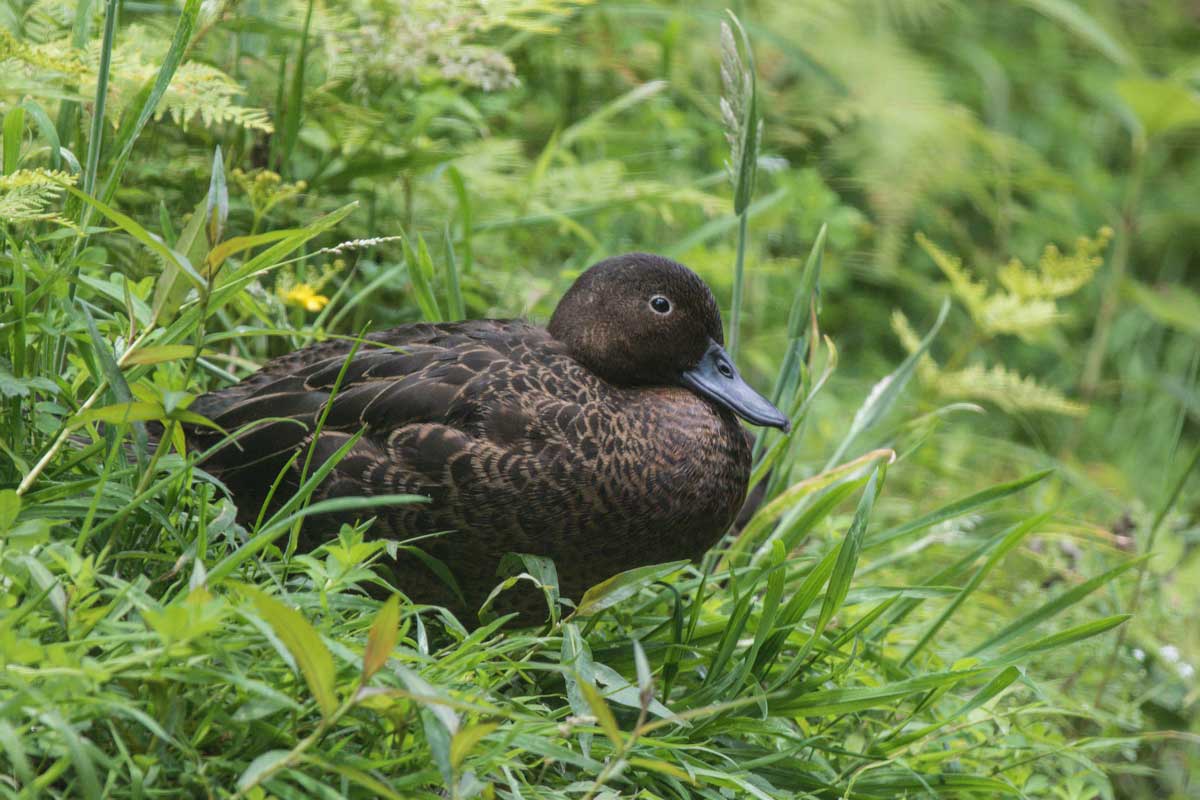
Great Barrier Island has a new Department of Conservation base at Okiwi, rebuilt and redeveloped following damage in the June 2014 cyclone.
Following the storm DOC has invested more than $2.5 million repairing tracks and facilities on the island.
Meanwhile, community trusts on Kotuku Peninsula, which includes Glenfern Sanctuary, and at Windy Hill Rosalie Bay have received funding of $108,000 to advance conservation work.
Rare species such as the black and Cooks petrels, pateke and chevron skink cannot survive without intensive pest control.
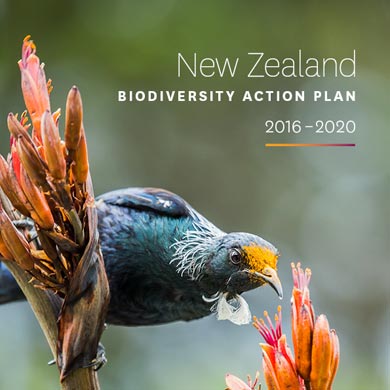
New Zealand has a new action plan setting targets for protection of our unique native animals and environment.
Conservation Minister Maggie Barry says New Zealand’s Biodiversity Action Plan 2016-2020 sets out how to turn the tide of biodiversity loss and counter threats to native species.
The updated Action Plan includes Predator Free 2050, the Government’s commitment to ridding the country of rats, stoats and possums.
It also includes targets to rid 500,000 hectares of wilding conifer infestation and expansion of the Healthy Nature, Healthy People programme.
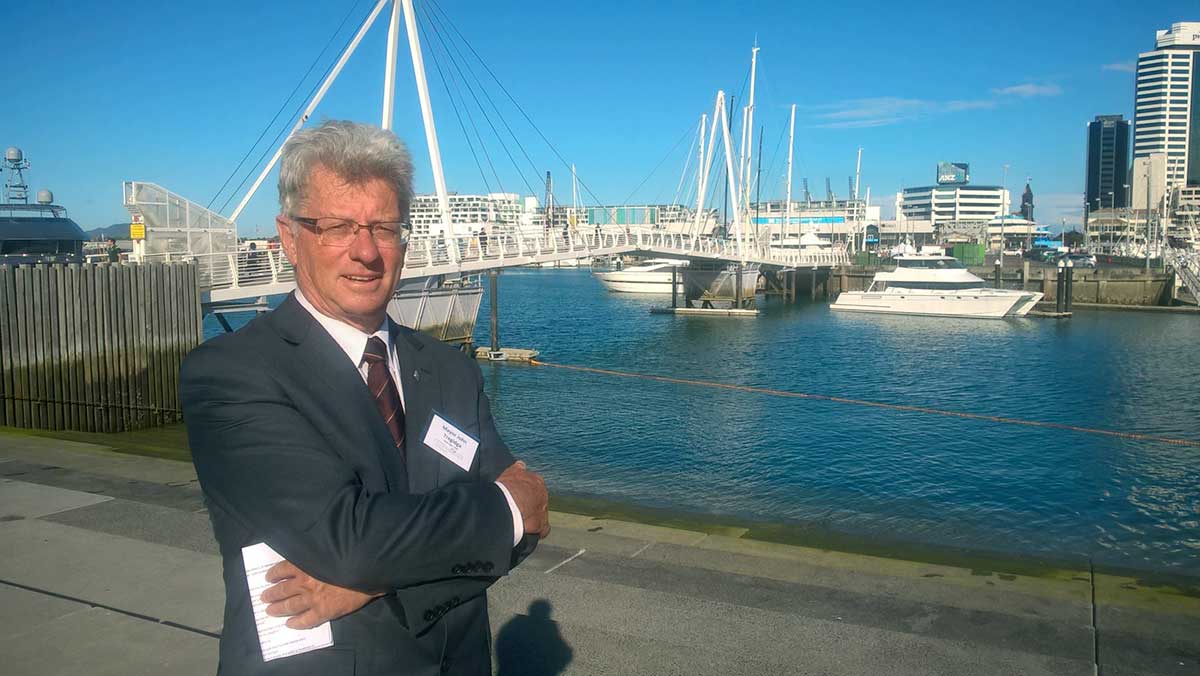
Innovative pathways result from wide enquiry and involvement
... READ FEATURE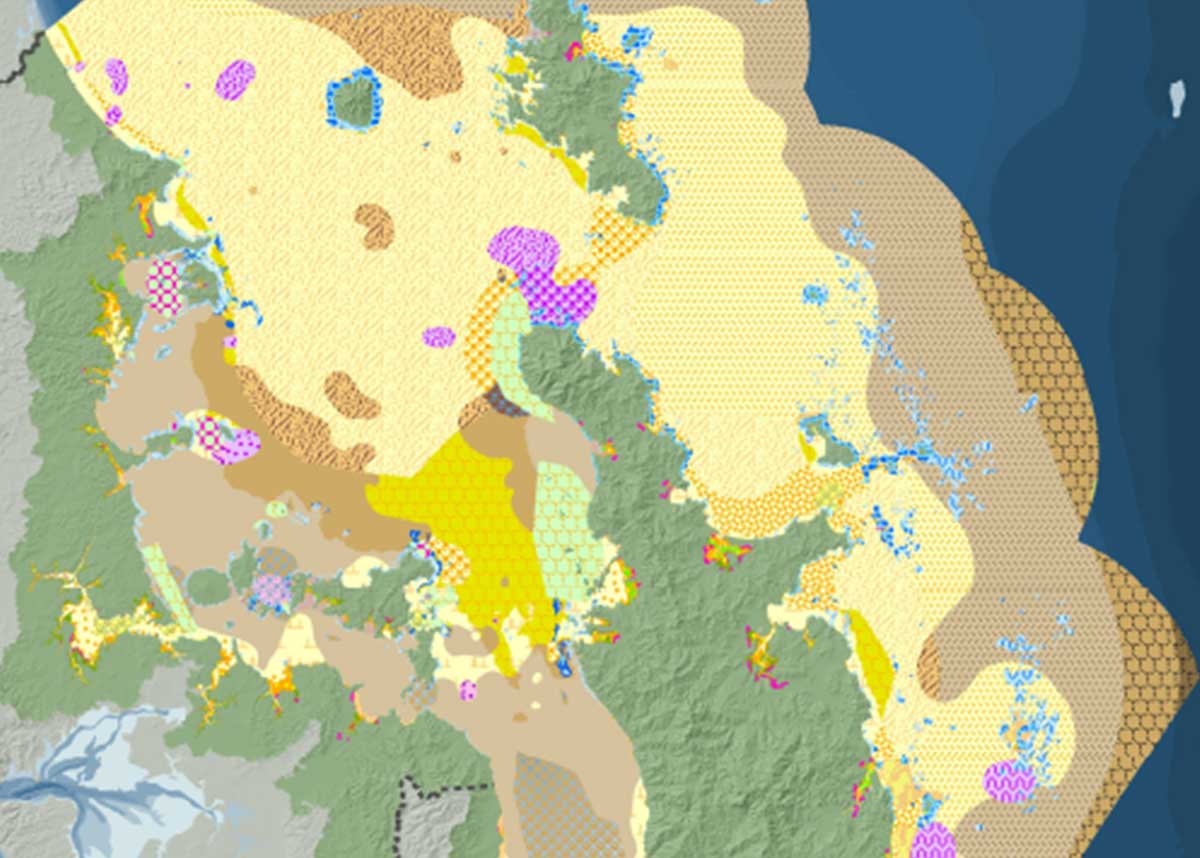
New protected areas and scaled up restoration
... READ FEATUREMinister for the Environment Dr Nick Smith has announced a new collaborative group to develop a National Policy Statement on Biodiversity.
The Biodiversity Forum will identify ways to improve native biodiversity on private land and will include representatives from Forest & Bird, Federated Farmers, the Environmental Defence Society and the Forest Owners’ Association, as well as iwi as Treaty partners.
Work will begin this year a National Policy Statement is due by mid-2018.
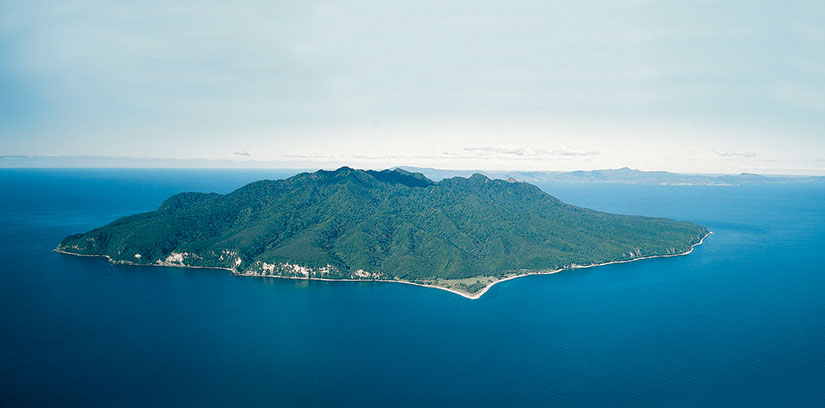
The public has until October 11 to submit on a draft Conservation Management Plan for Te Hauturu-ō-Toi/Little Barrier Island Nature Reserve.
The draft ten-year plan has been prepared by the Department of Conservation in consultation with the Ngāti Manuhiri Settlement Trust and the Auckland Conservation Board.
It is part of a redress contained in the Ngāti Manuhiri Settlement Act 2012 that acknowledged Ngāti Manuhiri as kaitiaki of the Nature Reserve and provided for co-governance.
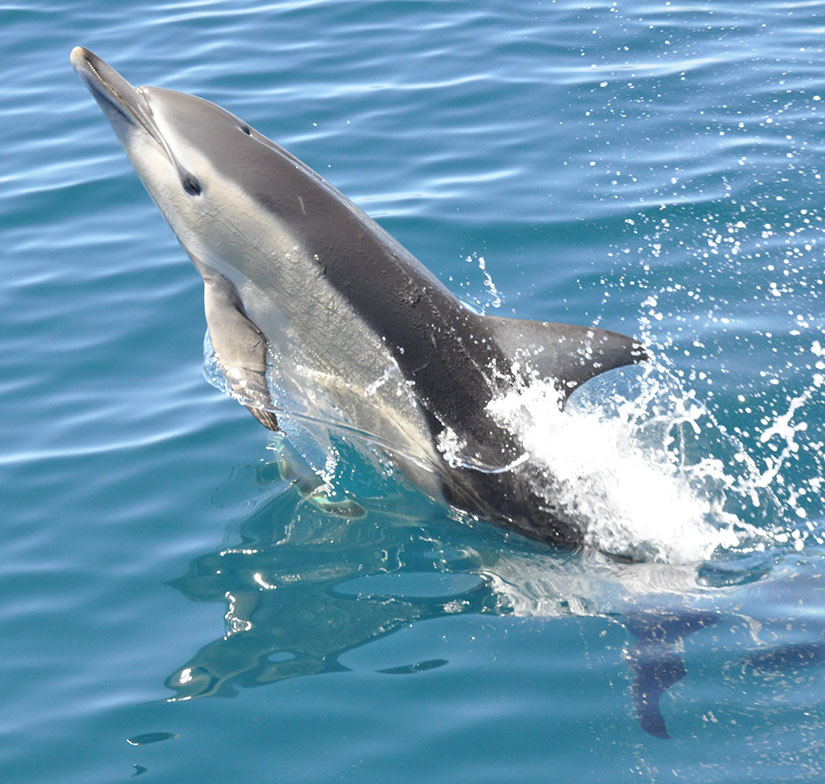
A recent thesis has provided the first population estimate of common dolphins in the Hauraki Gulf.
Massey University student Dr Krista Hupman estimated 10,500 common dolphins visited the Gulf between 2010 and 2013. The baseline abundance estimate enables monitoring and future re-evaluations.
While the most abundant of the Gulf’s dolphins, common dolphins face numerous pressures (including fisheries by-catch, pollution, vessel strike, and tourism) and the study suggests this population size should not be assumed to be sustainable.
Photo-identification and its application to common dolphins in the Hauraki Gulf, New Zealand
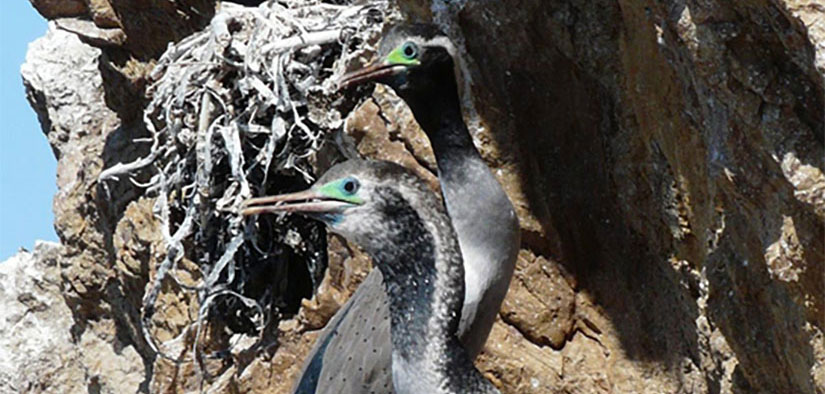
Surveys of parekareka/ spotted shags by Auckland Council show the importance of 300 remaining nests on predator-free Tarahiki Island and at the eastern end of Waiheke (at Hooks and Anita Bays).
No breeding colonies we found on Coromandel’s offshore islands, where they were reported before 2000, and have disappeared from many parts of the North Island. The birds are vulnerable to set nets, predators and disturbance at breeding sites.
Unique to NZ, spotted shags have distinct crests on their heads, a green patch near the eyes and dappled spots on their back during breeding season, in late winter and spring.

Great Barrier Island’s Windy Hill Sanctuary area has grown by 150 hectares thanks to the addition of private, family-owned land above Mulberry Grove.
Intense predator control across a total of 770 hectares will create an east to west coast corridor for birds and other threatened species.
Sanctuary trust manager Judy Gilbert said new pest management methods and equipment are enabling greater areas to be managed with the same level of resource. The sanctuary has trapped over 3500 rats per annum in recent years, benefiting birds, lizards, weta fruit and berries.

Big ambition
Scanning the content of this issue it is striking how many collaborative and co-governance processes are coming to fruition or being initiated.
The Department of Conservation has just released a draft Conservation Management Plan for Te Hauturu-ō-Toi/Little Barrier Island Nature Reserve created alongside Ngāti Manuhiri.
The Snapper 1 Strategy Group has agreed measures to rebuild the region’s snapper stock to a biomass target of 40% of the unfished state by 2040, while in the neighbouring Waikato and Waipa catchment a Collaborative Stakeholder Group has drafted a plan to make the rivers safe for swimming and food gathering in 80 years.
These are wickedly difficult challenges and the commitment and innovation required to resolve them is not easy.
The Stakeholder Working Group created three years ago to address challenges facing the Gulf will present its Sea Change Tai Timu Tai Pari marine spatial plan to sponsoring agencies shortly, before a public launch later in the year.
The Government has announced new challenges in the form of a public-private partnership to make New Zealand predator free by 2050 and a new Biodiversity Forum has been tasked with improving native biodiversity on private land.
On one hand it is easy to point out the challenges we face. The Forum has done that very effectively through its triennial State of our Gulf assessments. With the other it is harder to bind people into generating an adequately scaled and effective response.
But this is what we must do if we are to succeed in our role of protecting and enhancing the Gulf environment.
Our seminar this year Do the Right Thing looks to tease out the many strands required on that journey.
It is great to see the philanthropic sector coming on board to support the step changes that will be necessary.
Foundation North’s Gulf Innovation Fund Together (GIFT) will provide $1 million for the next five years to incentivise new ideas and prototypes. The Nature Conservancy will share its knowledge of ecological restoration and resource mobilisation with projects here, while the Tindall Foundation and the Next Foundation are already big and strategic players in the Gulf.
The next term of the Forum will be an exciting one as it looks to build on success and strengthen its leadership for changing times.
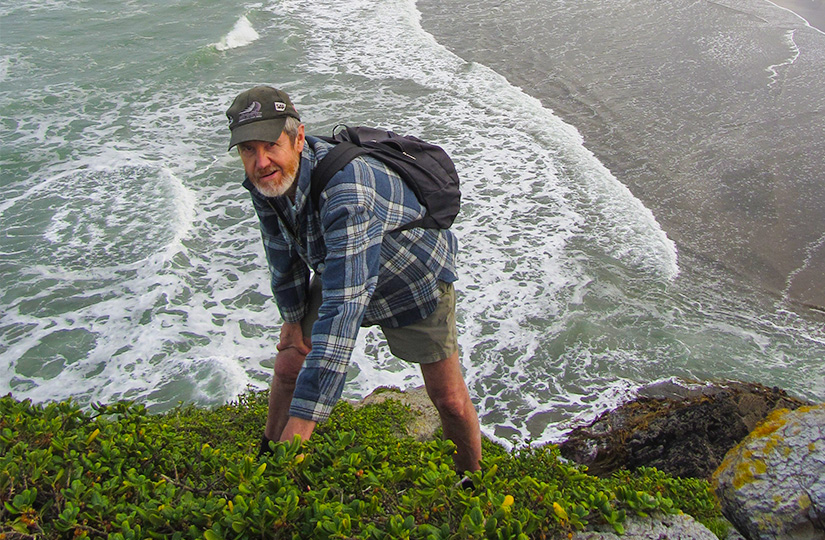
Covering three hectares, Tatapihi Island is the largest Gulf island to have no weeds and supports 20 vascular plant species, 2000 pairs of diving petrels and seven lizard species.
... READ FEATURE
Crayfish used to be so numerous around the fringes of the Gulf’s coast that they could be picked up out of the shallow seaweed by their feelers. Fishermen harvested them by the sackful.
... READ FEATURE